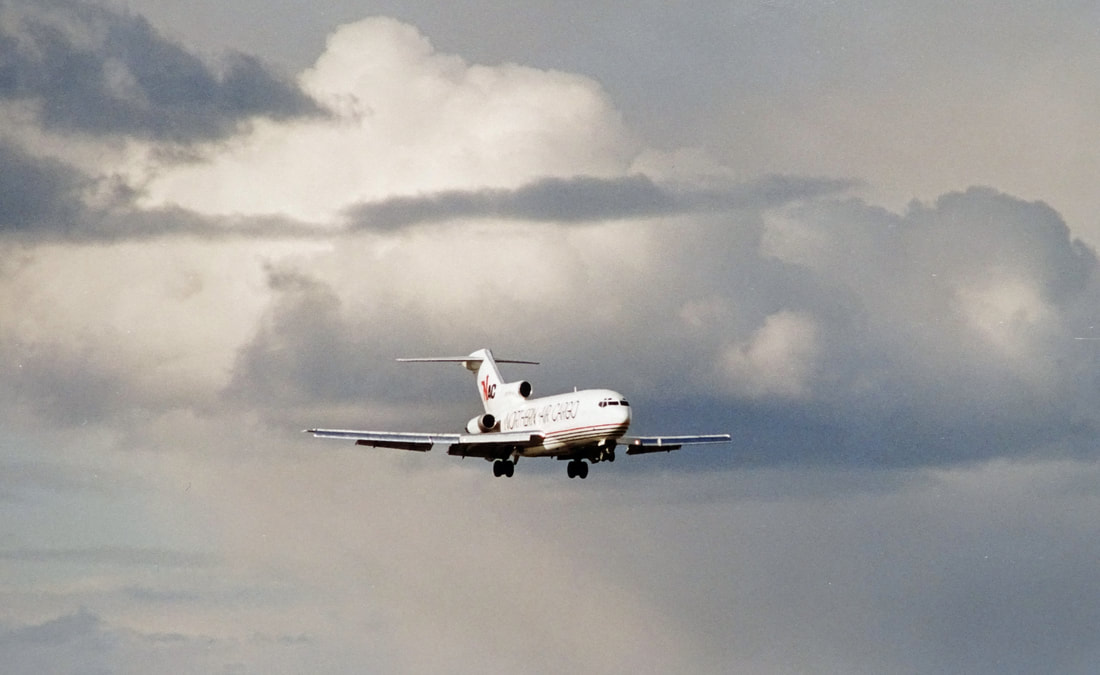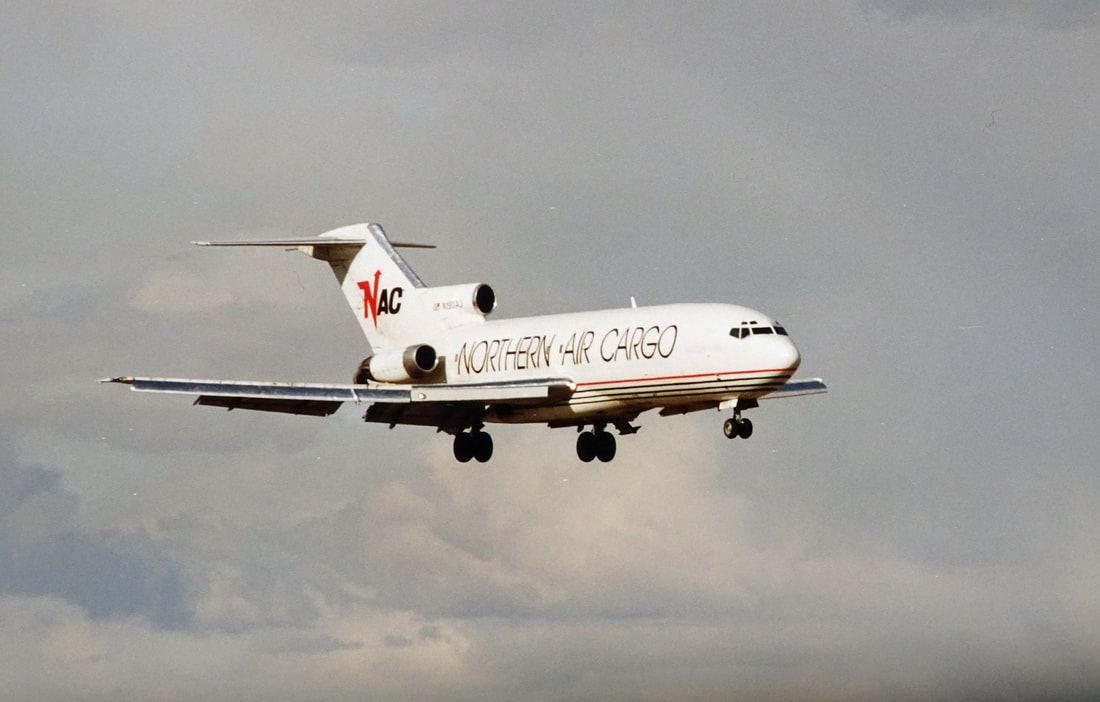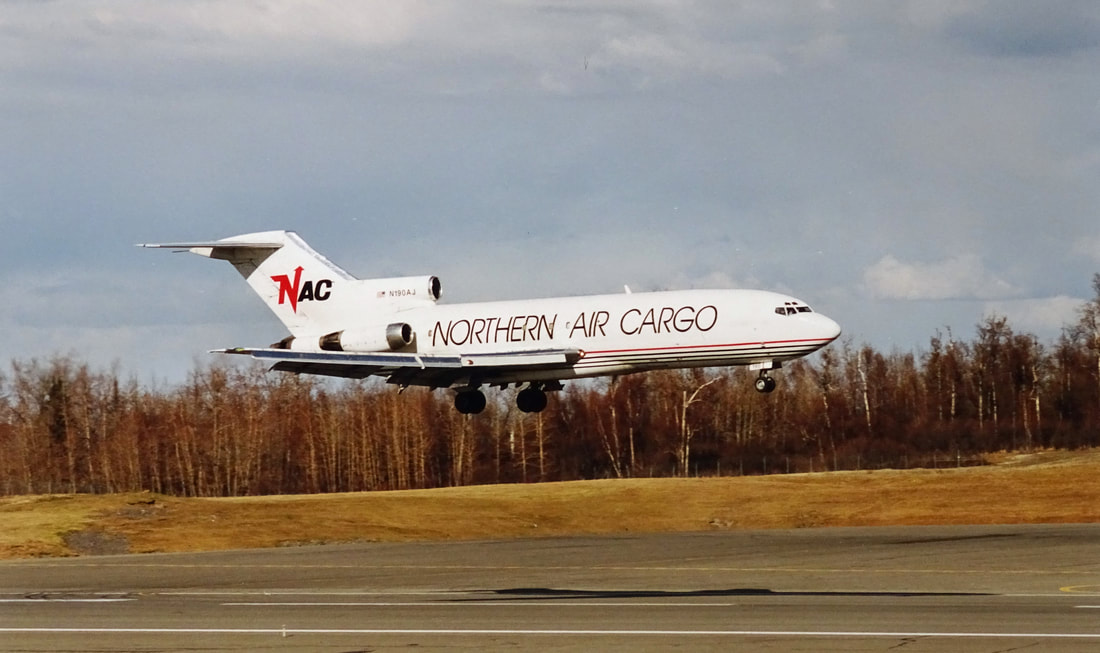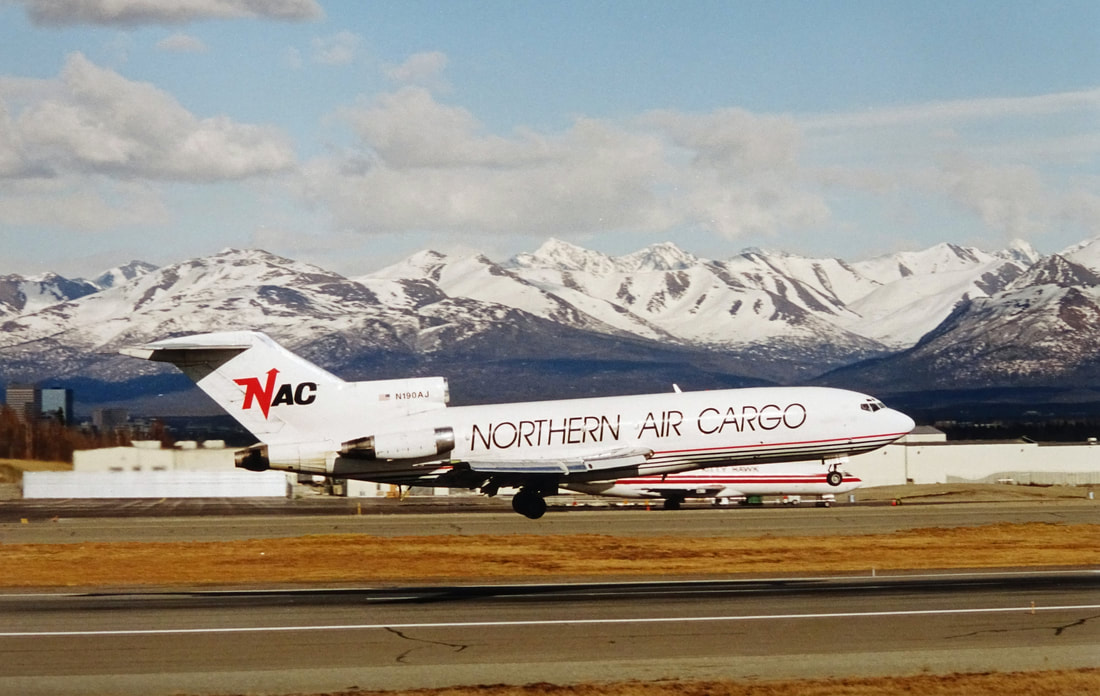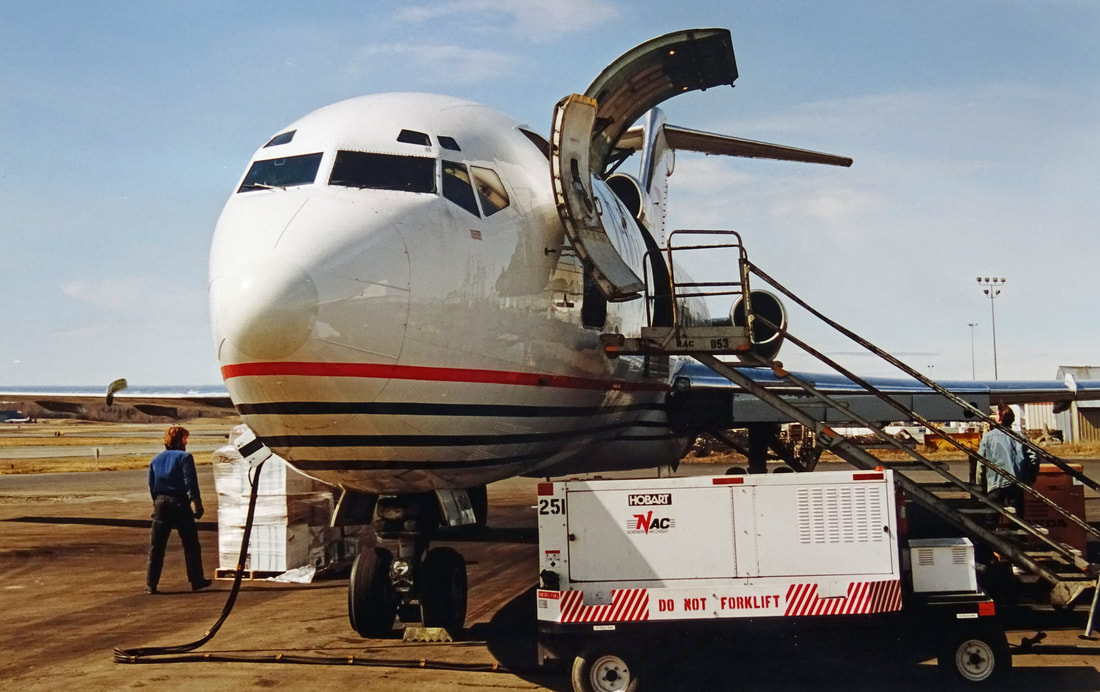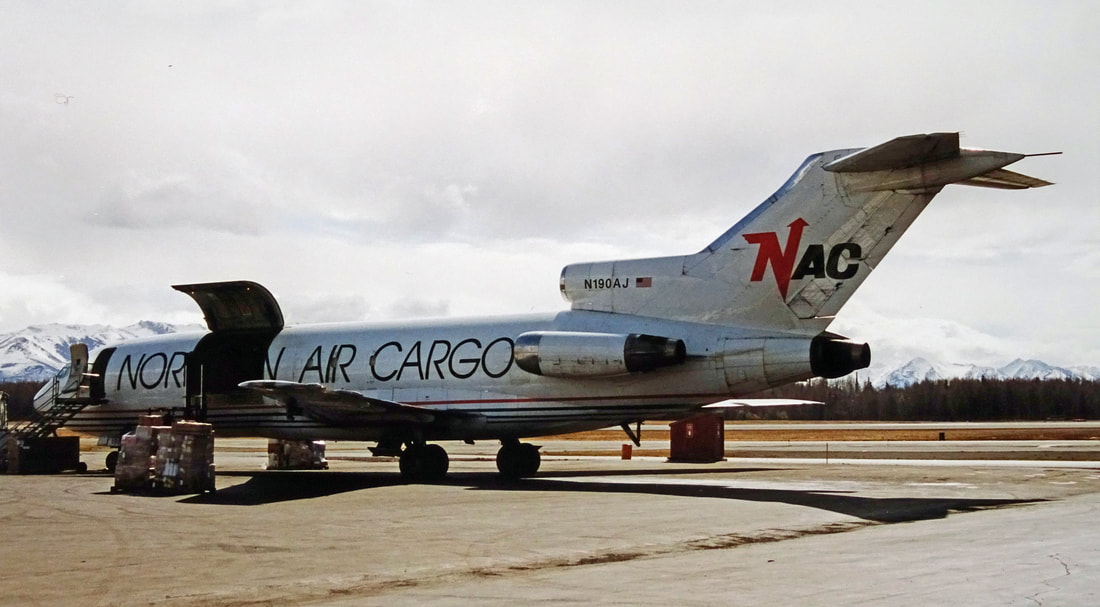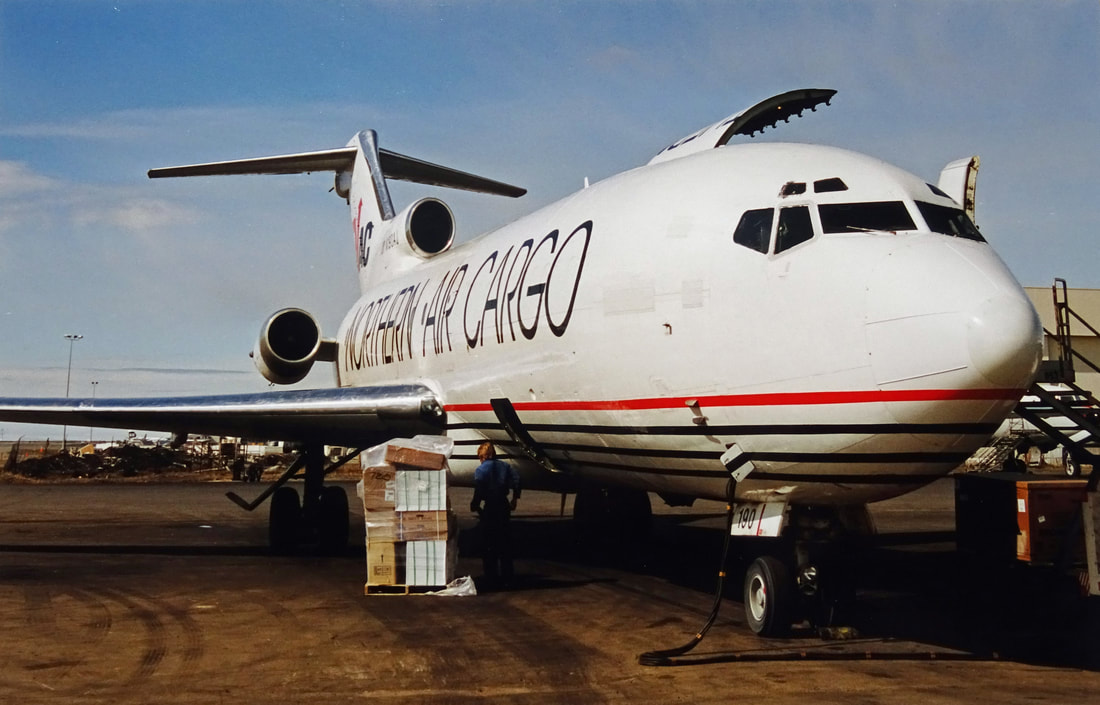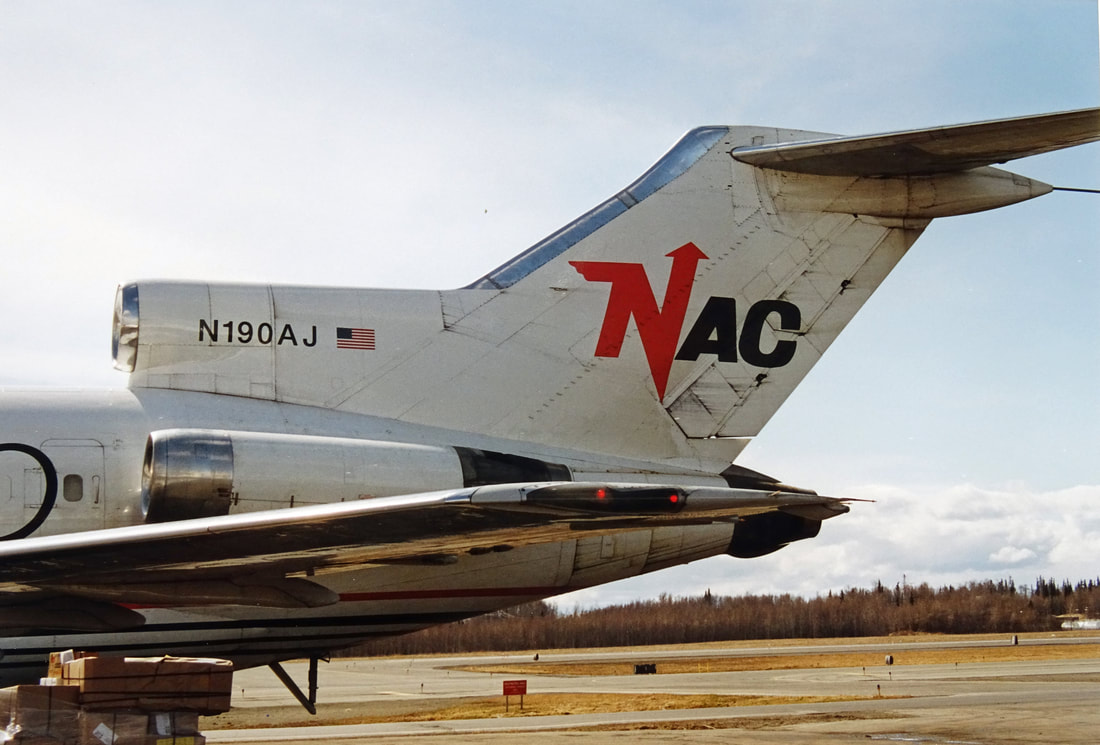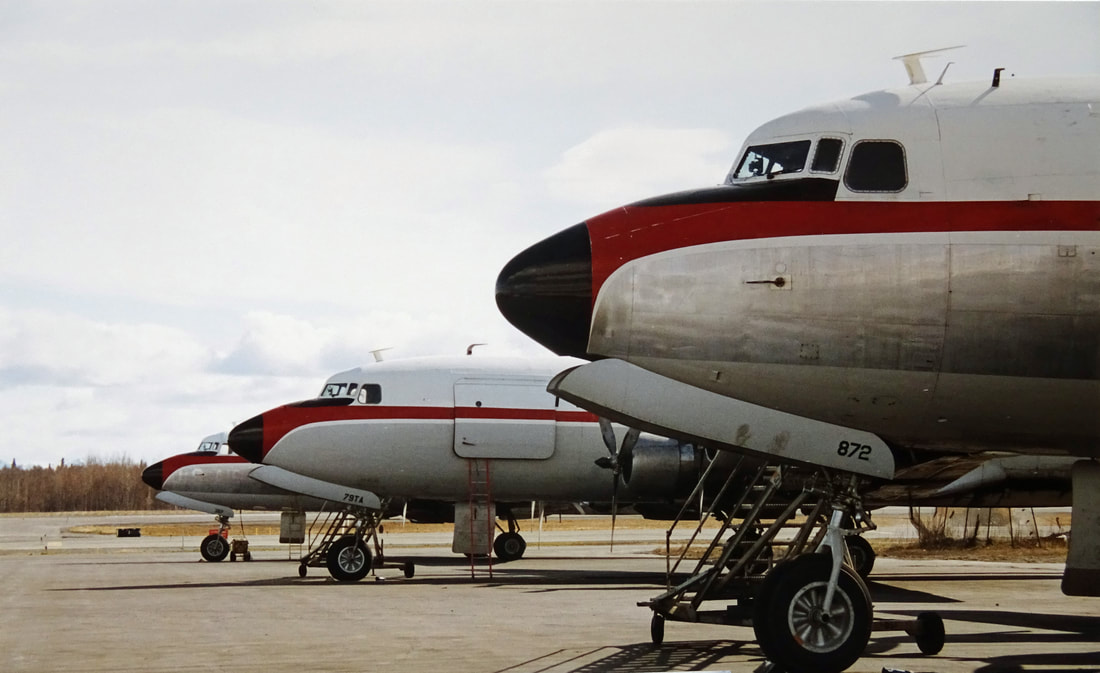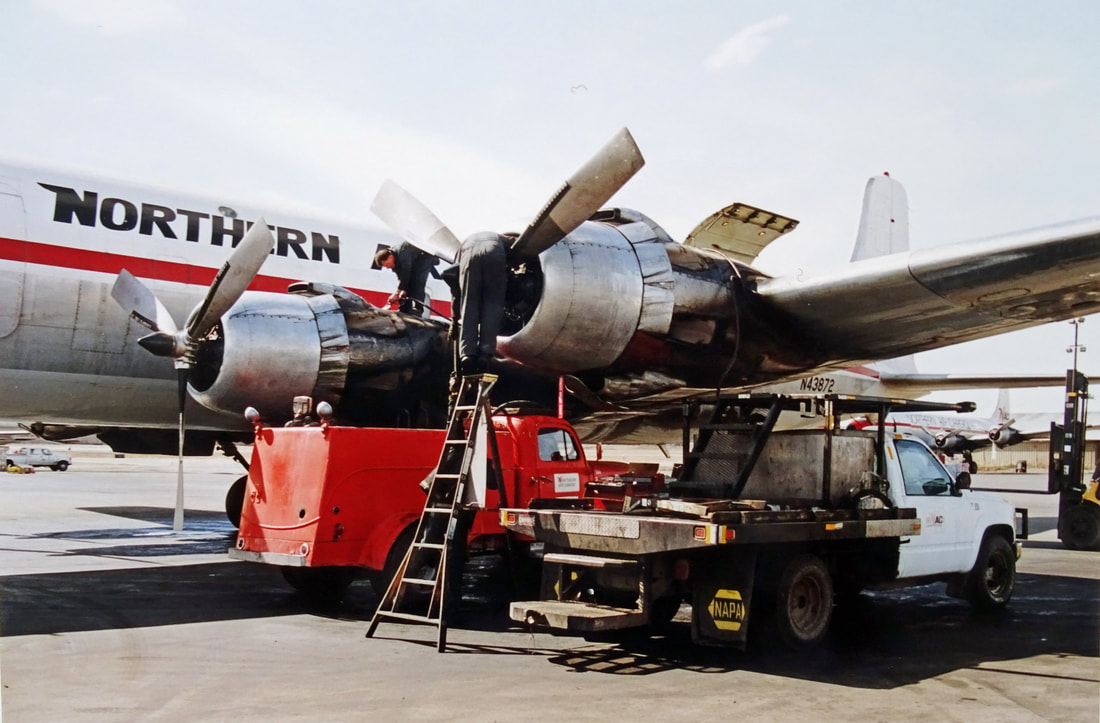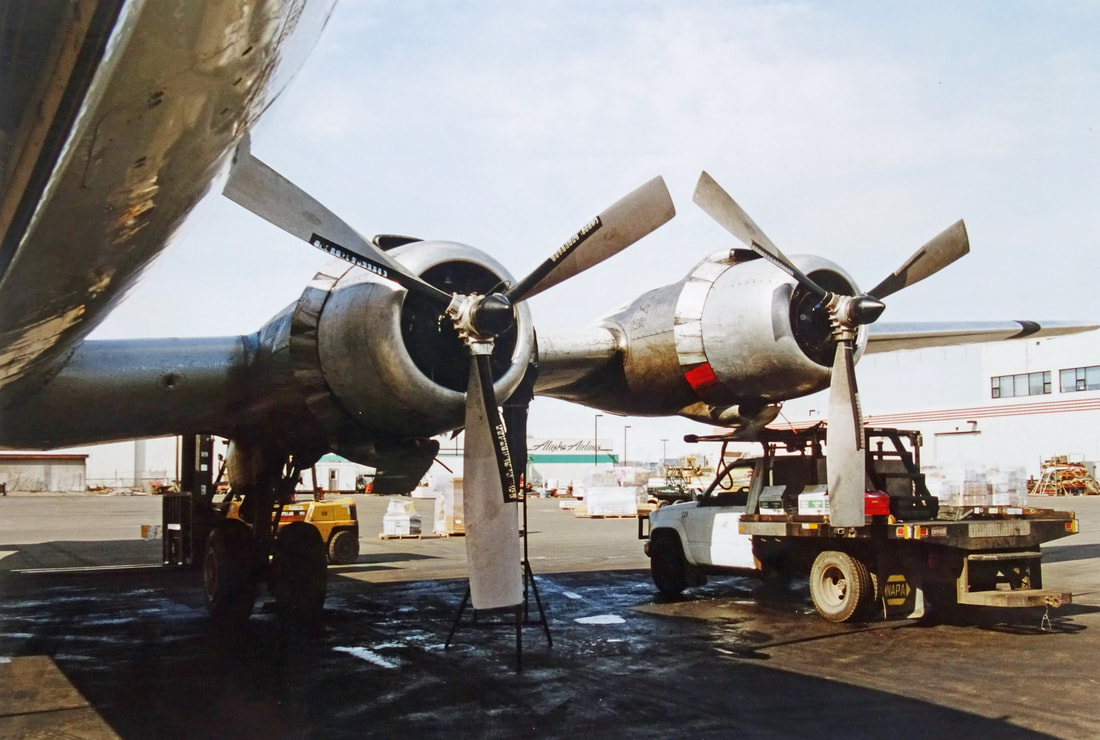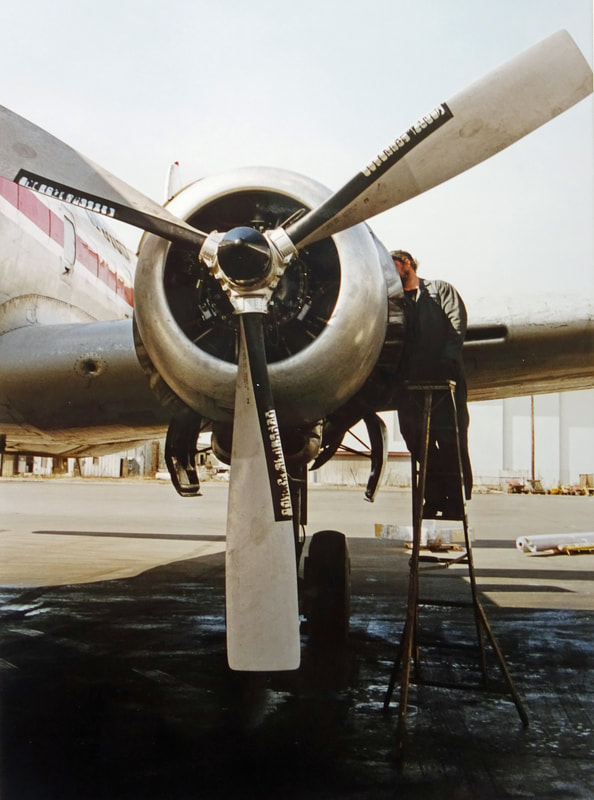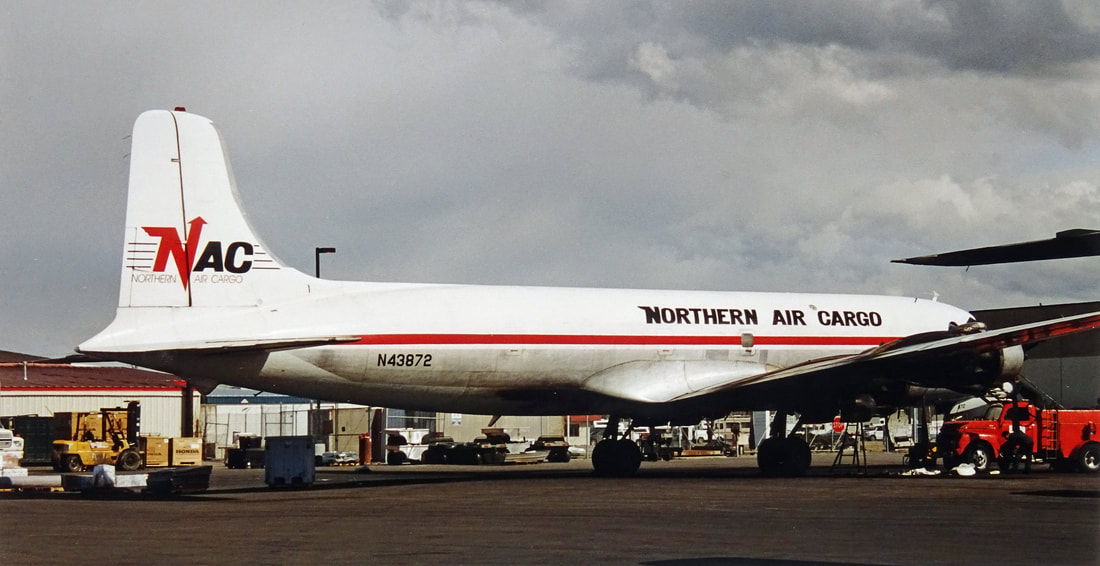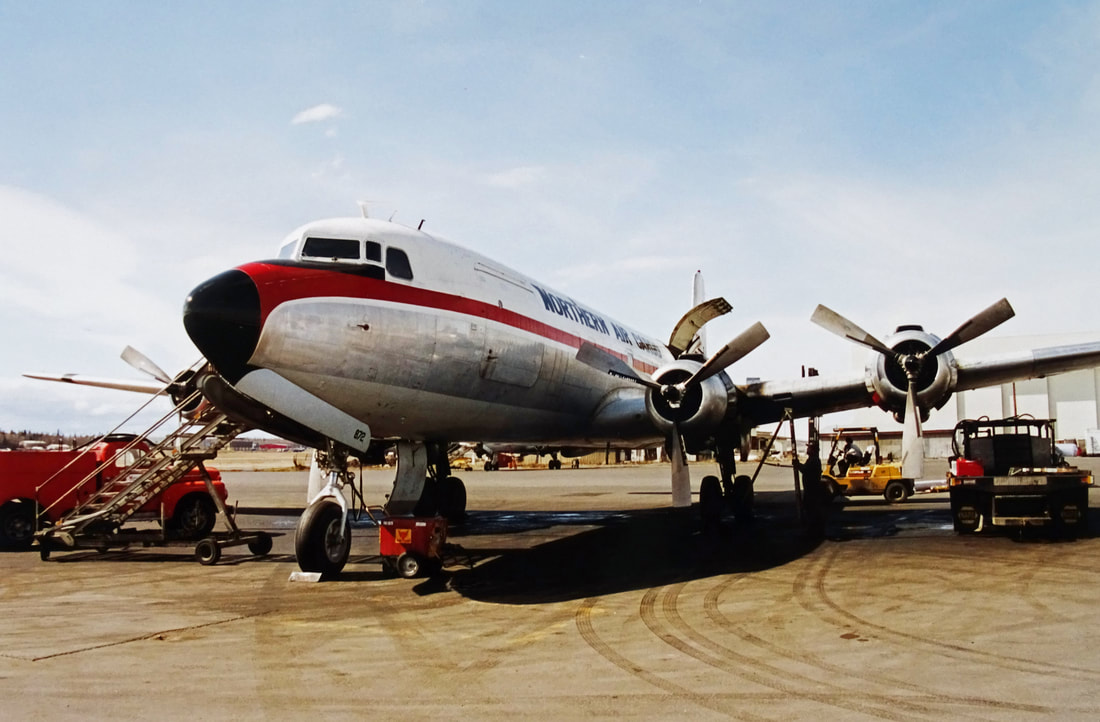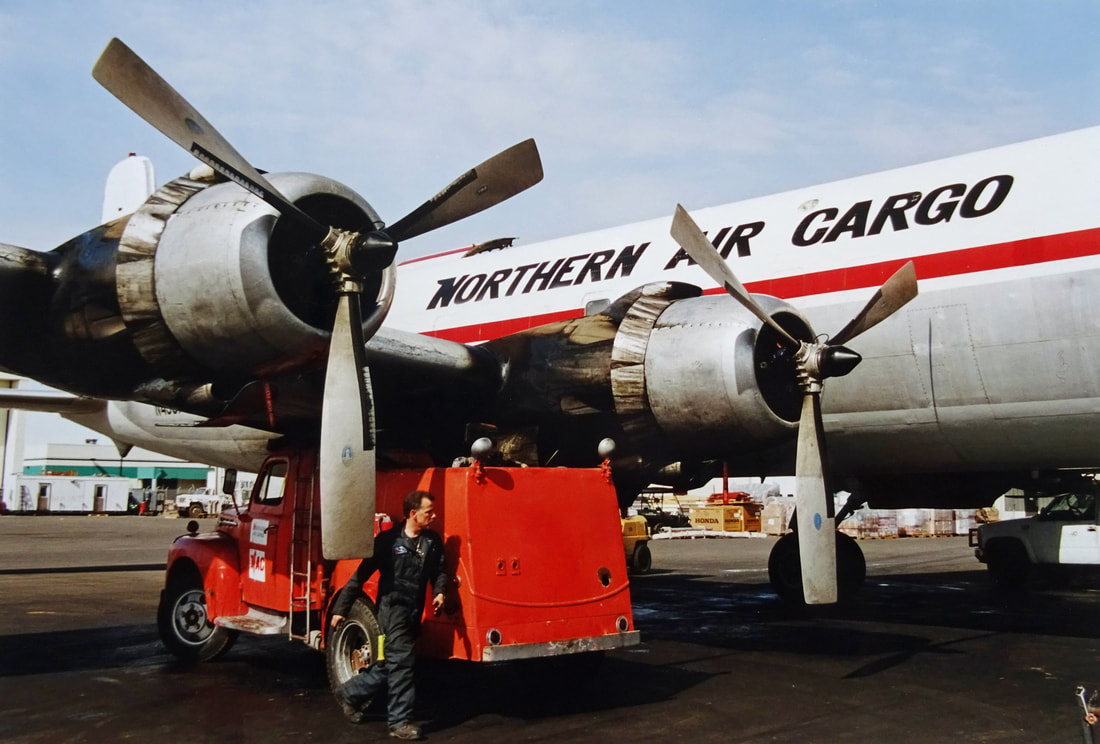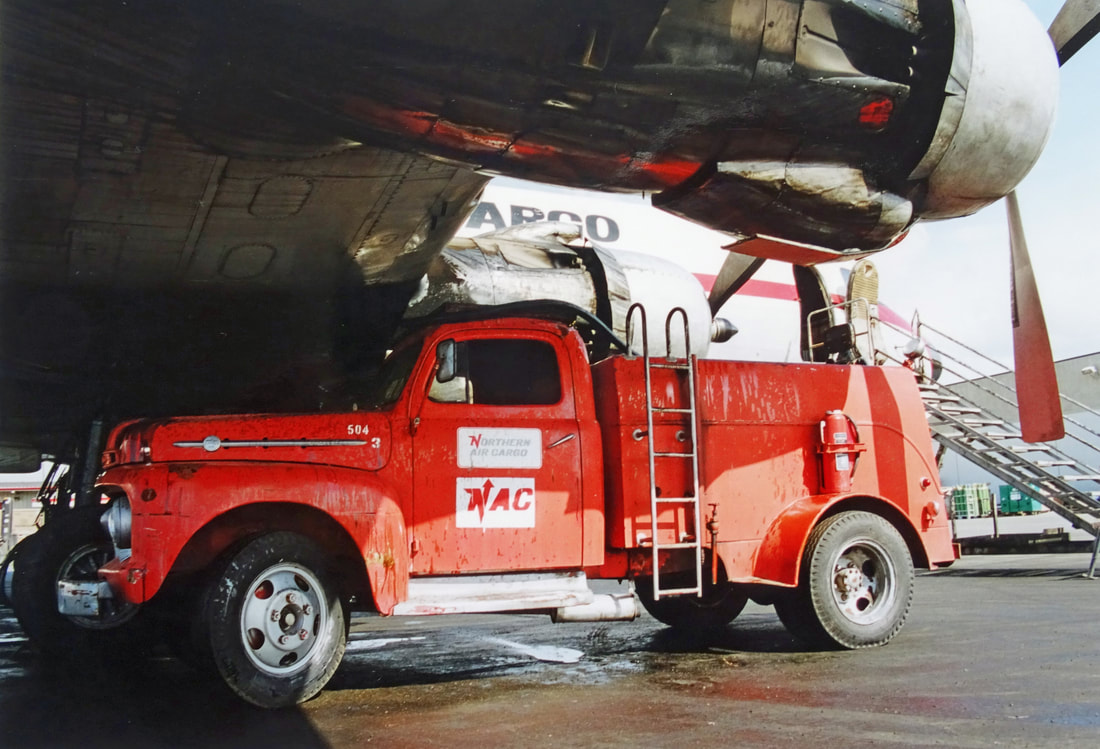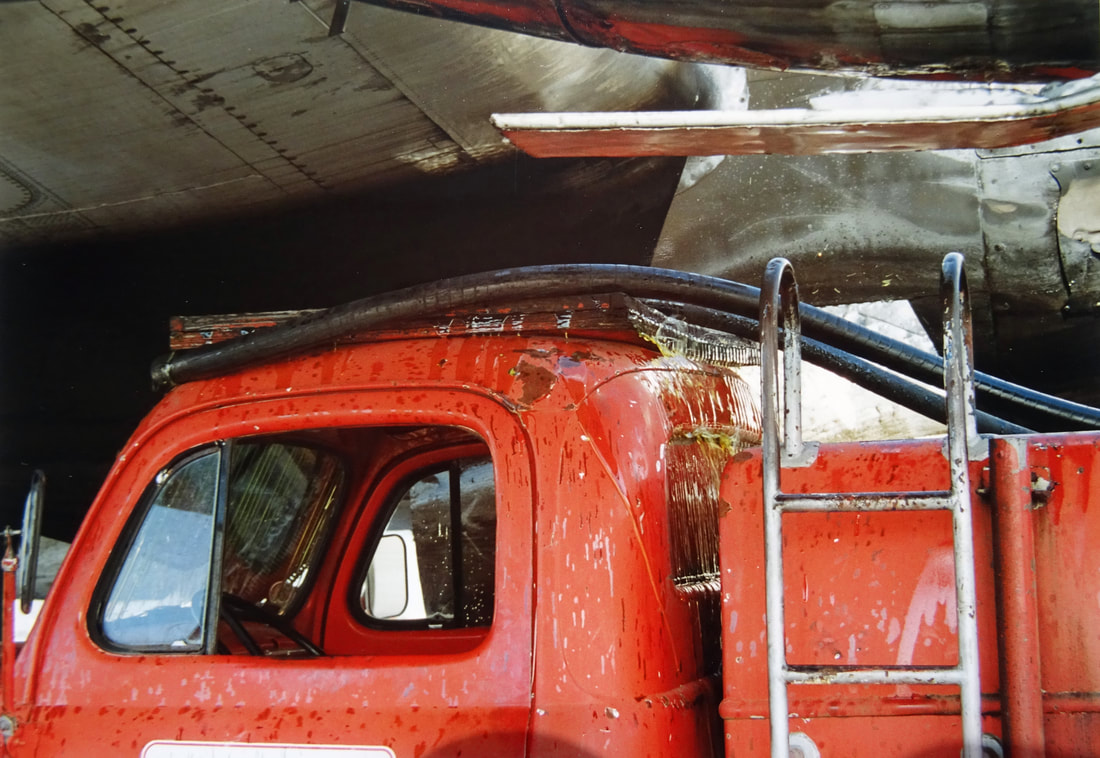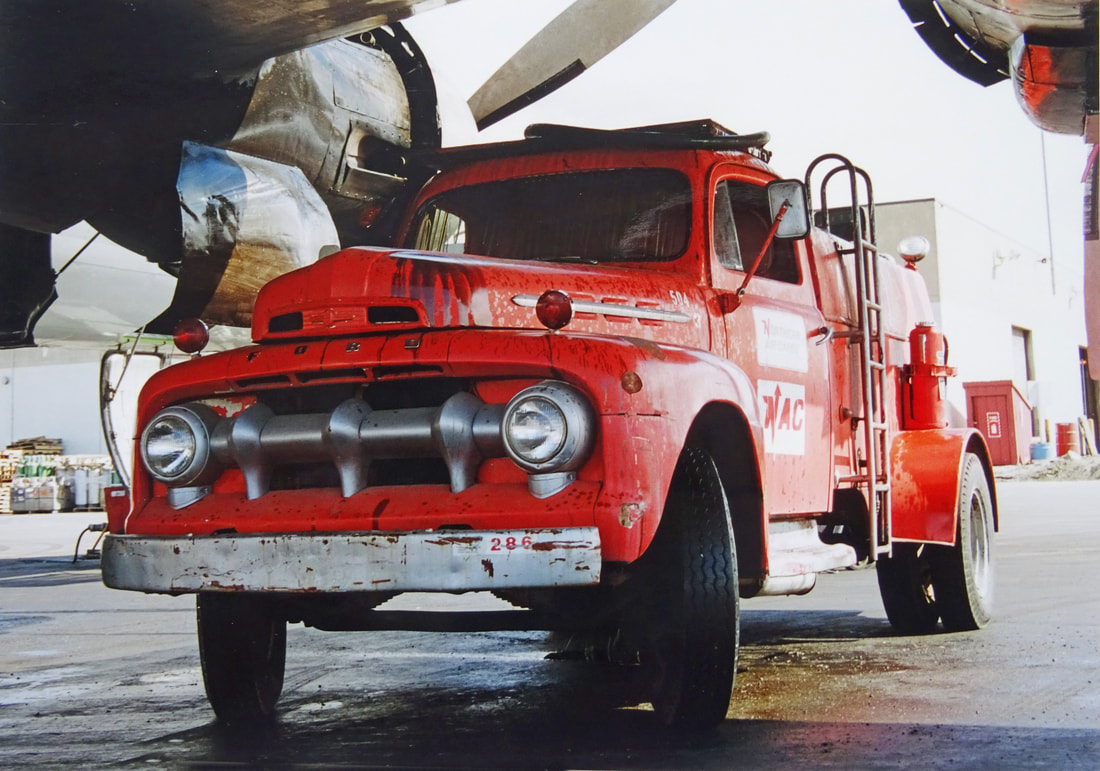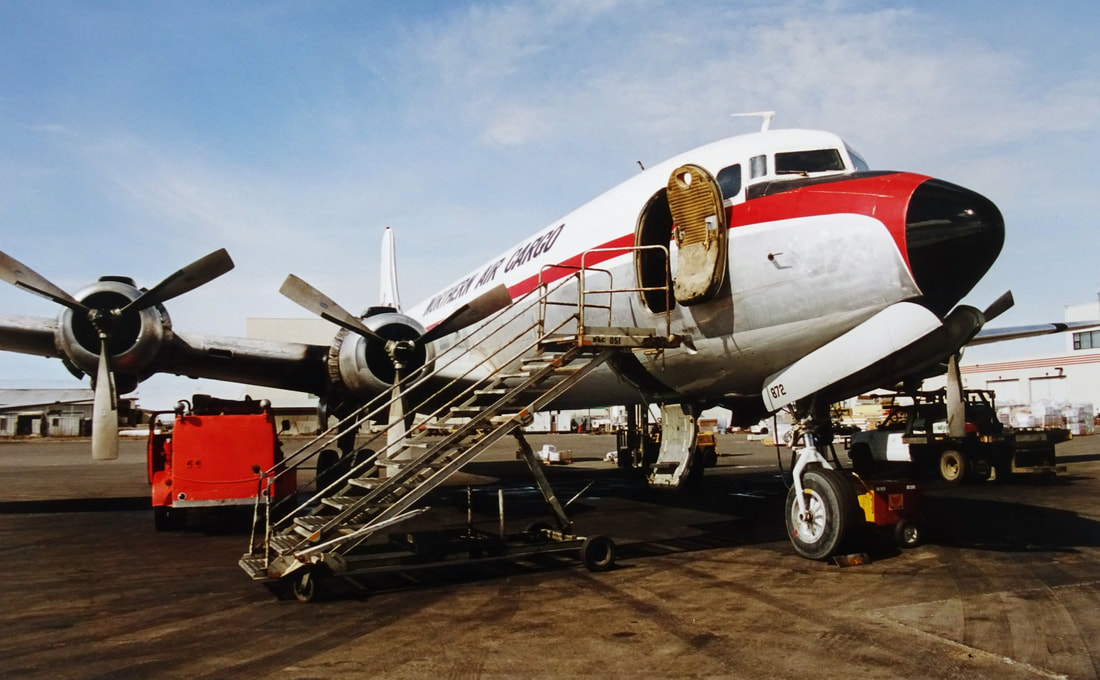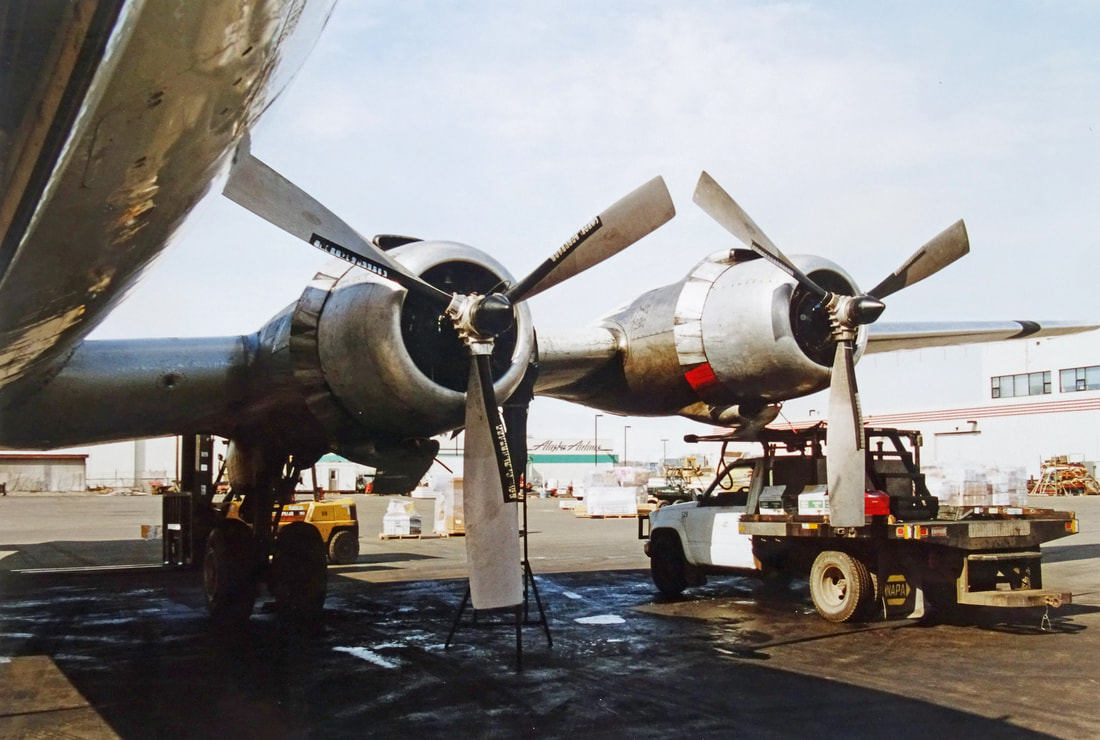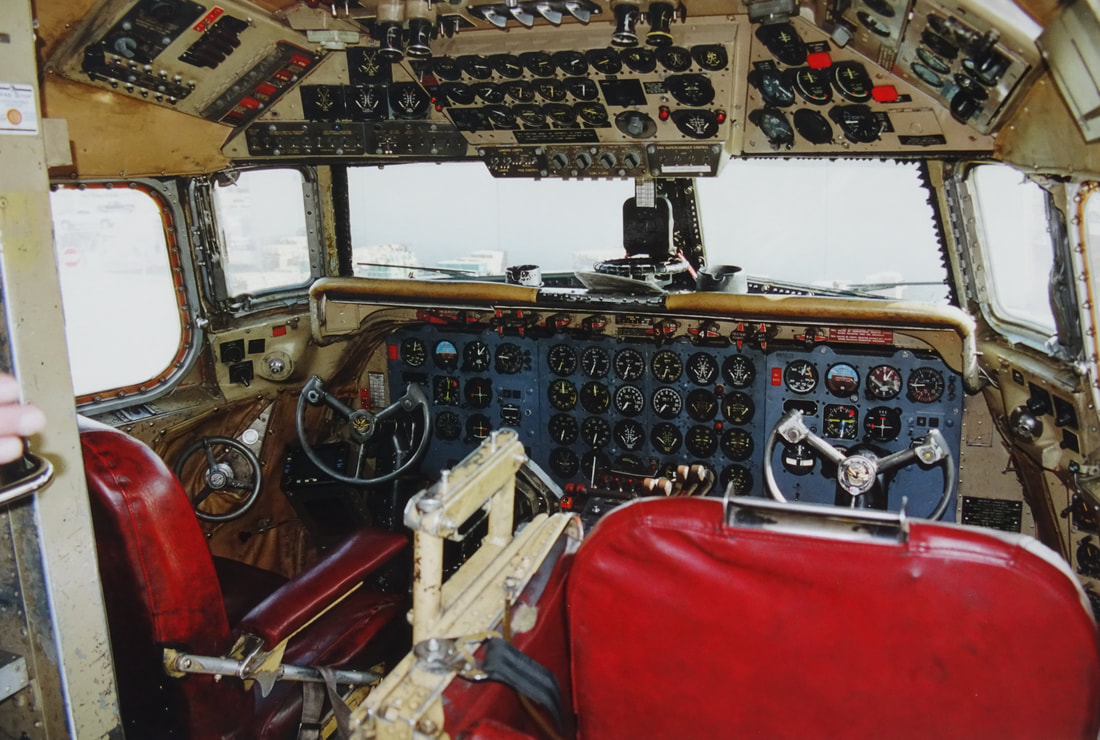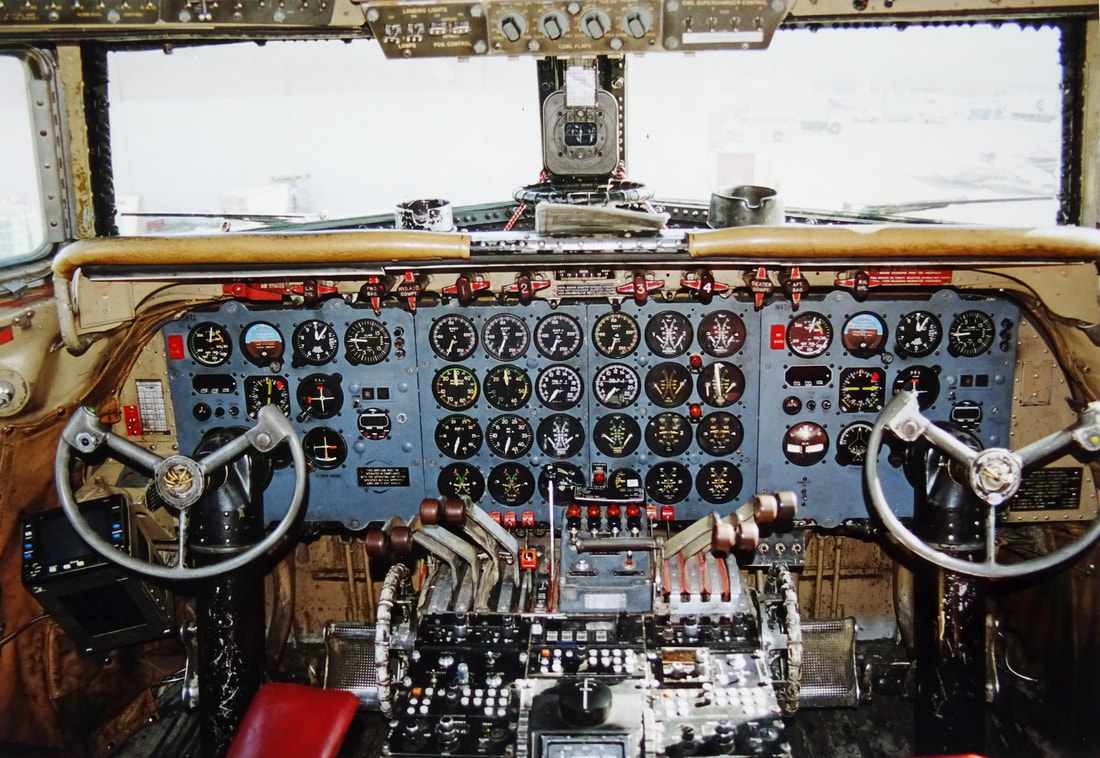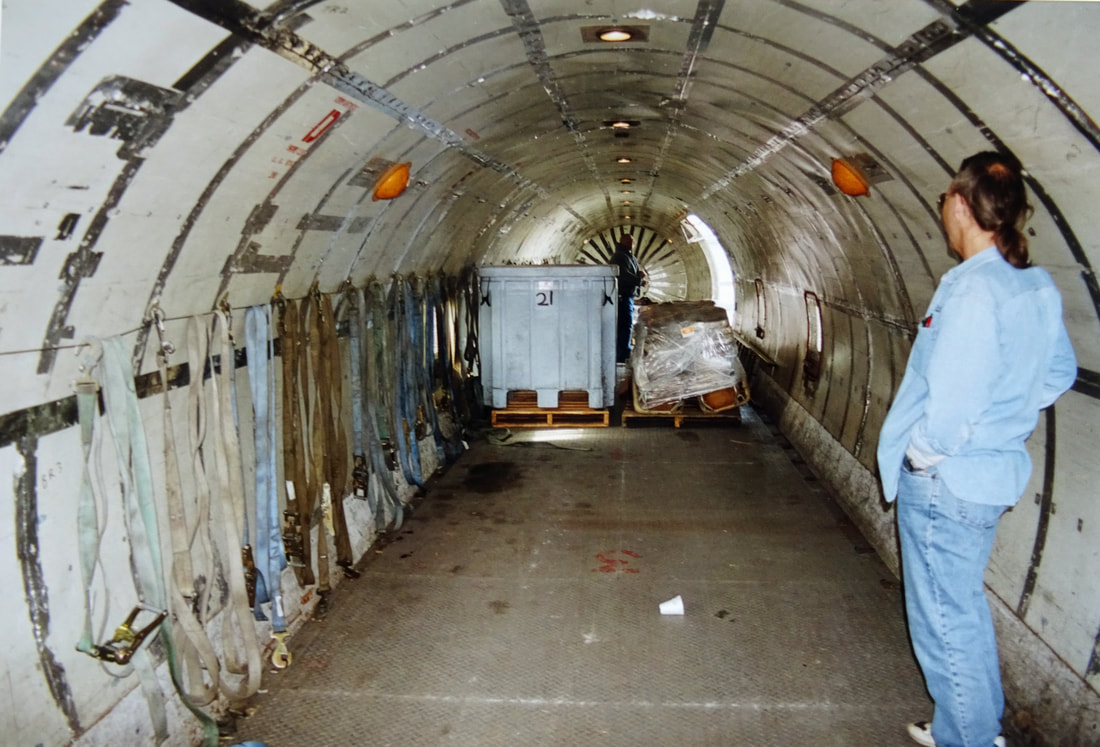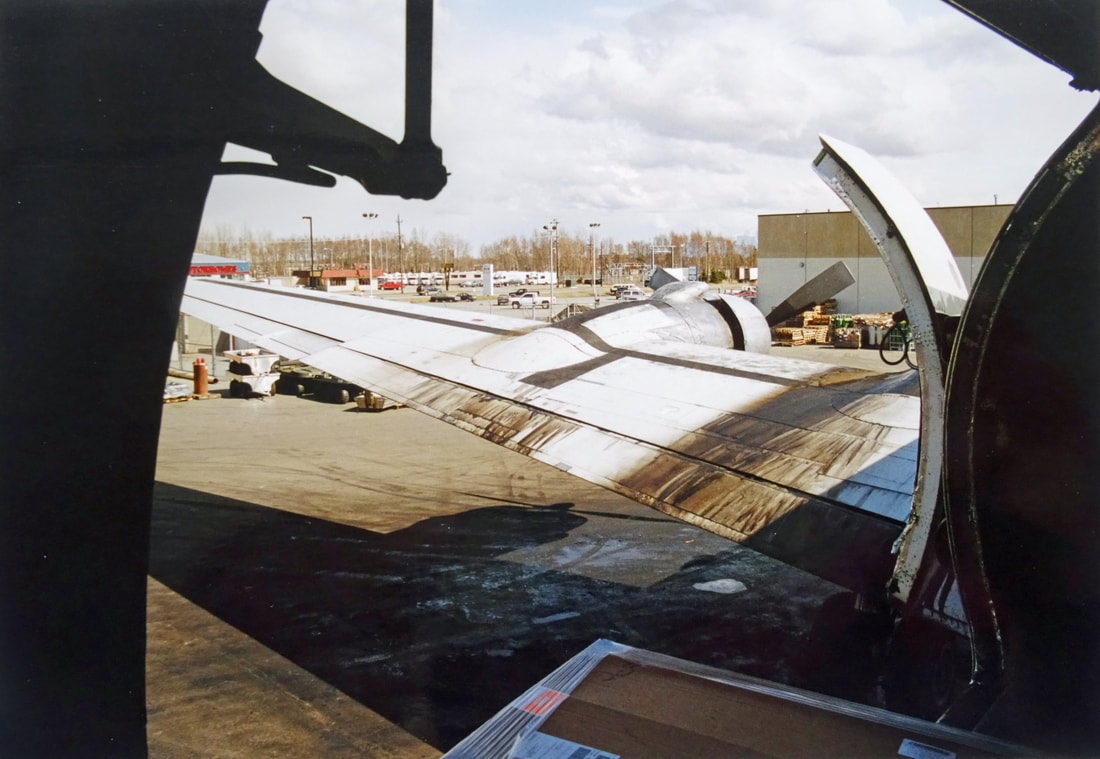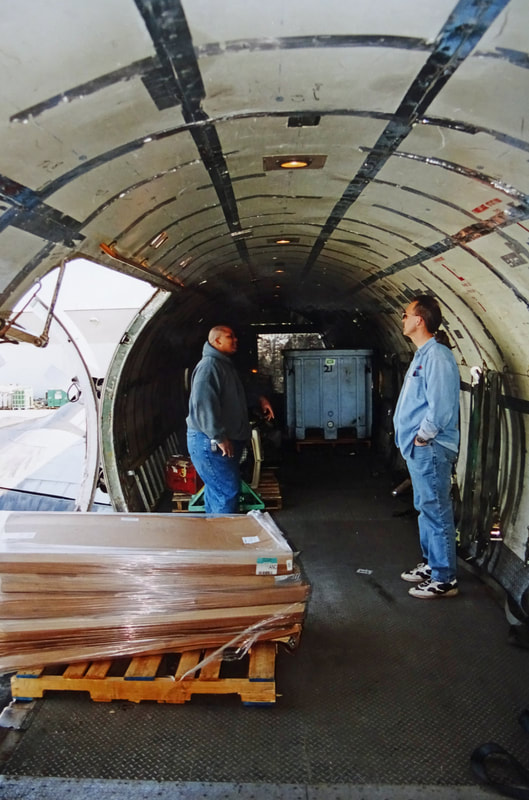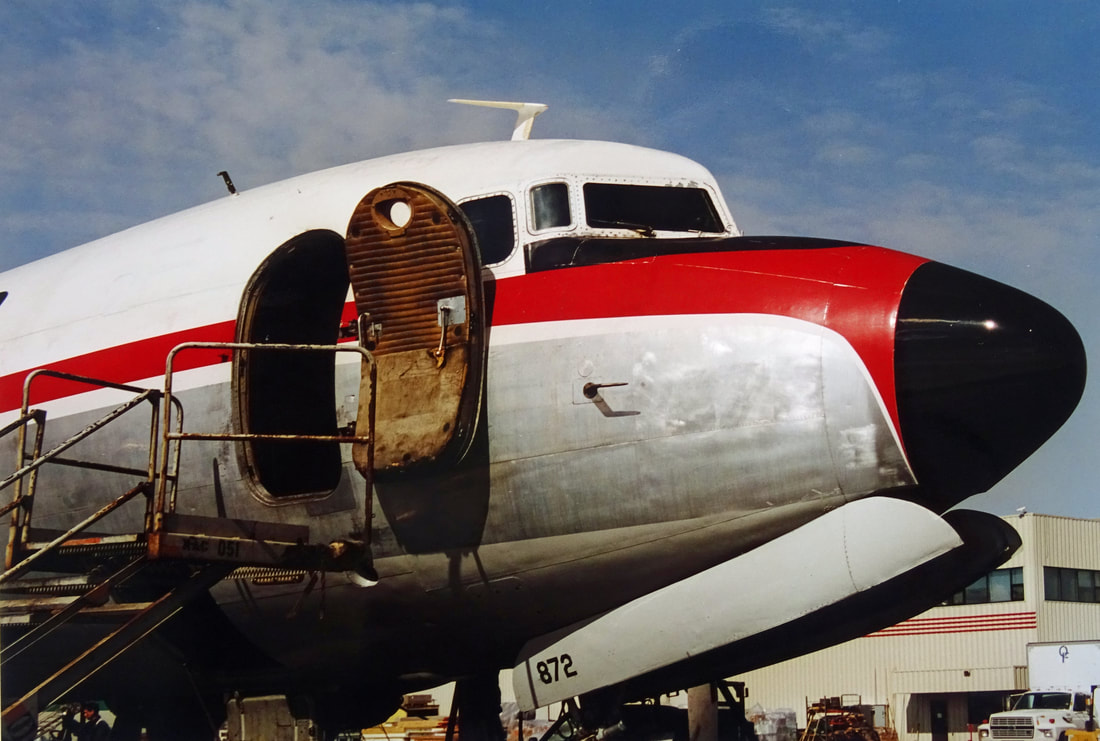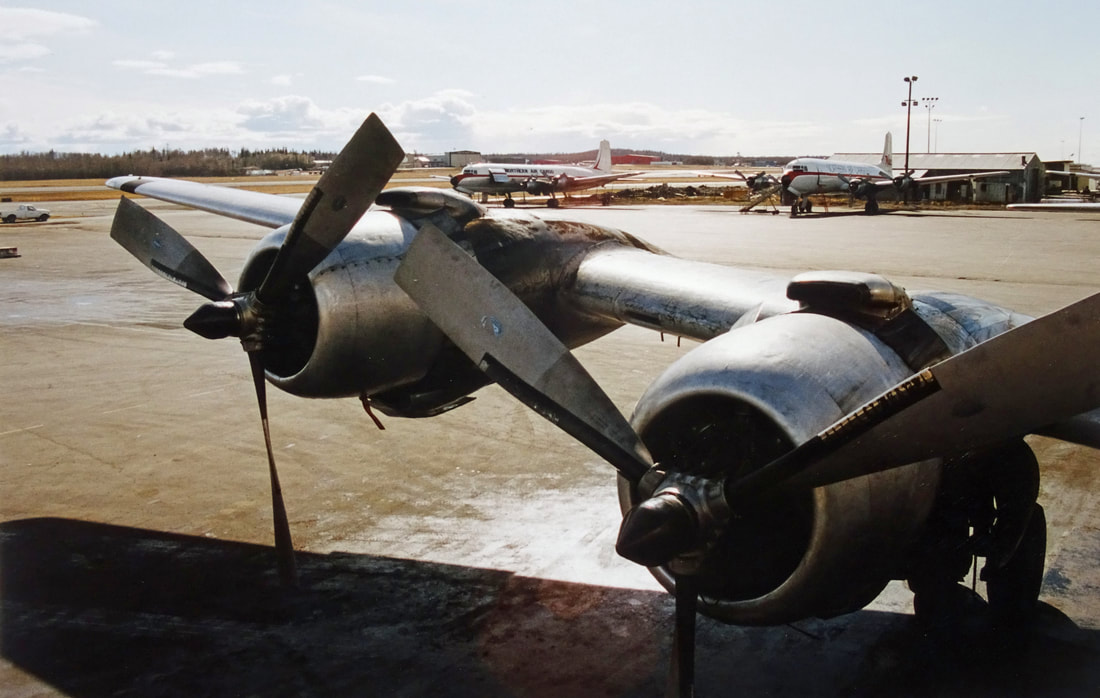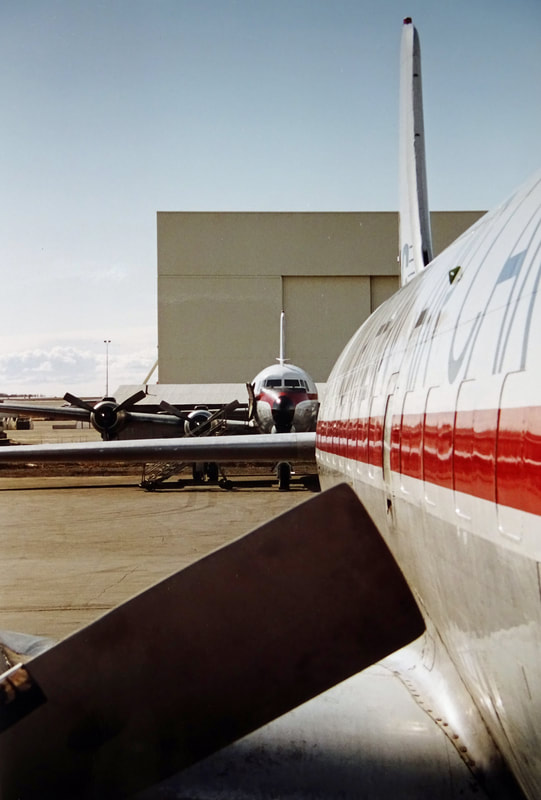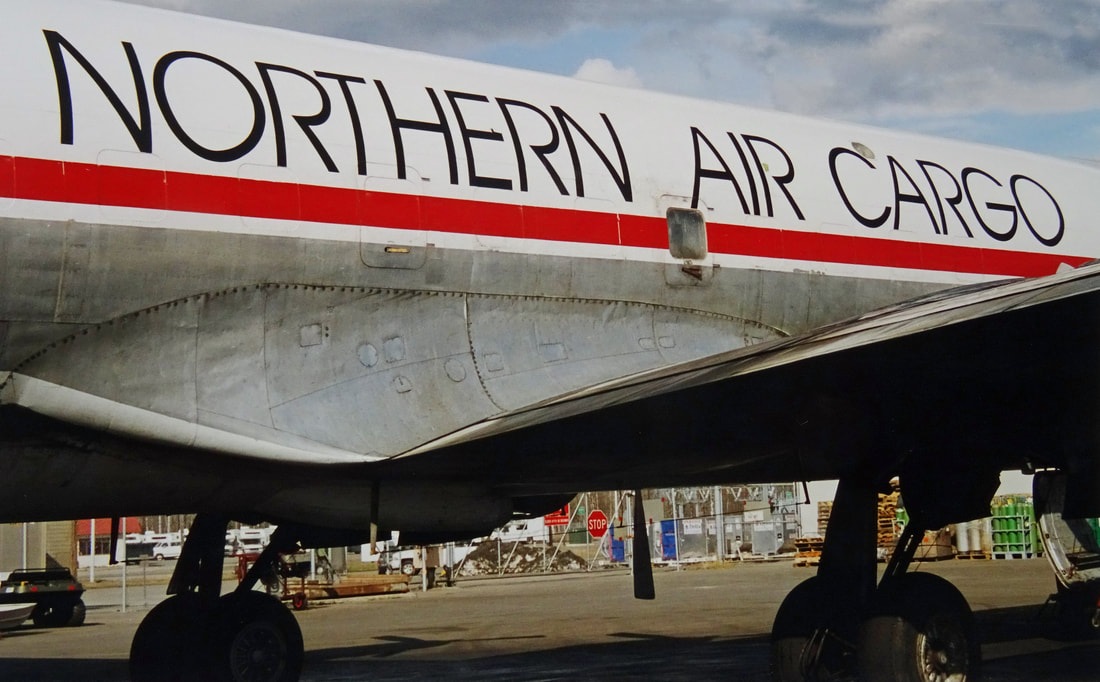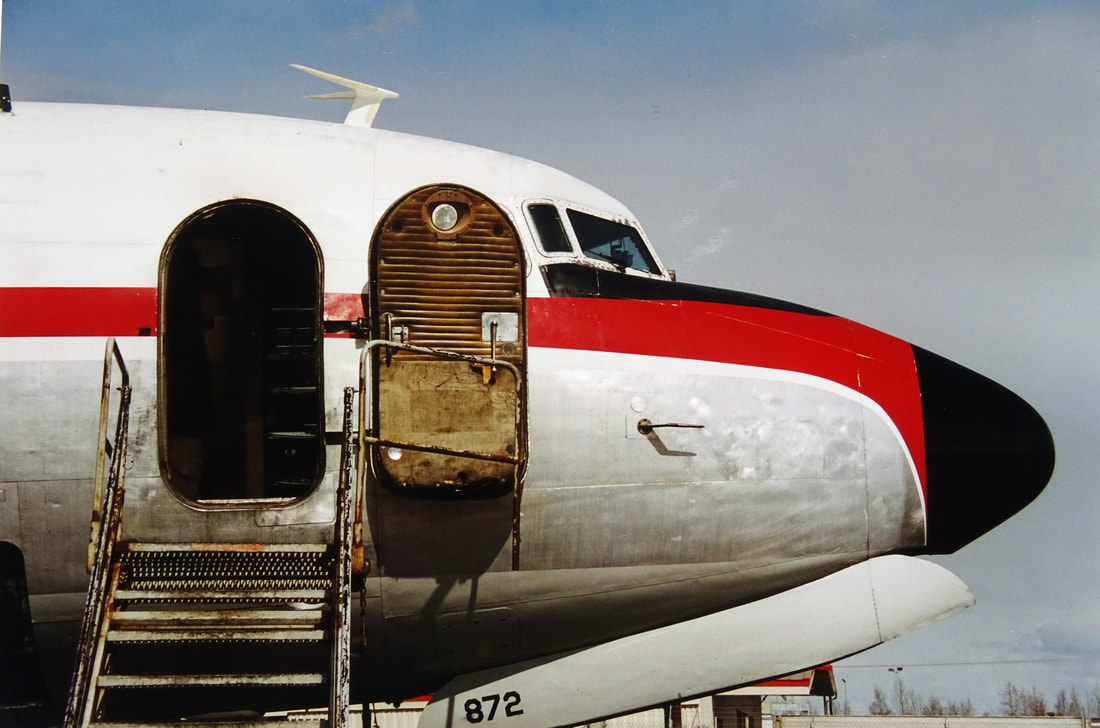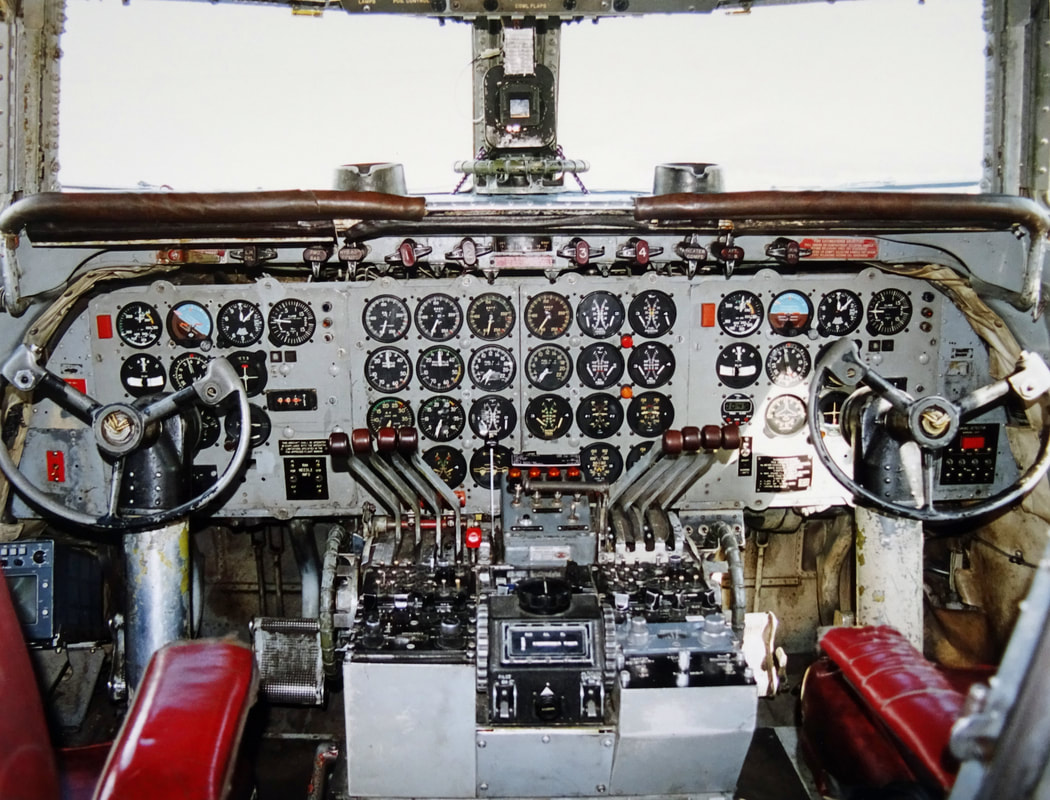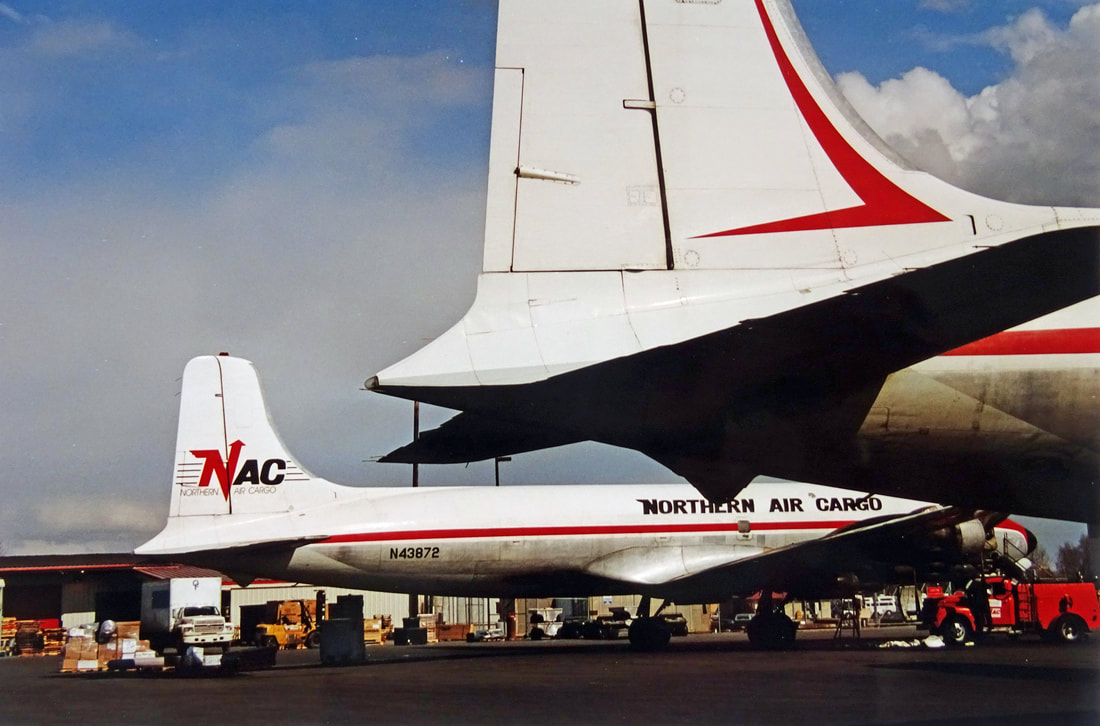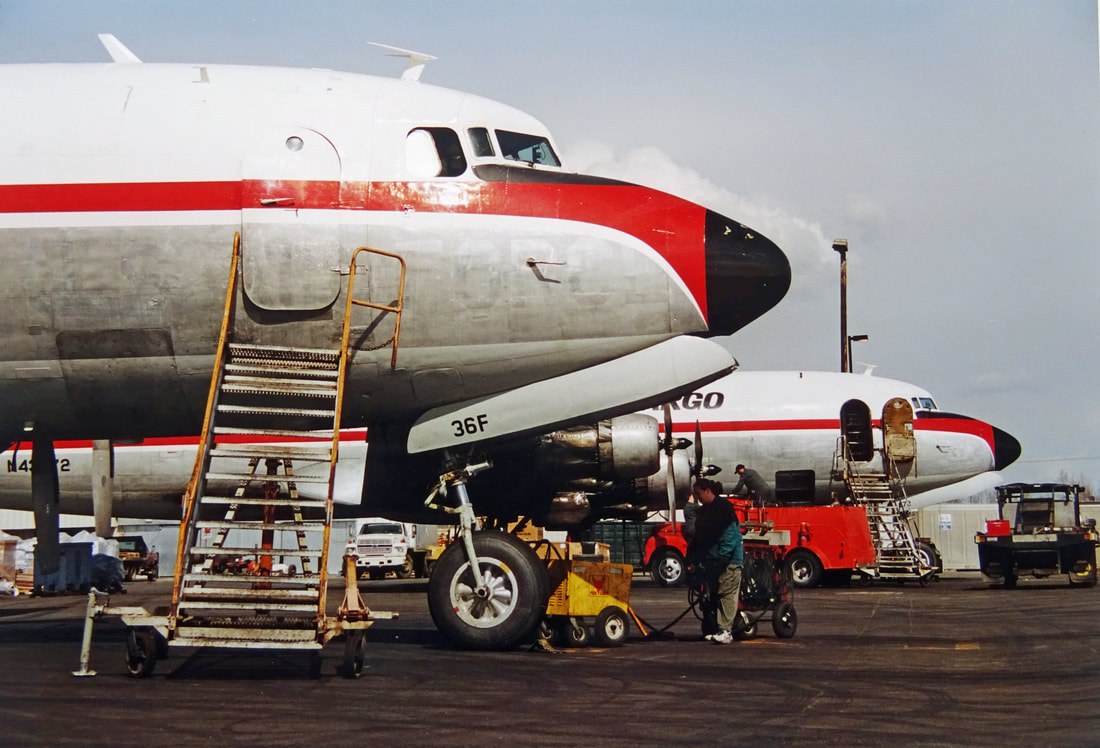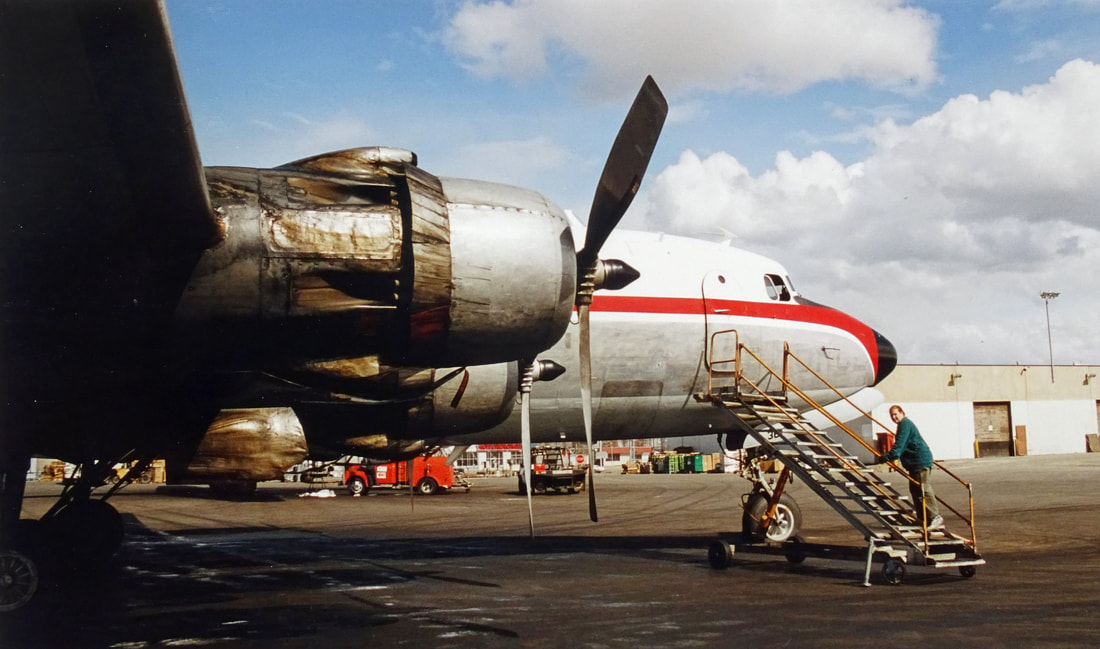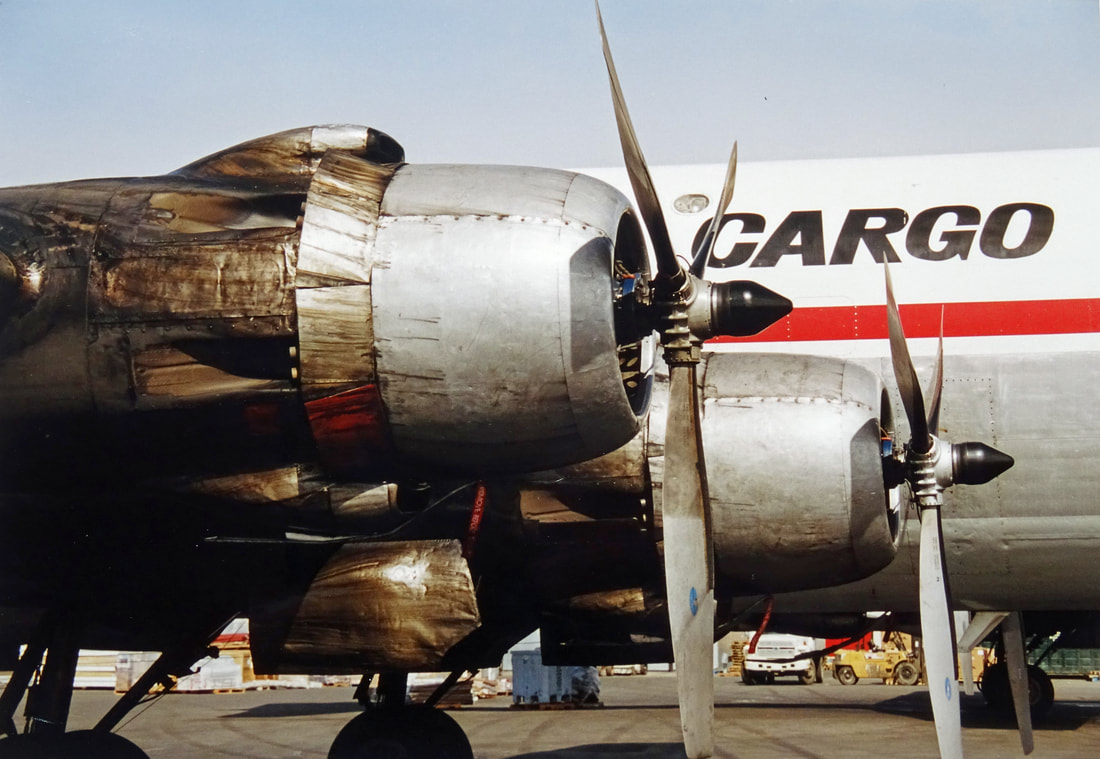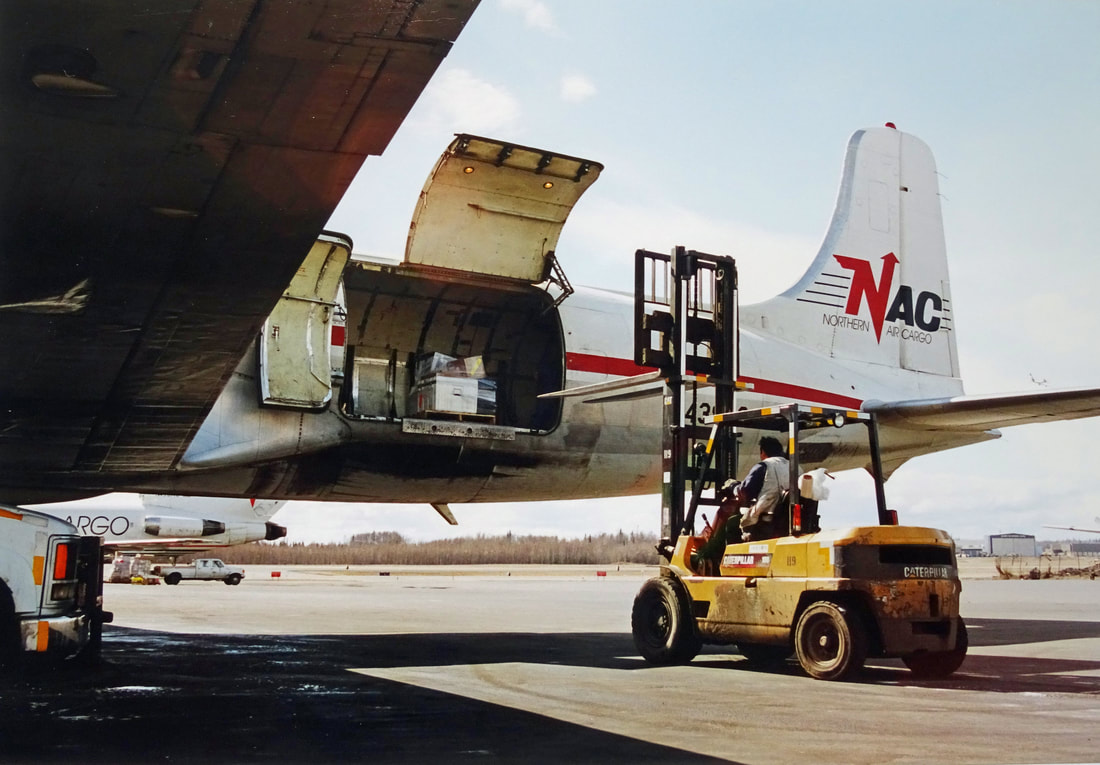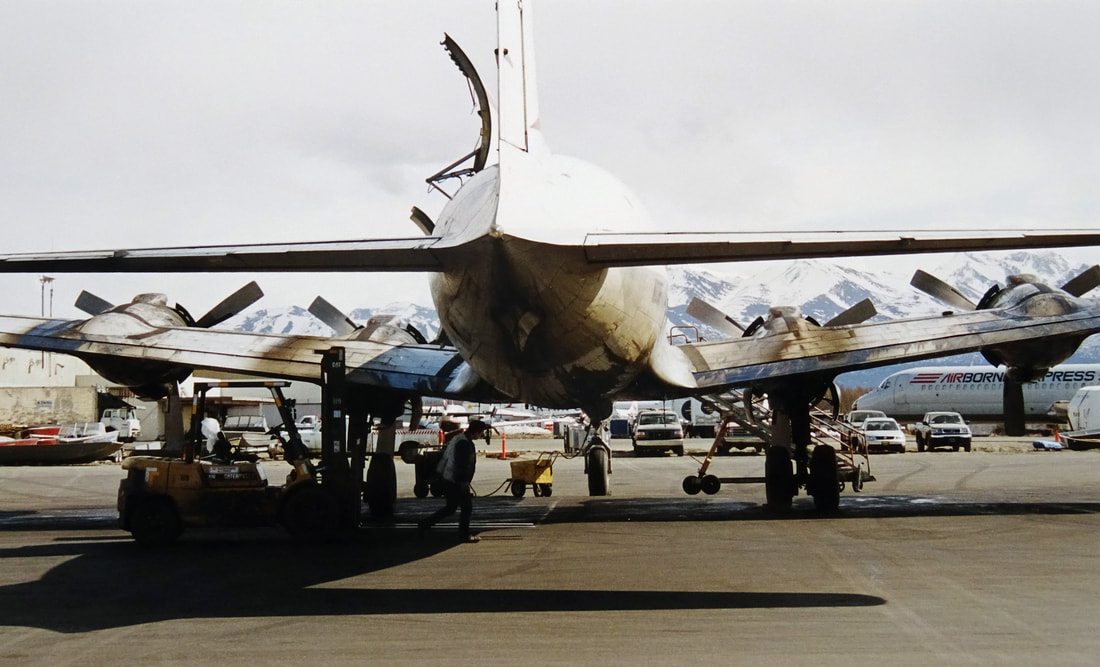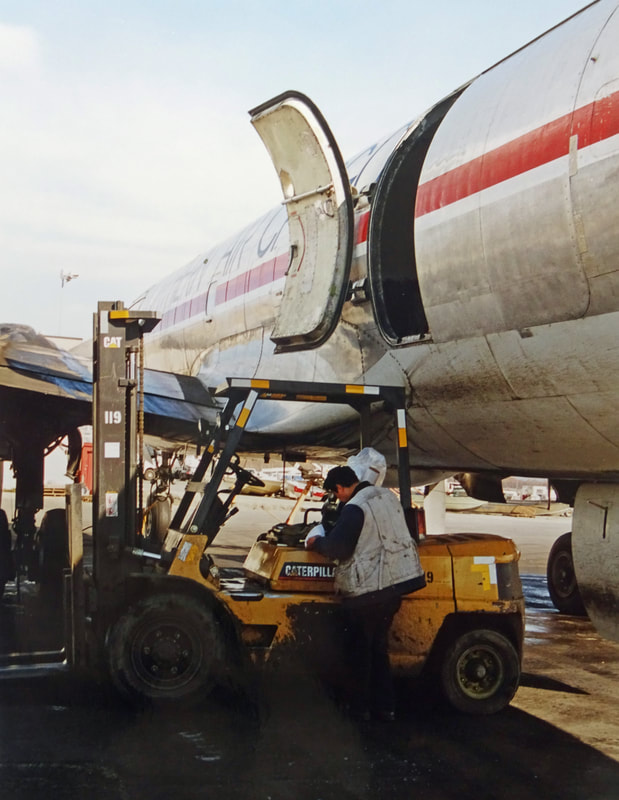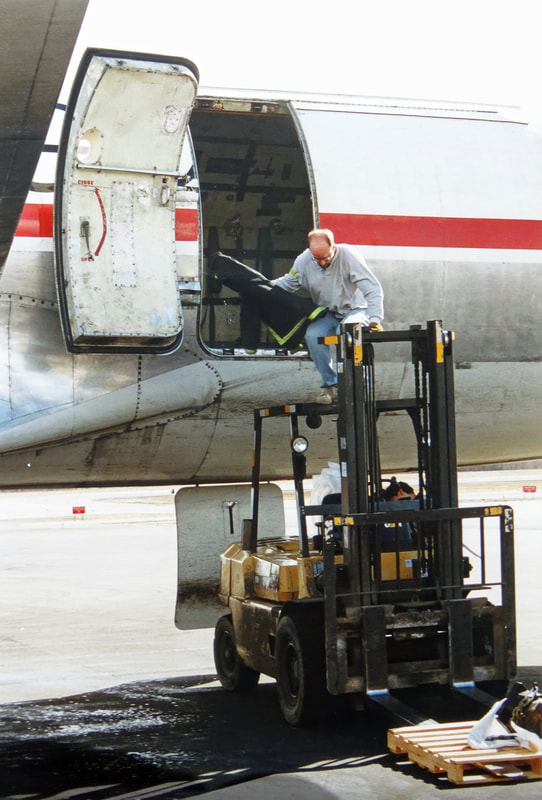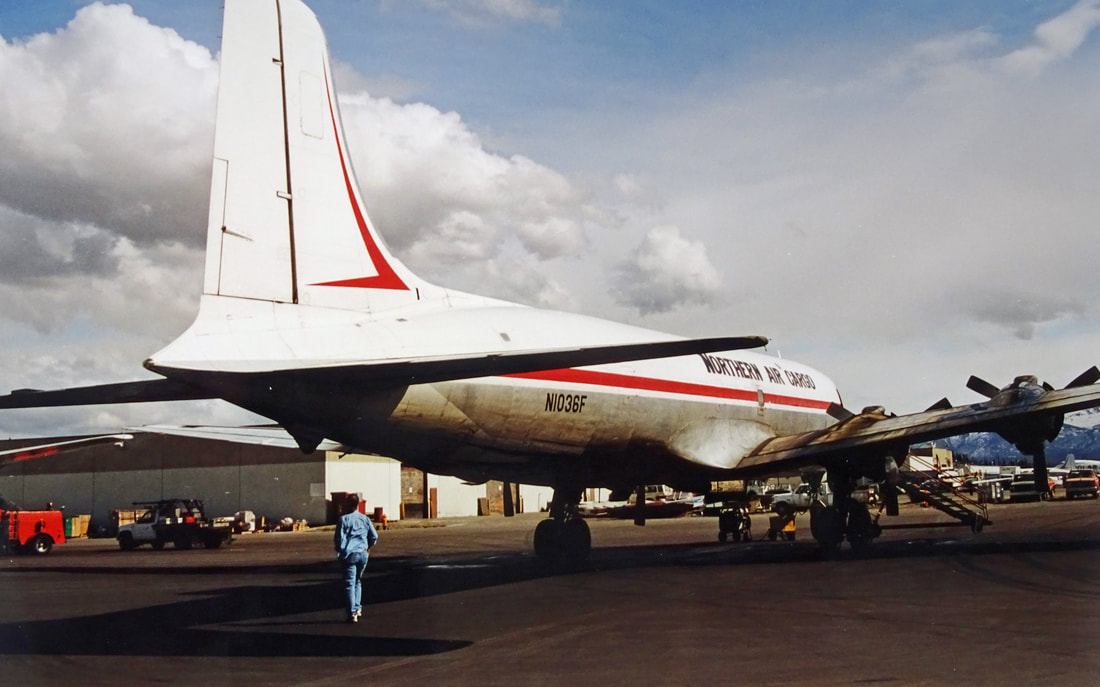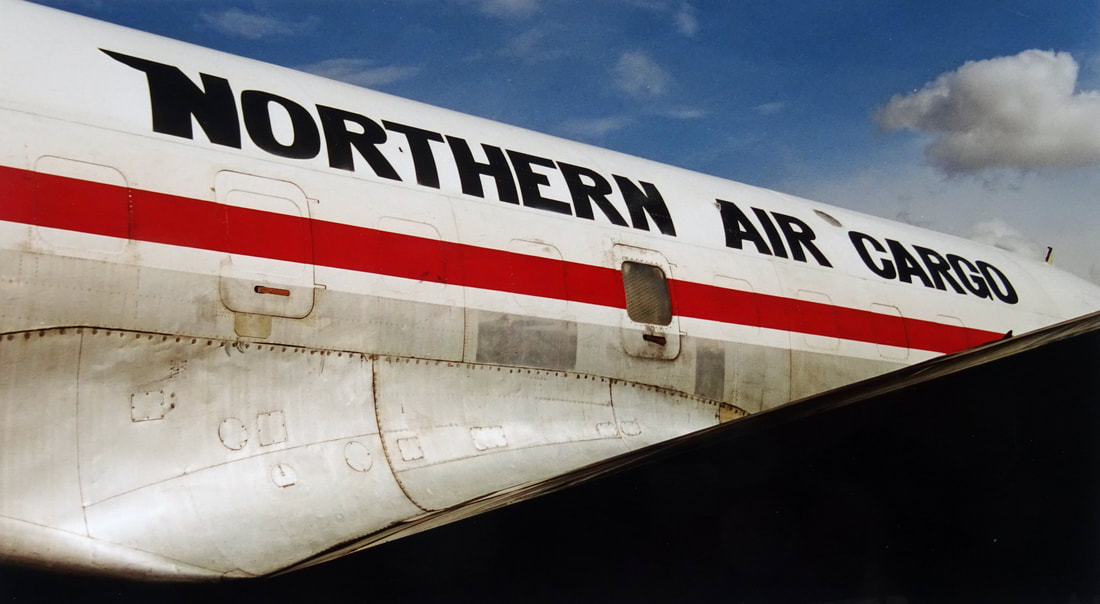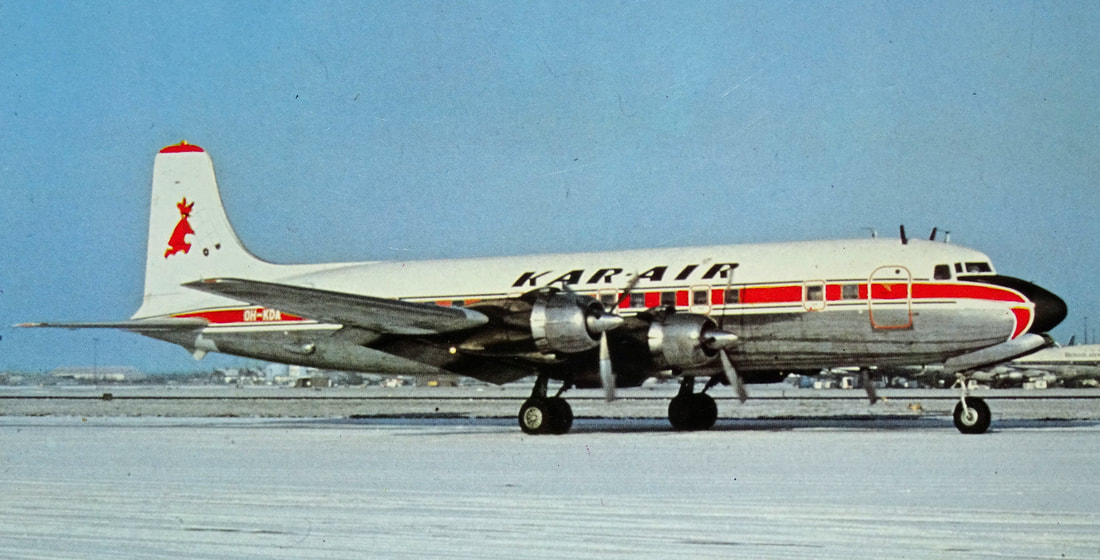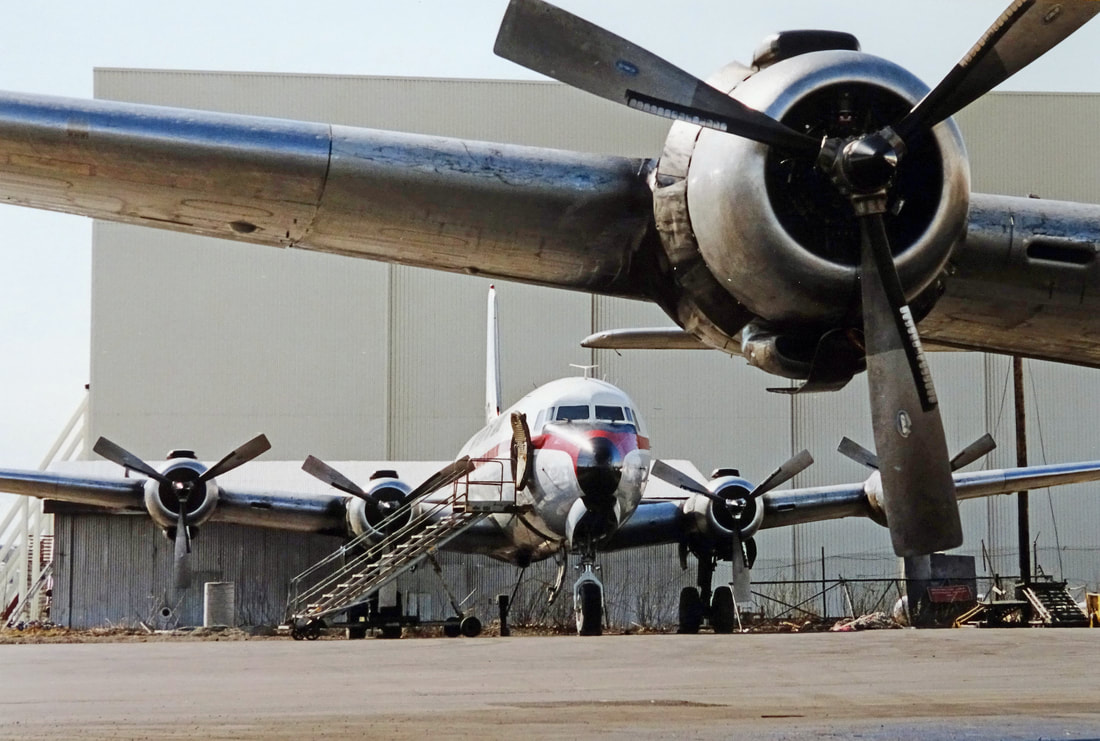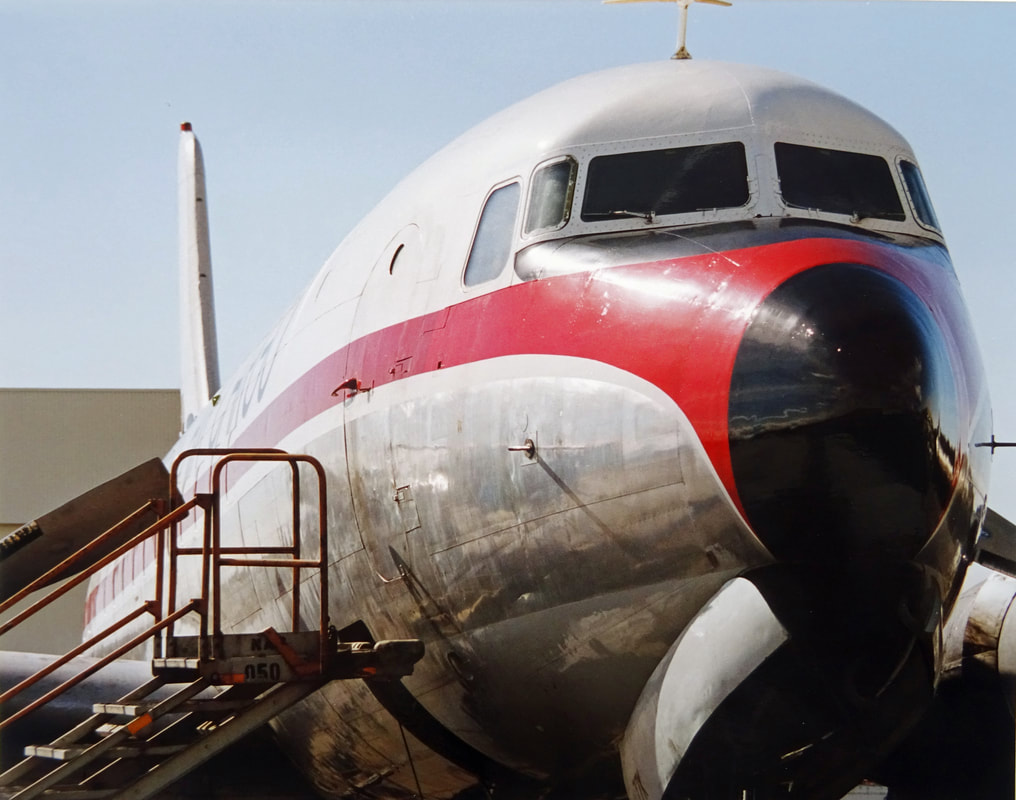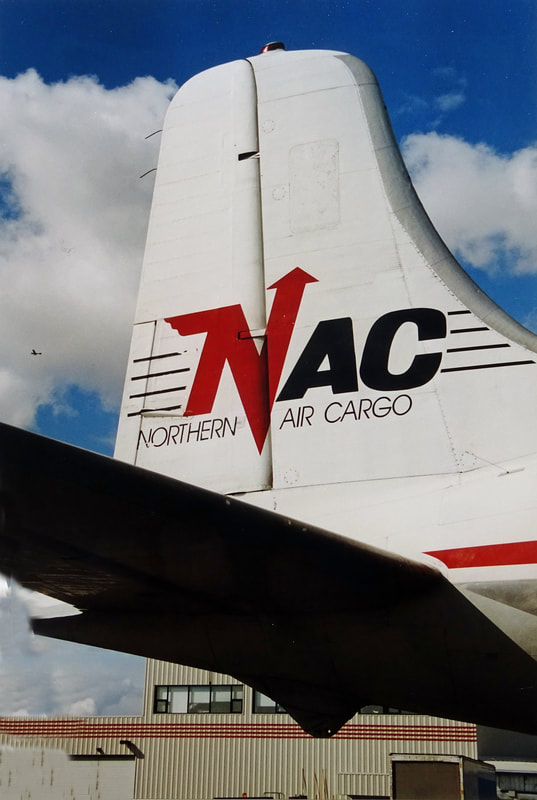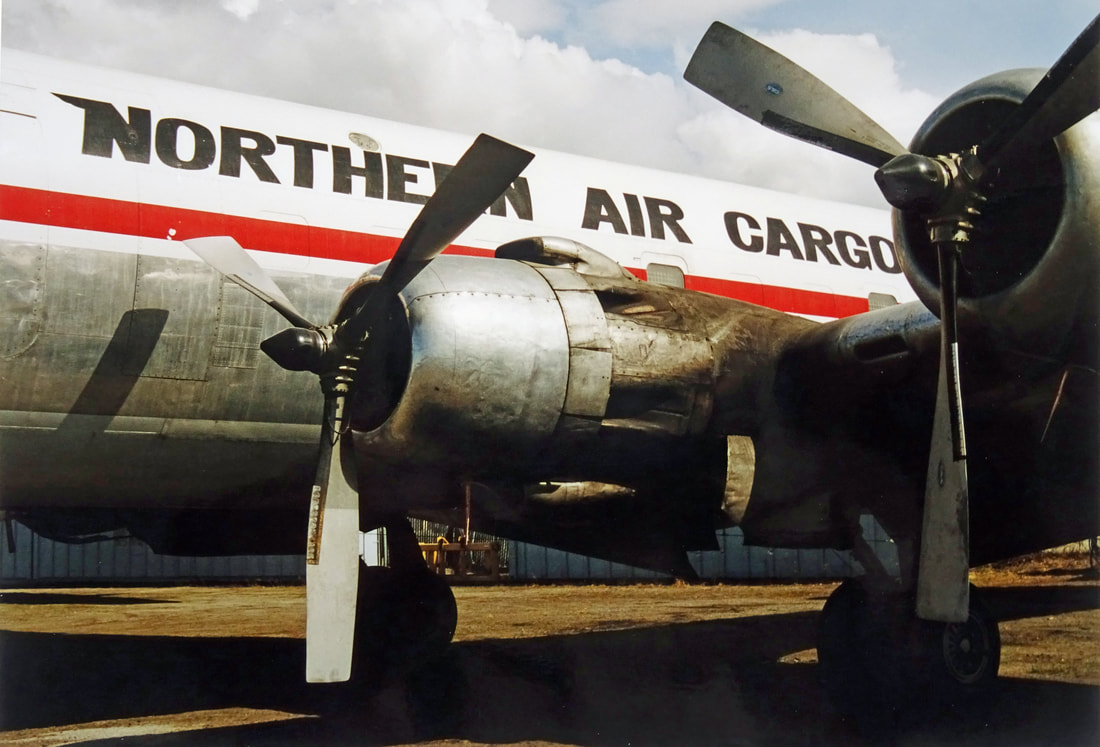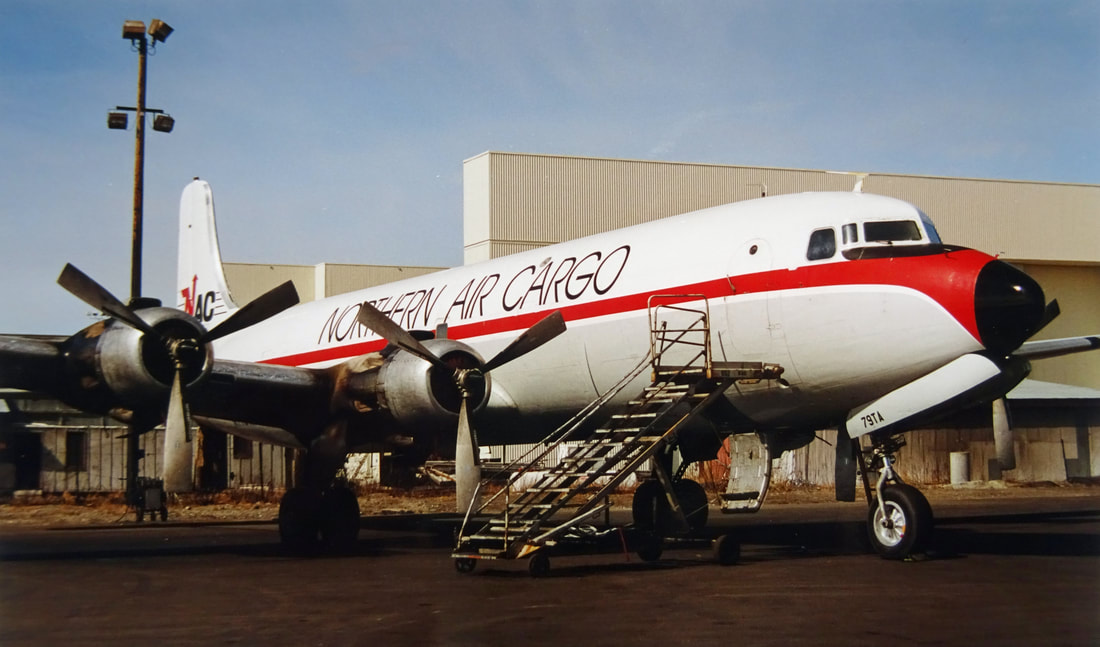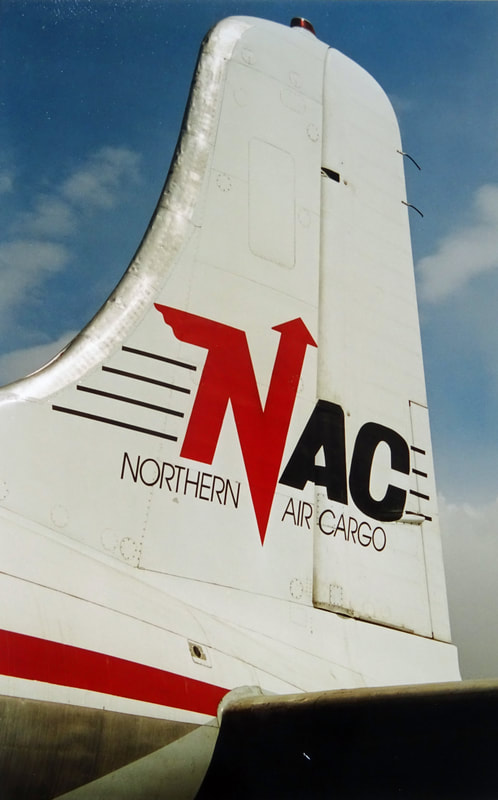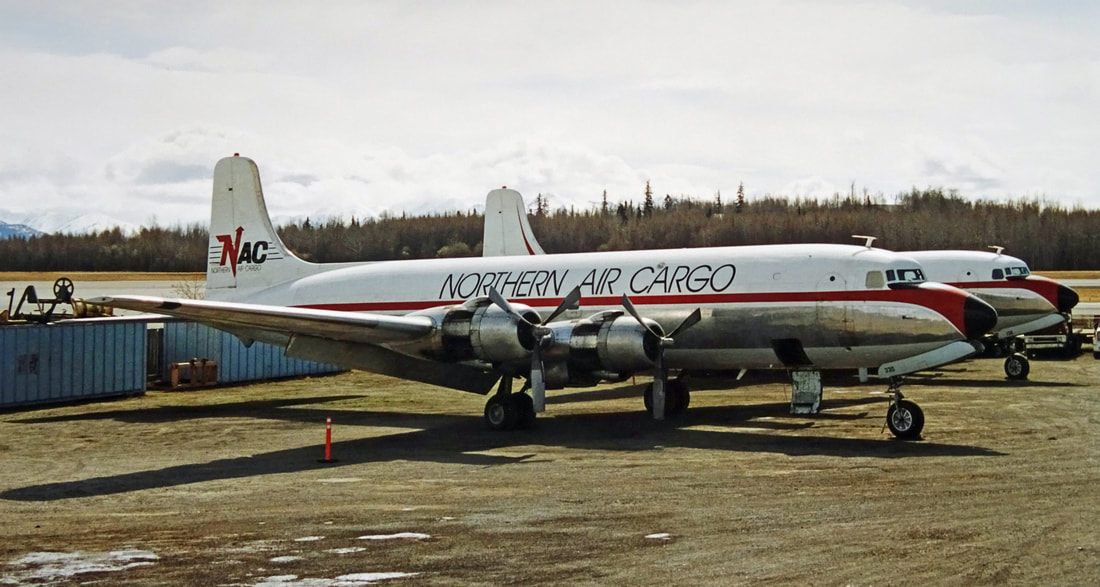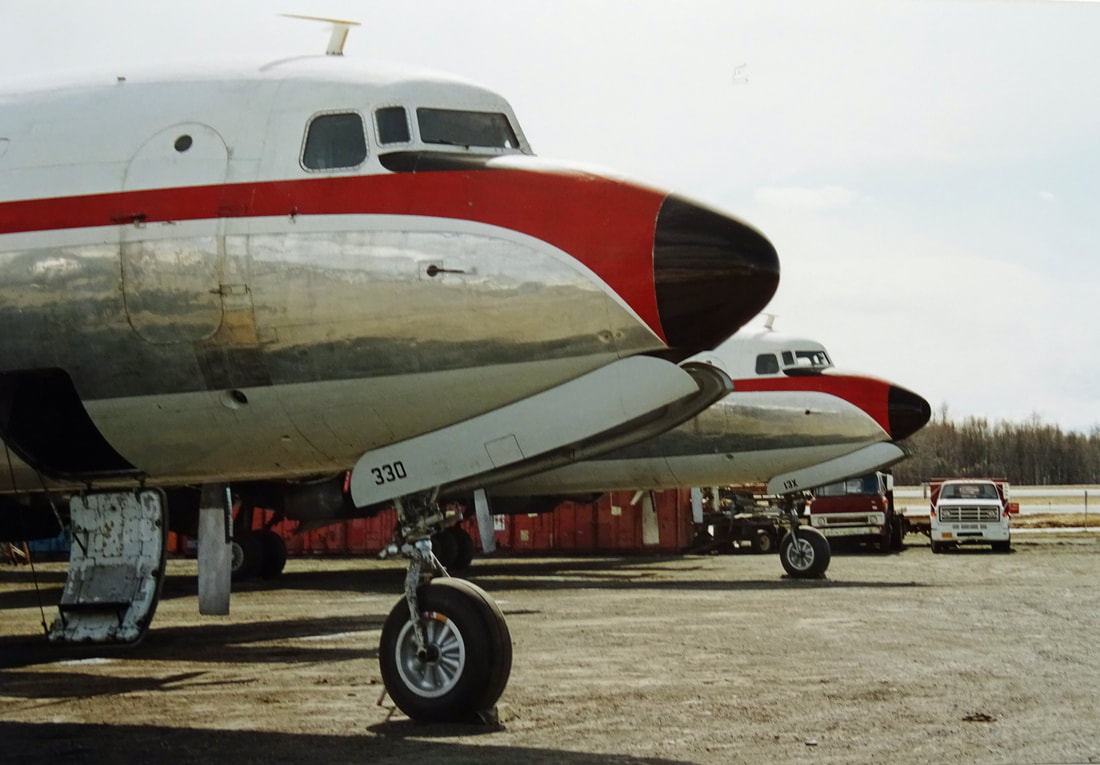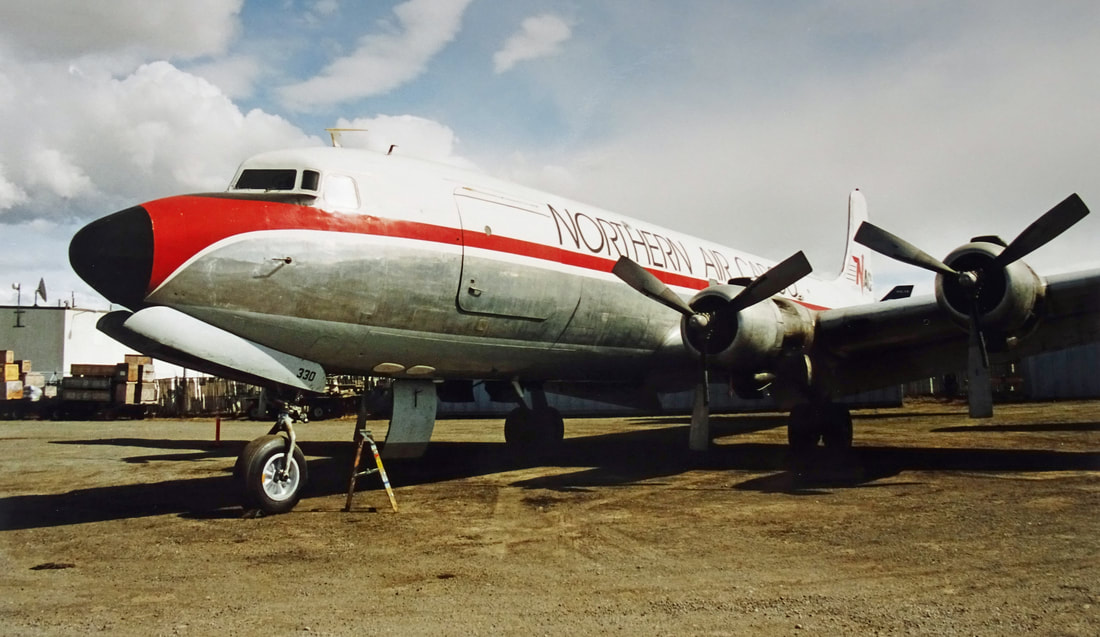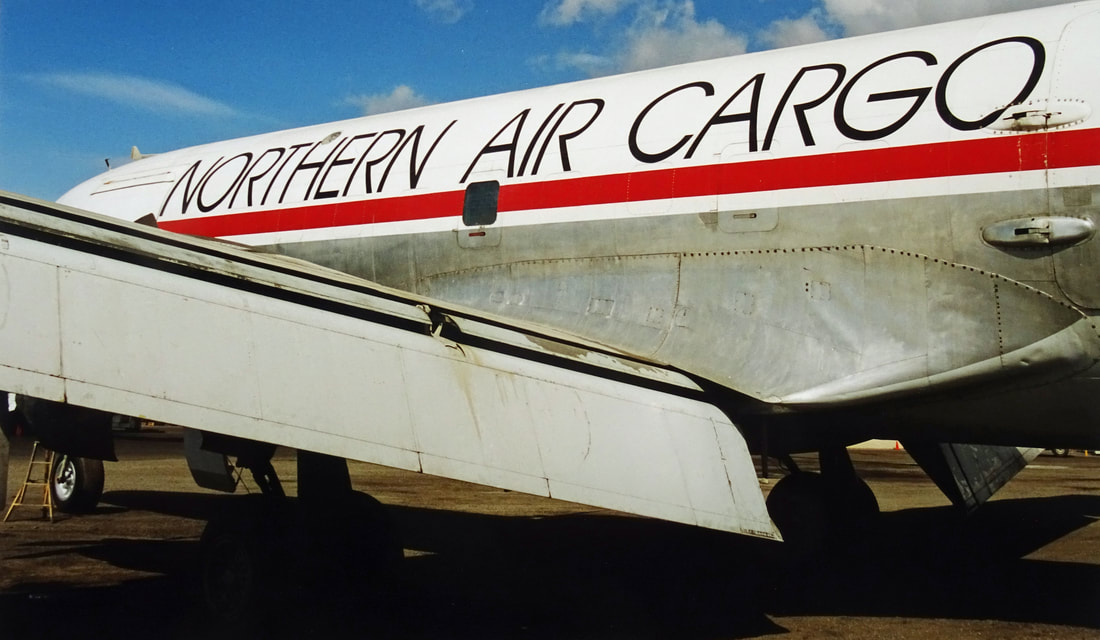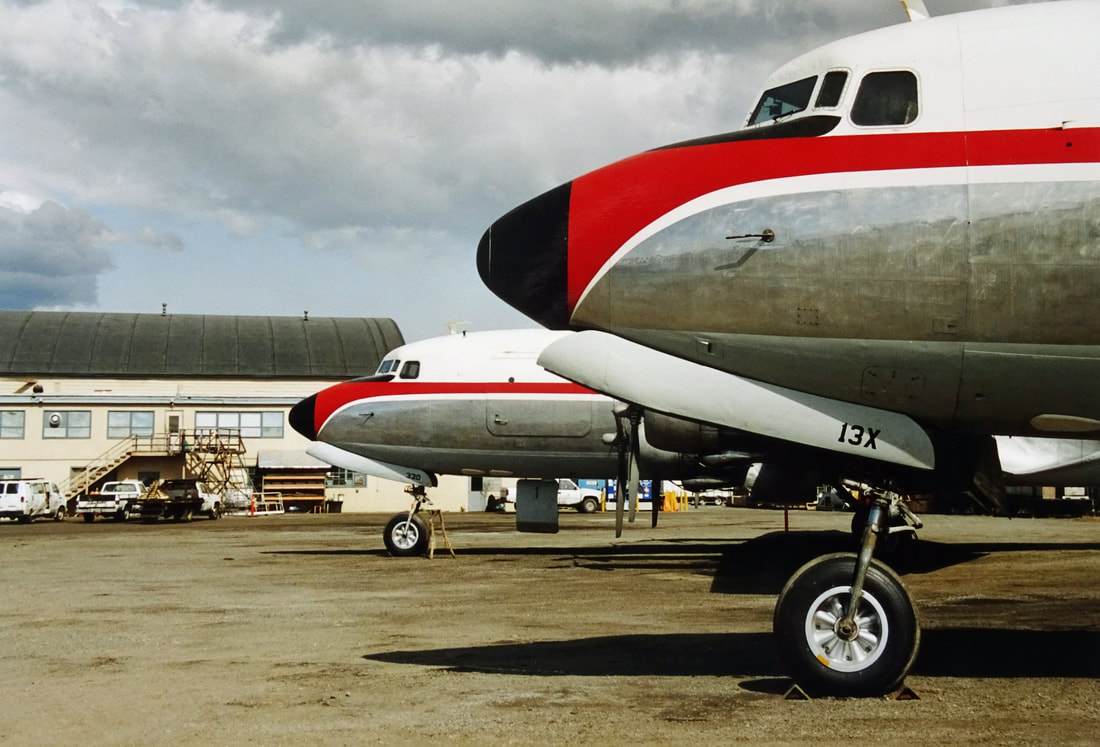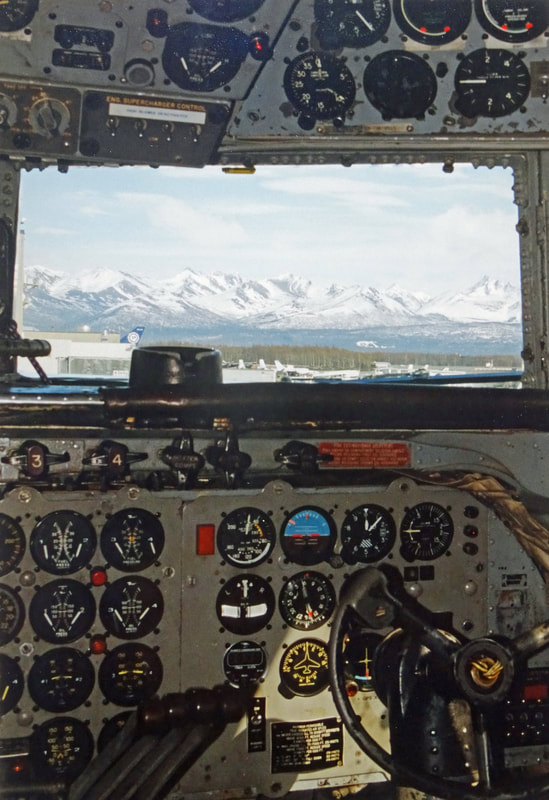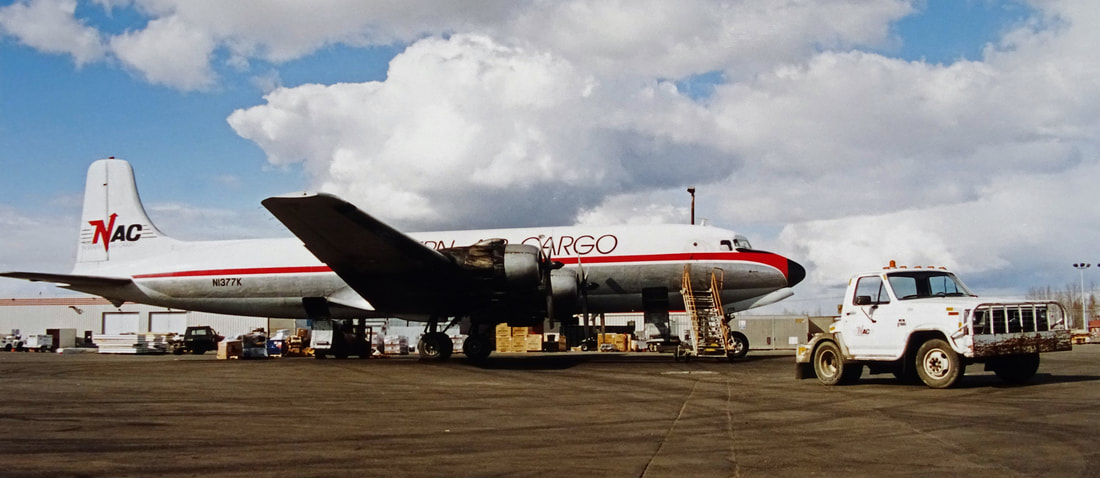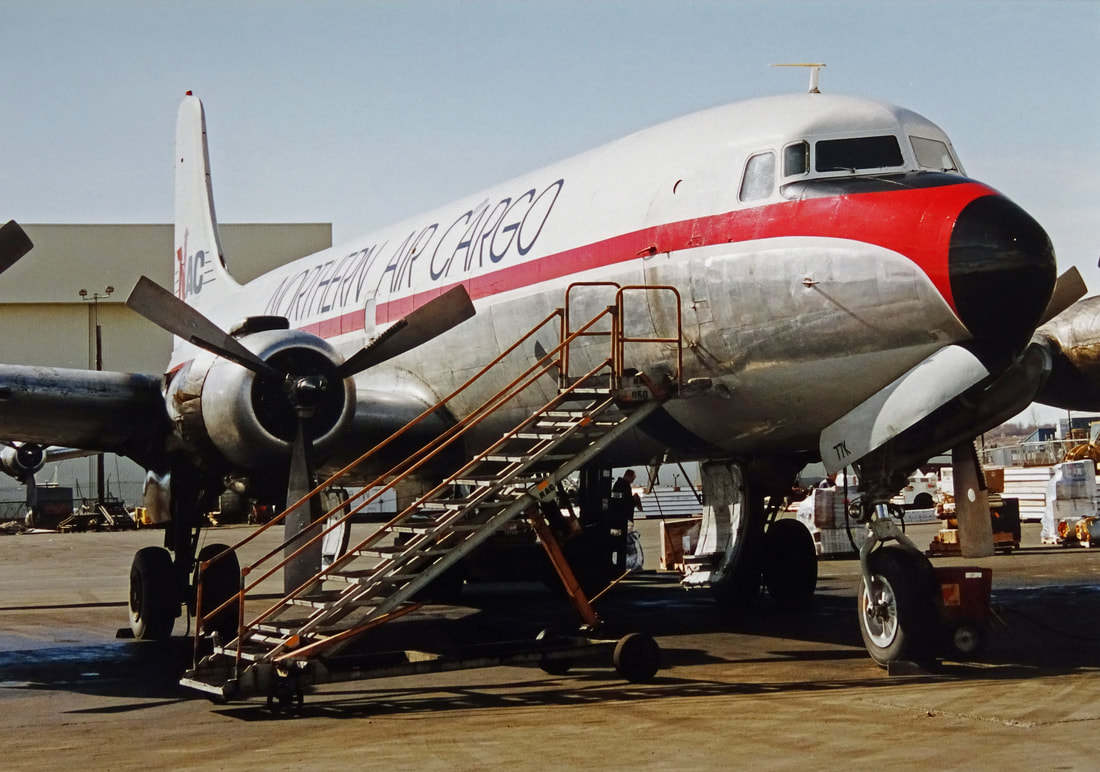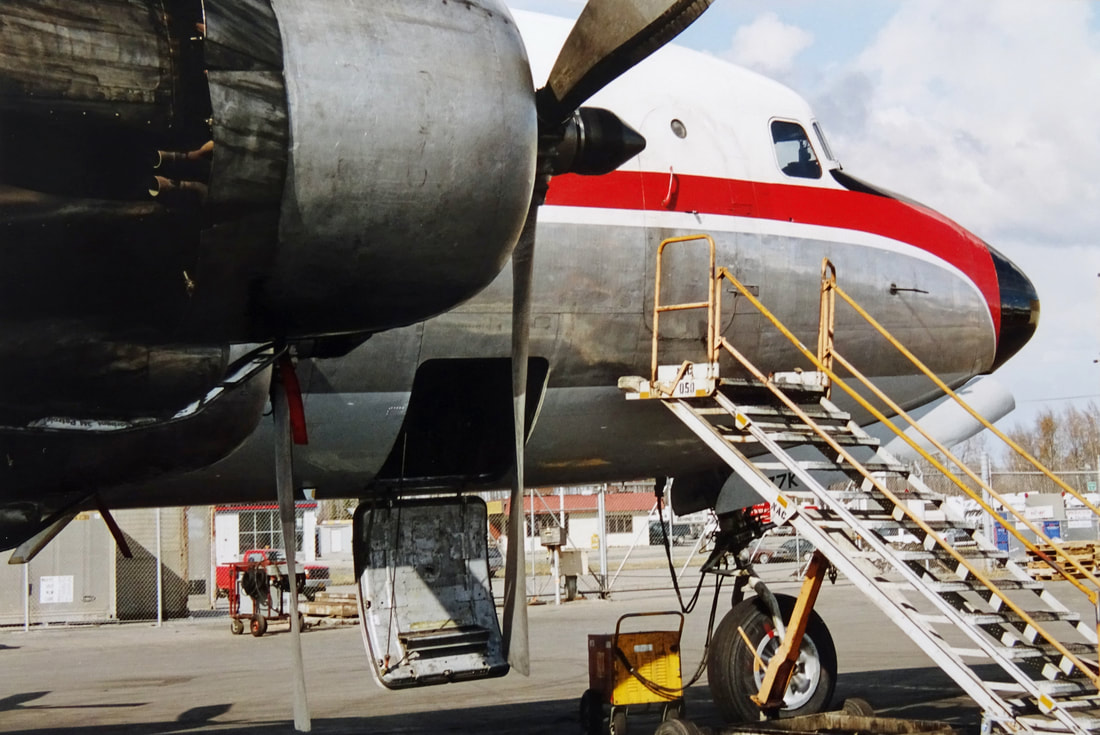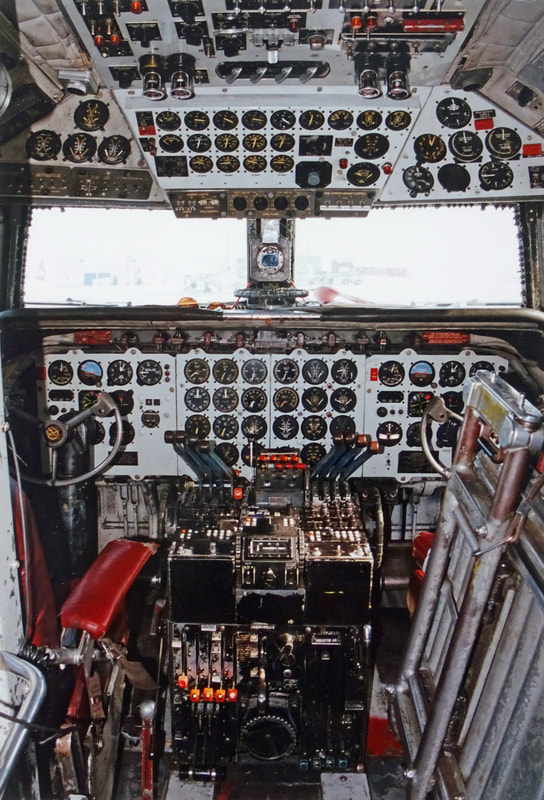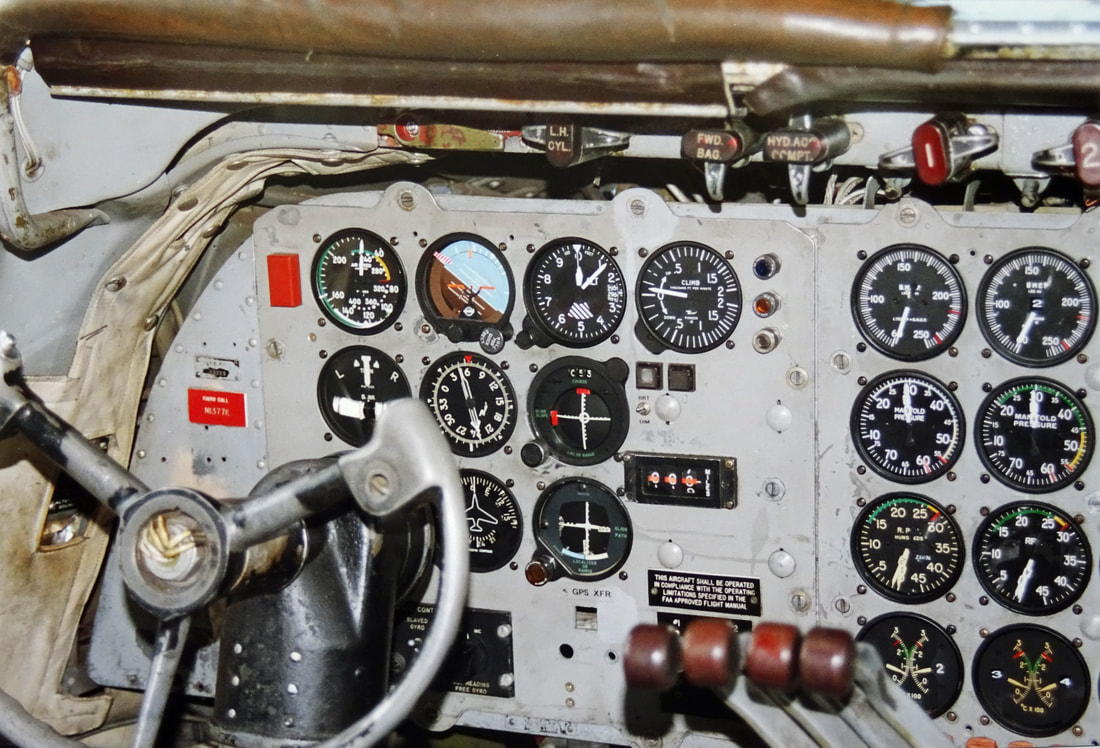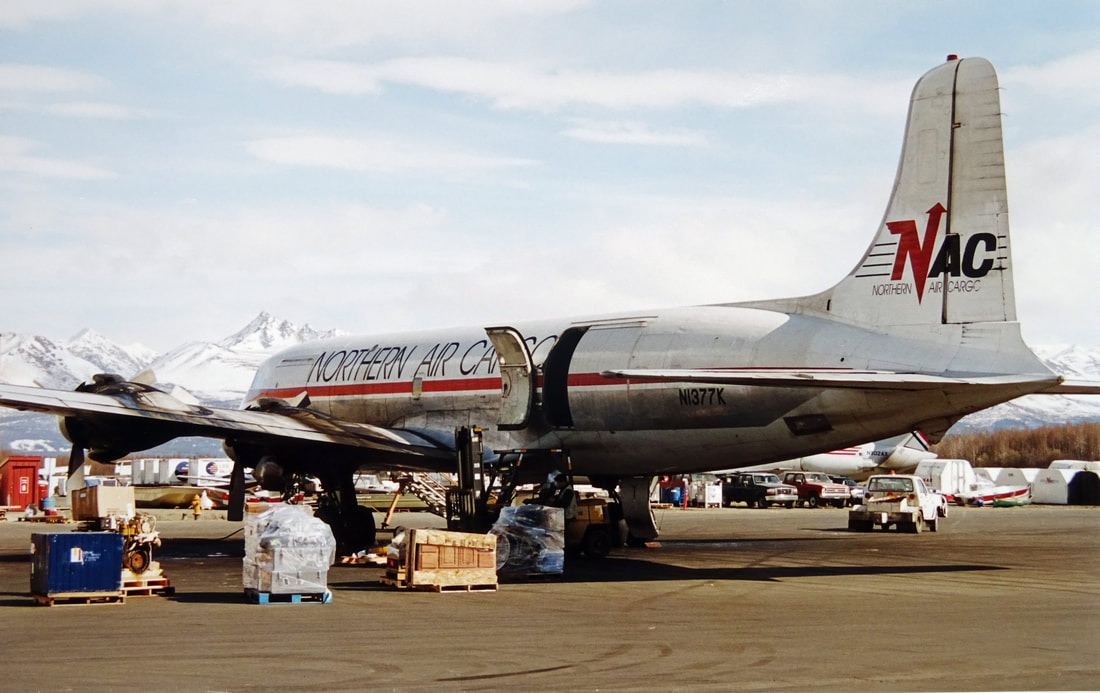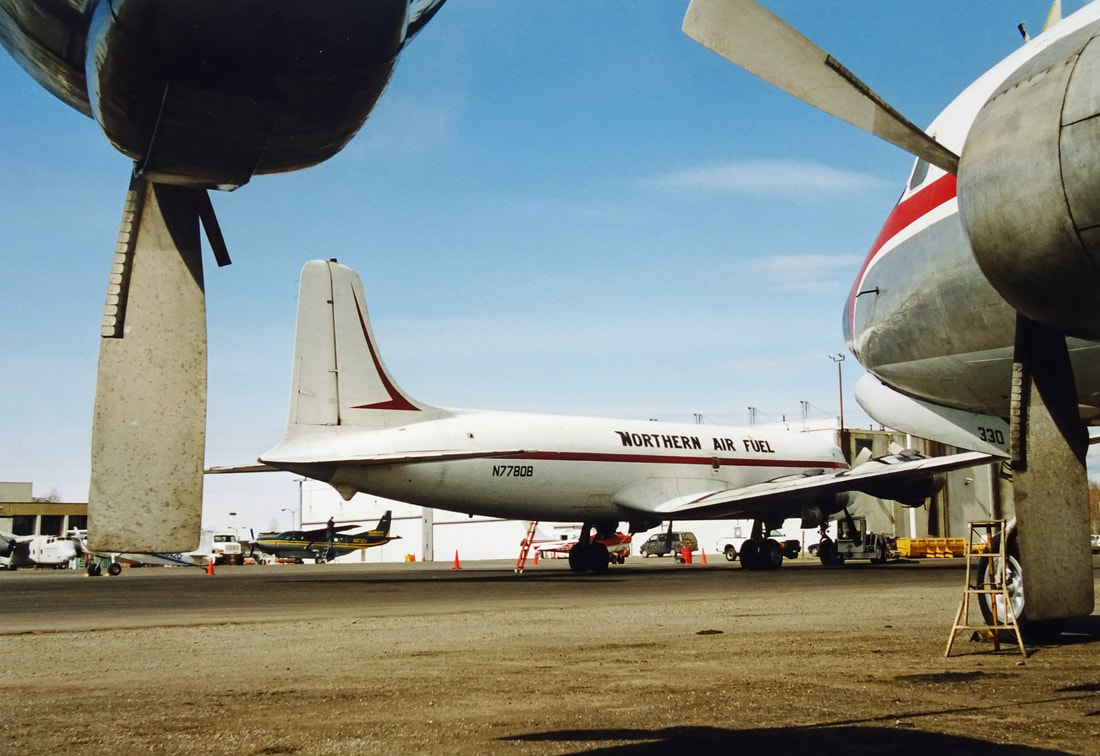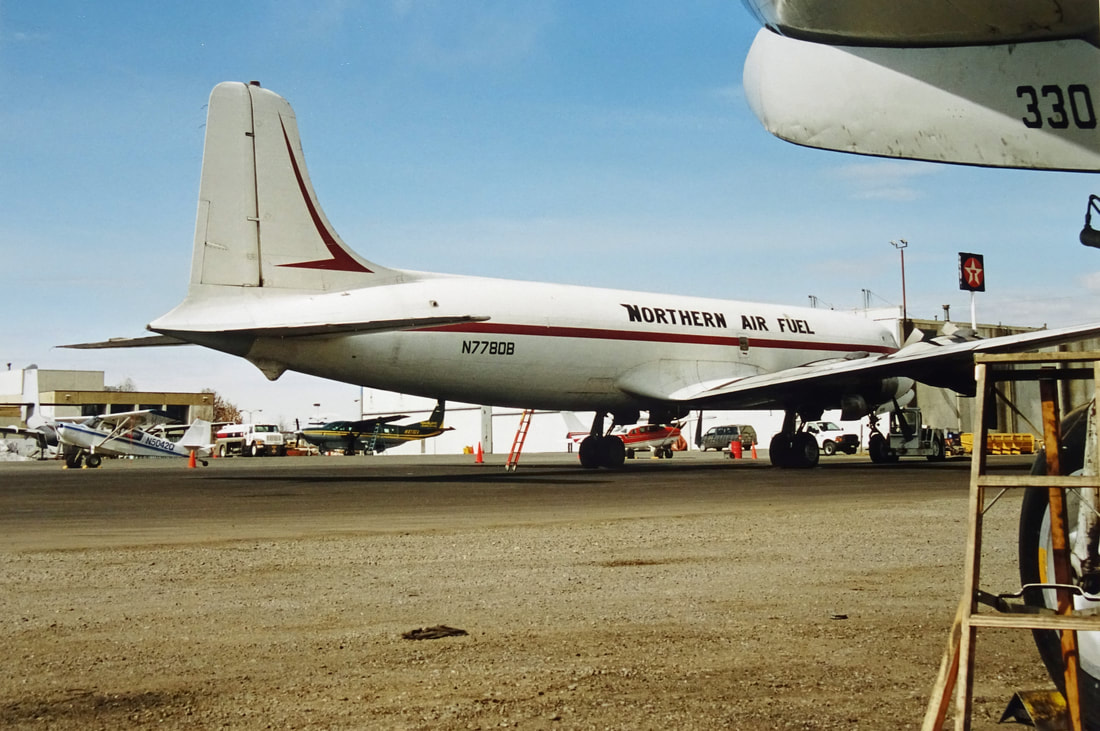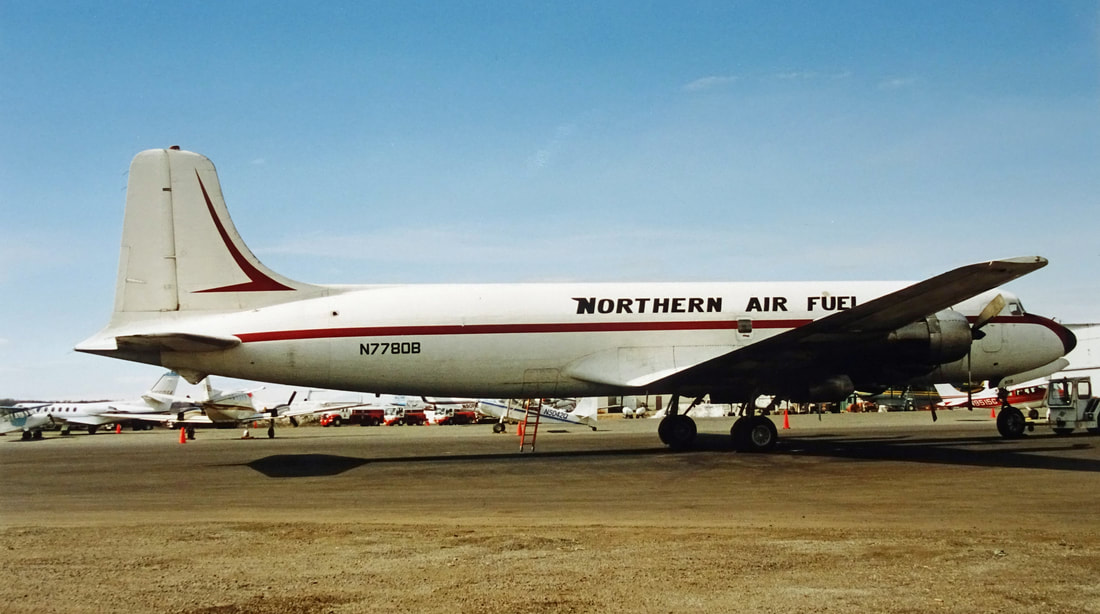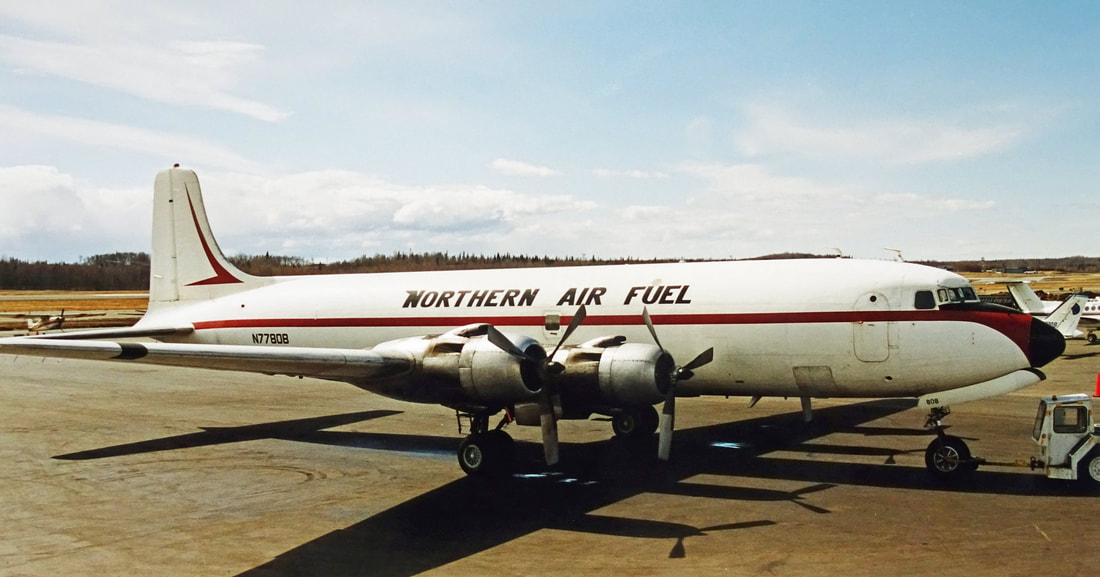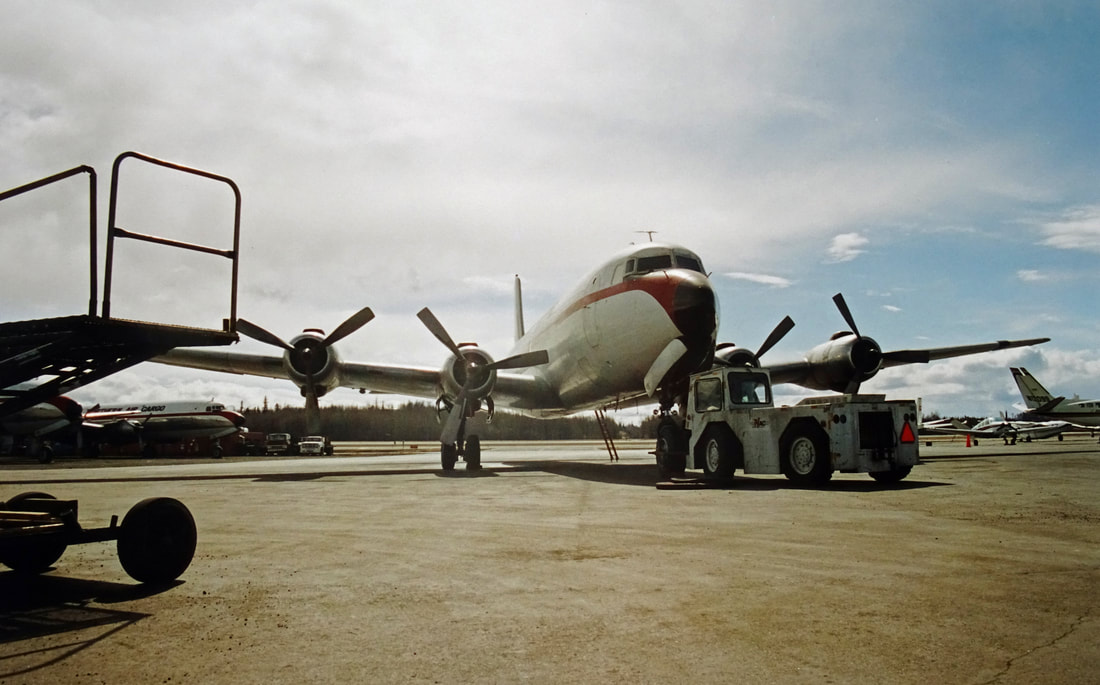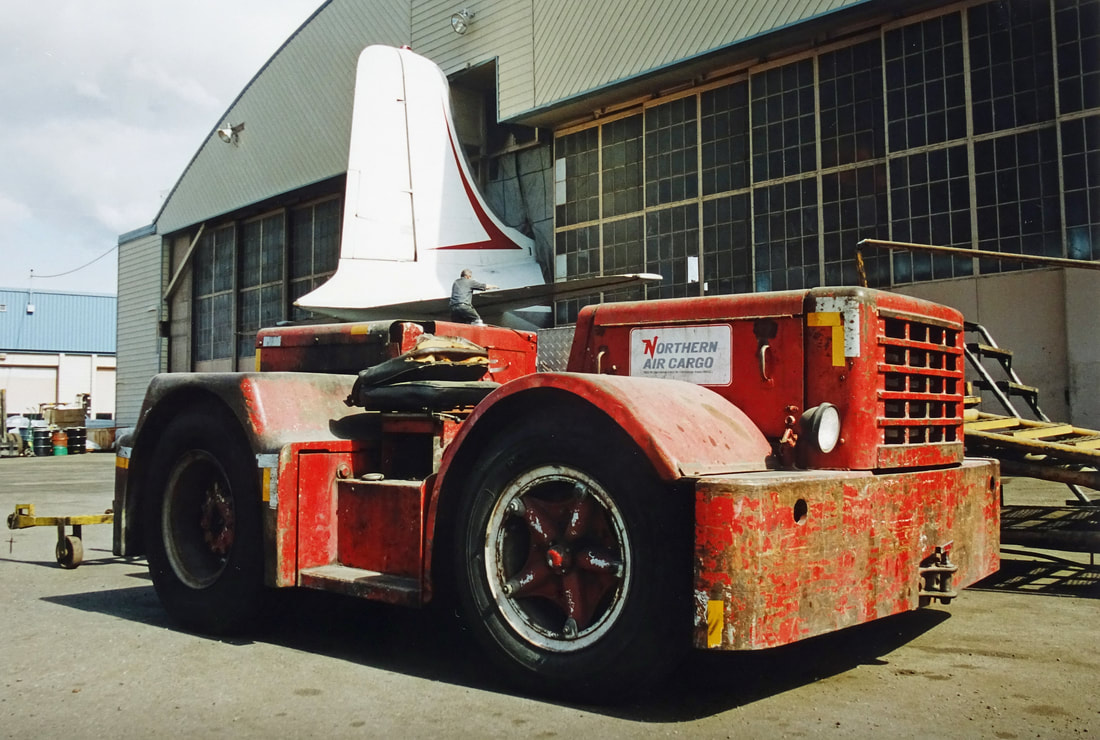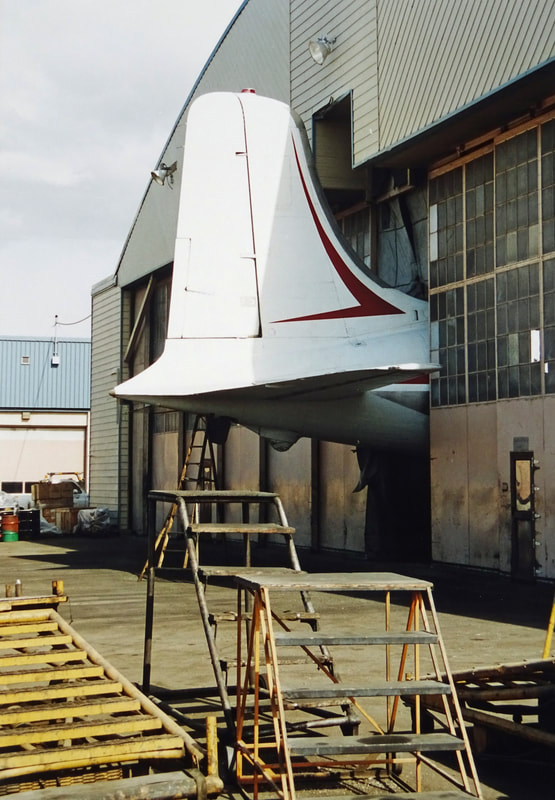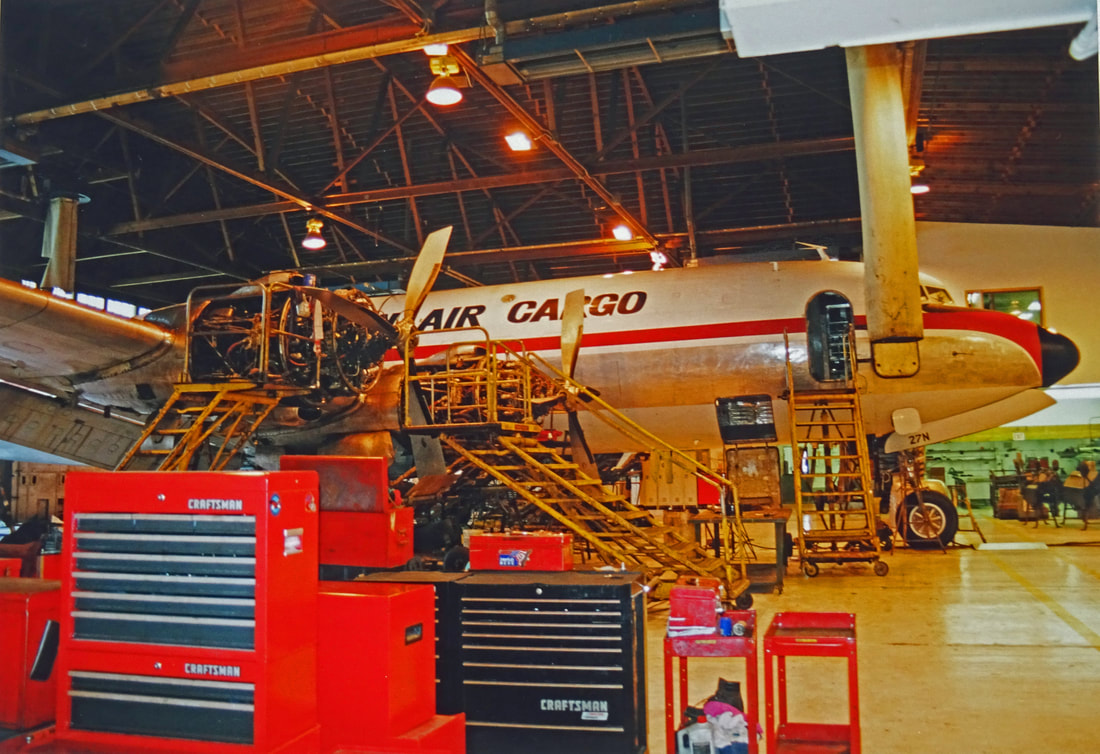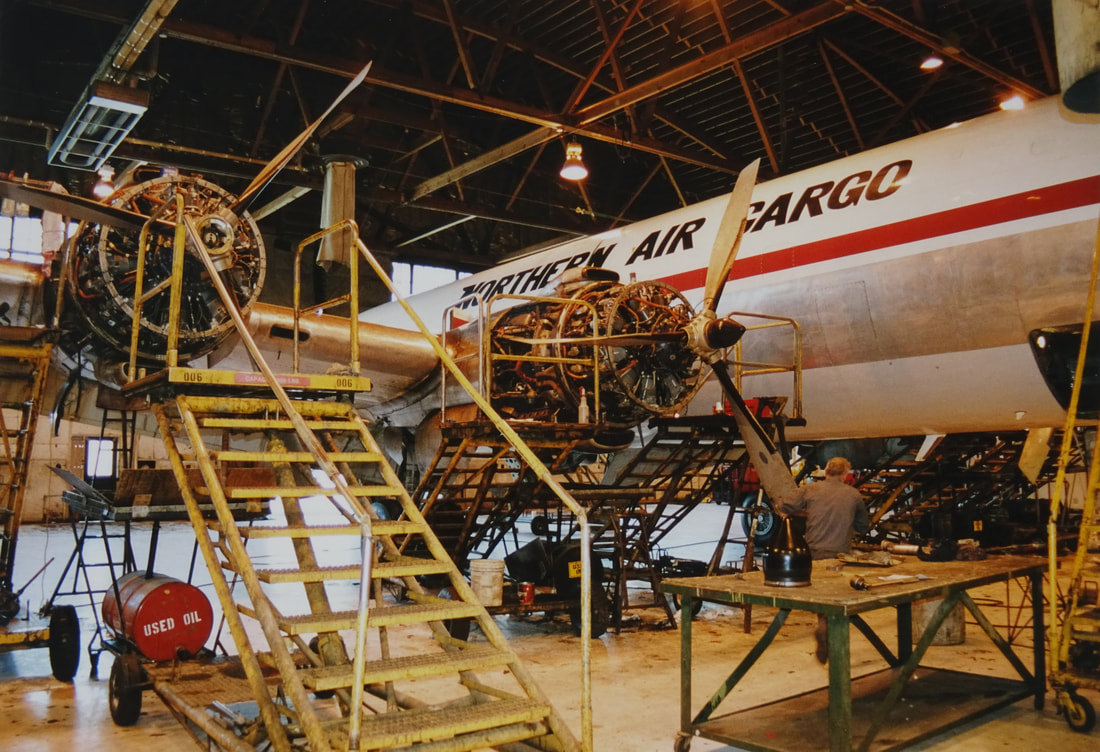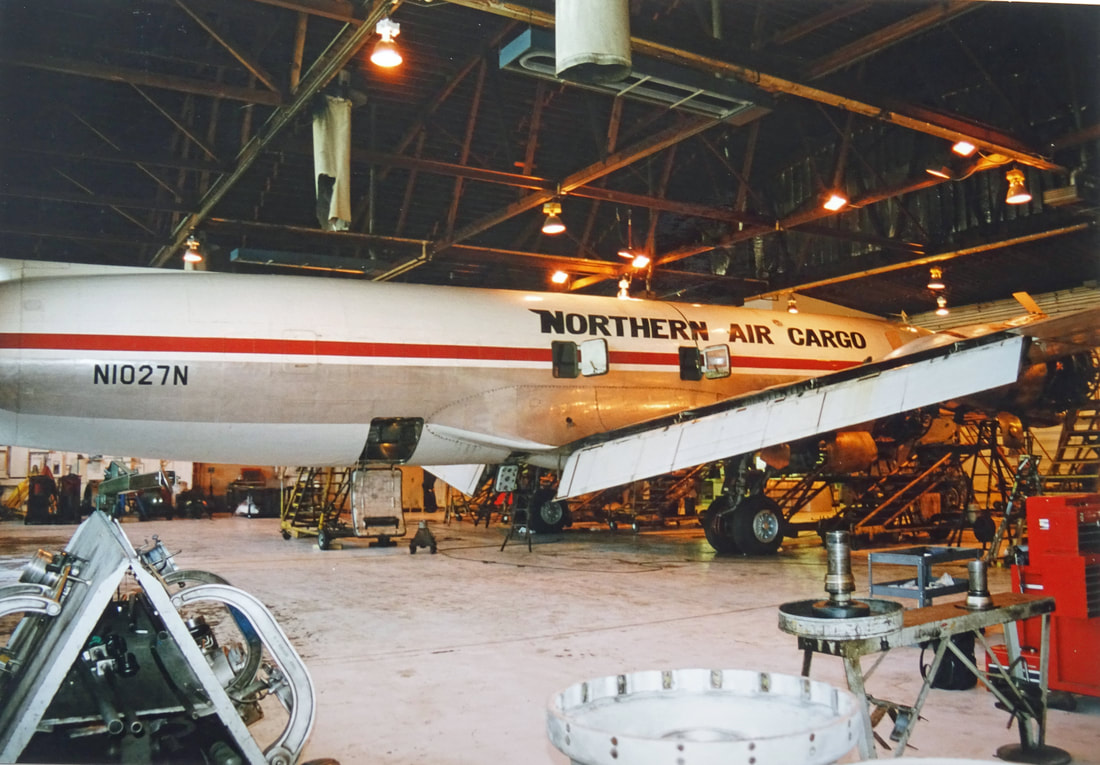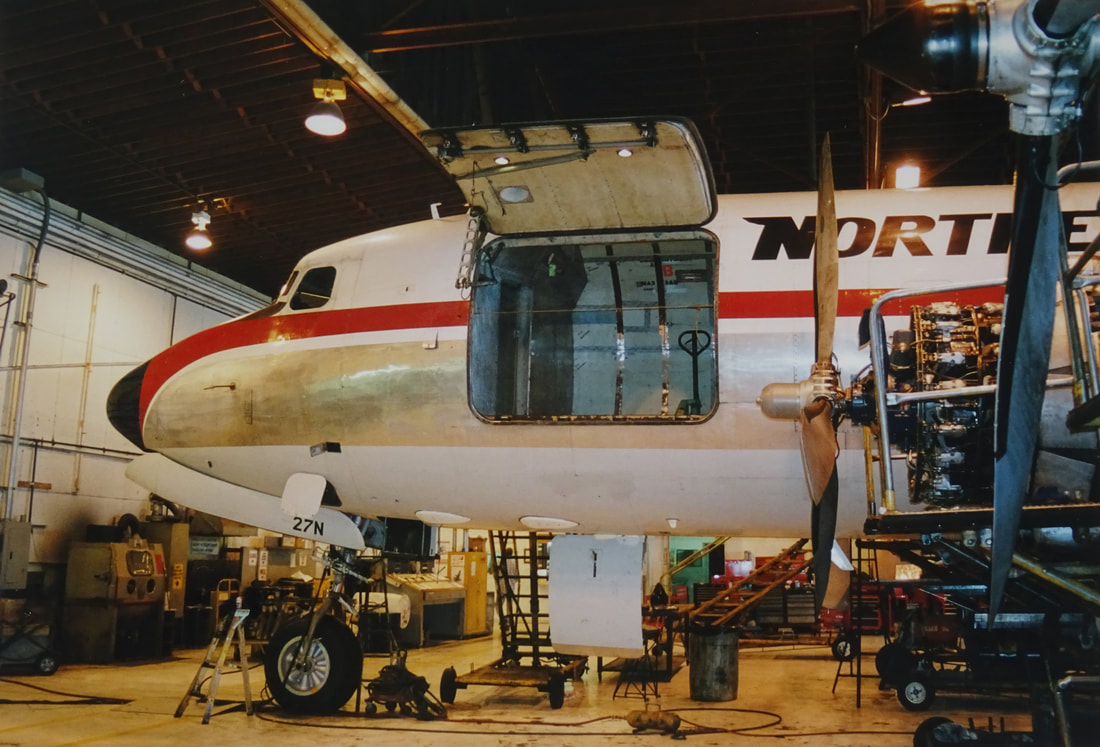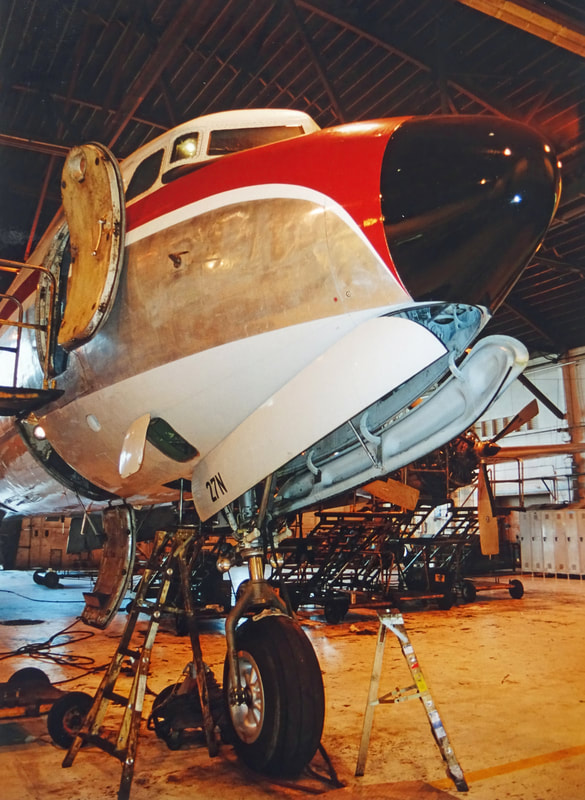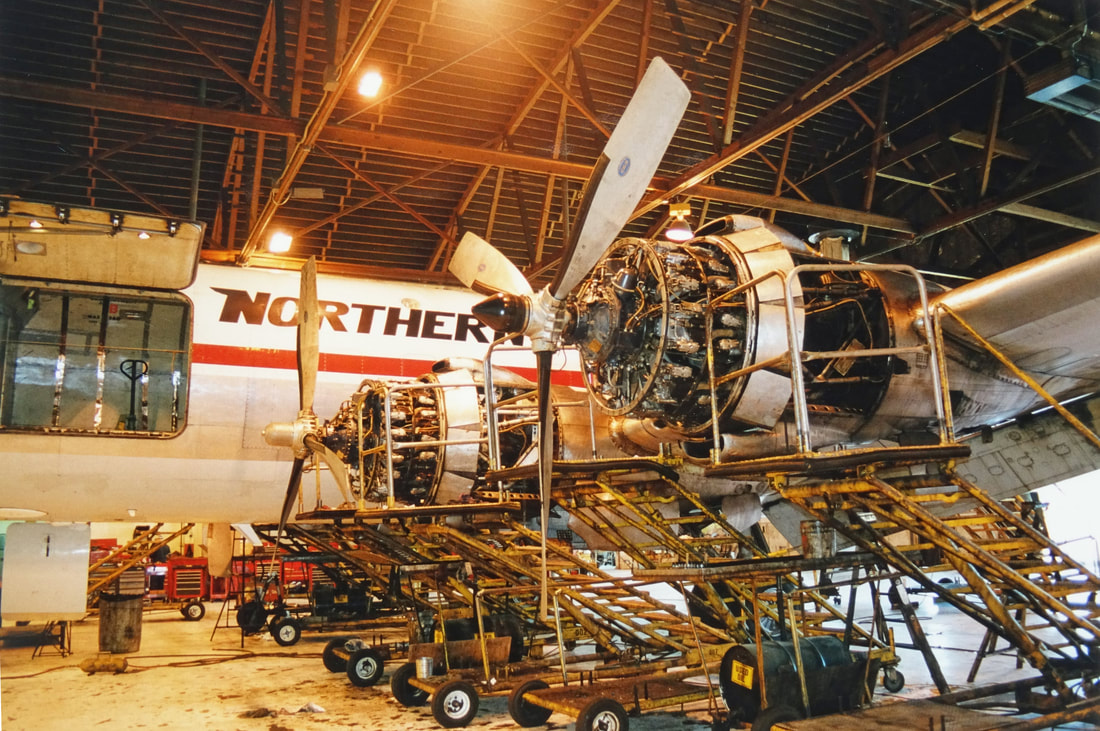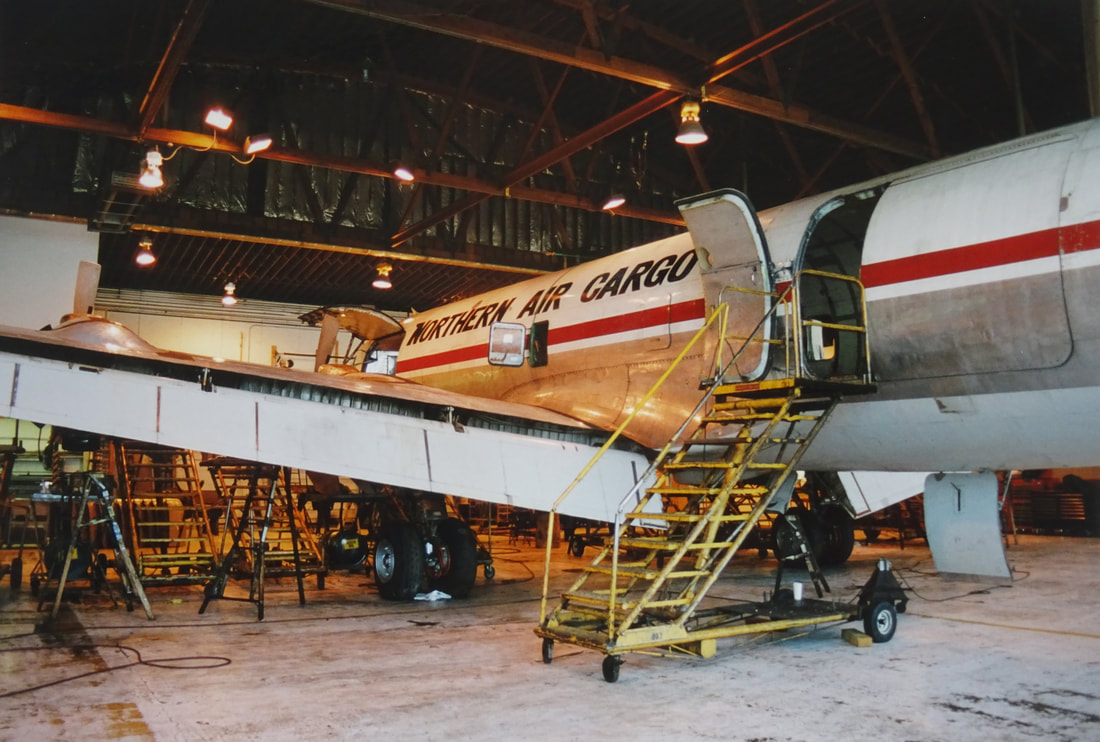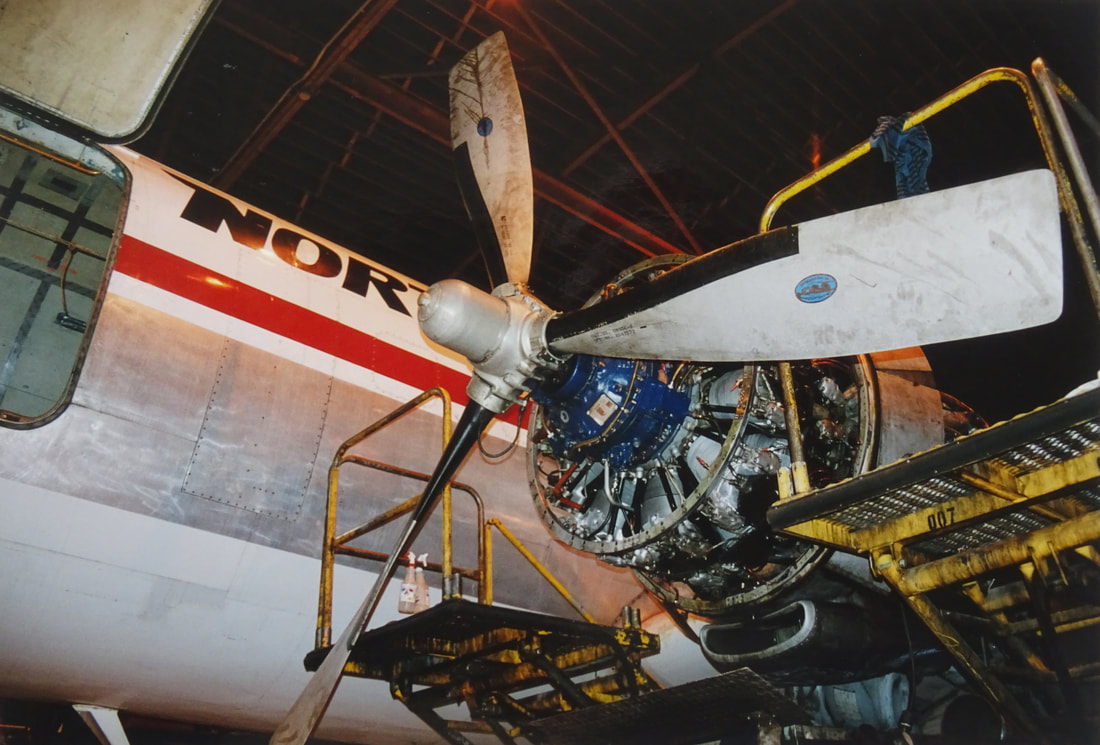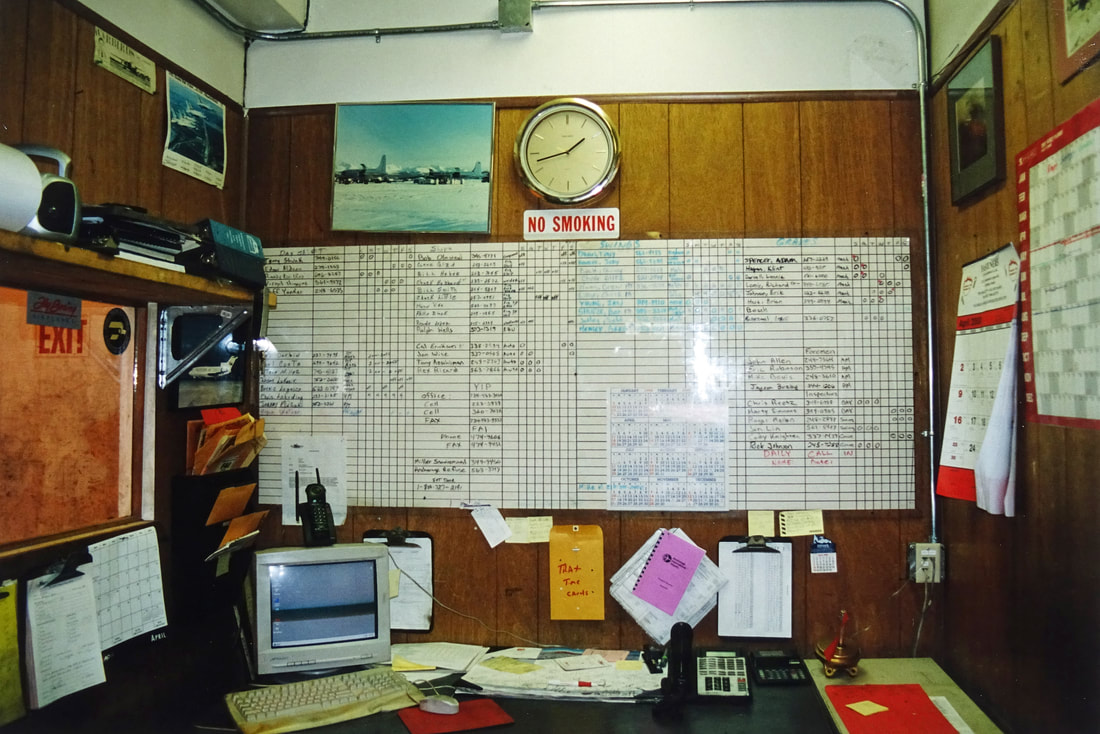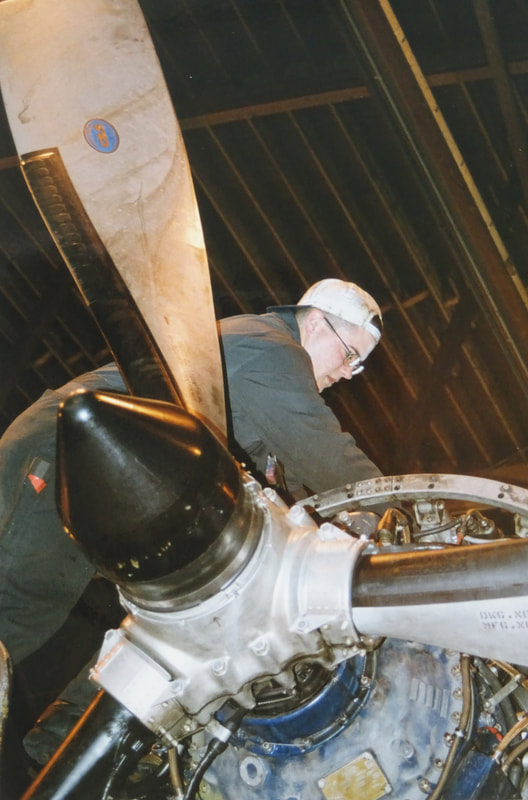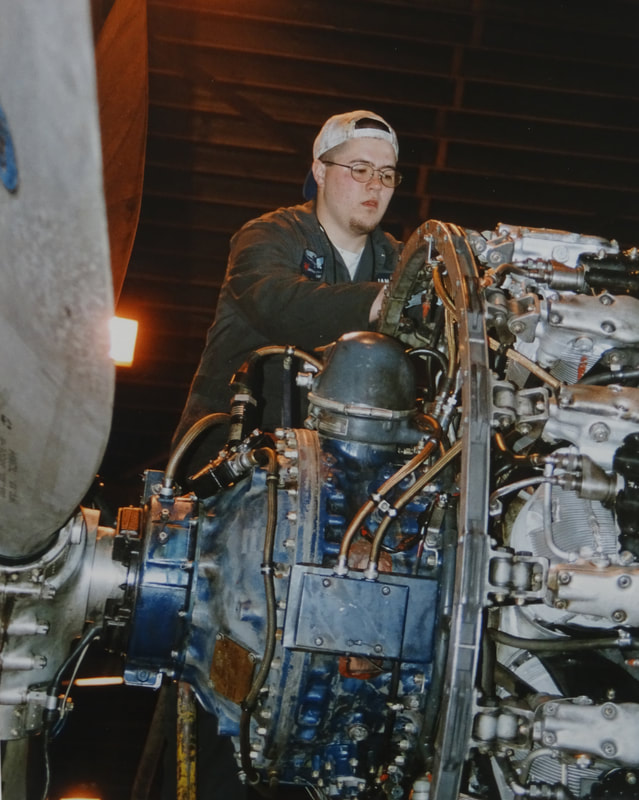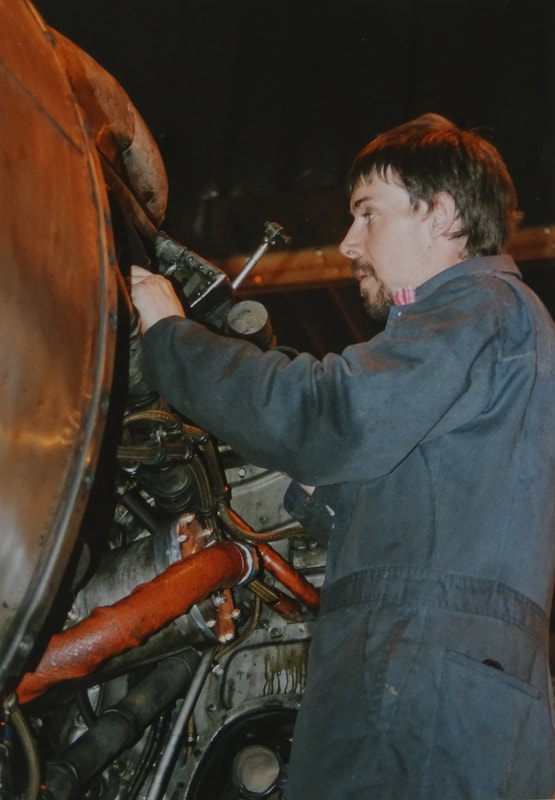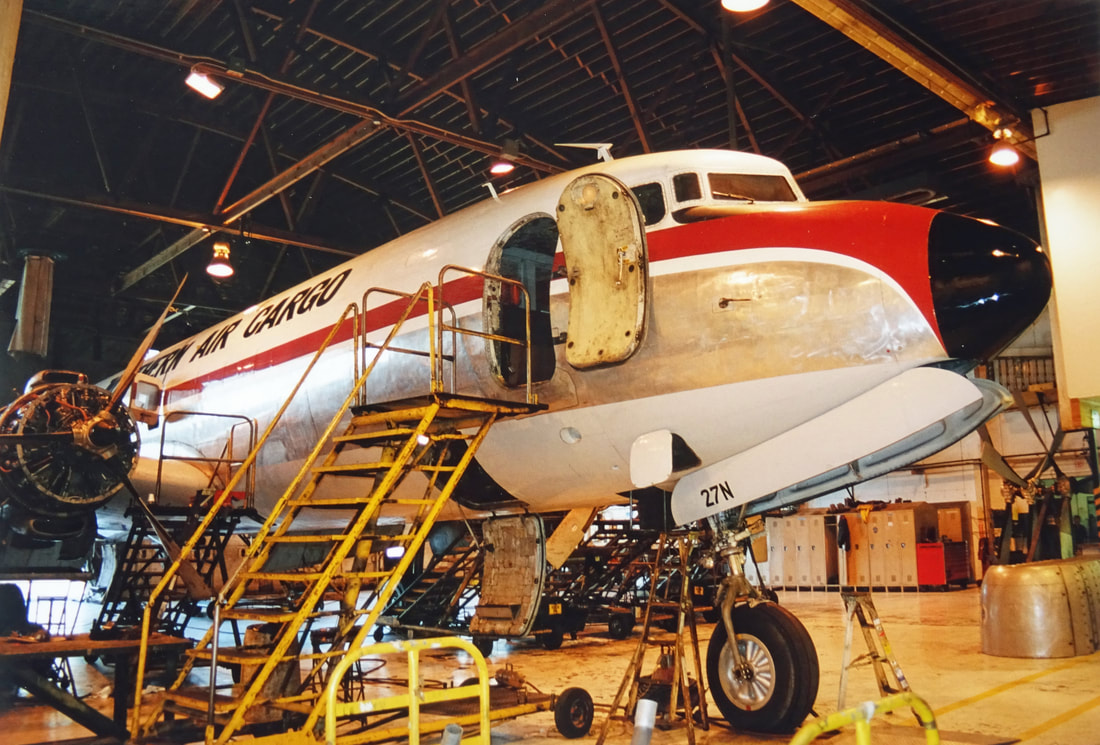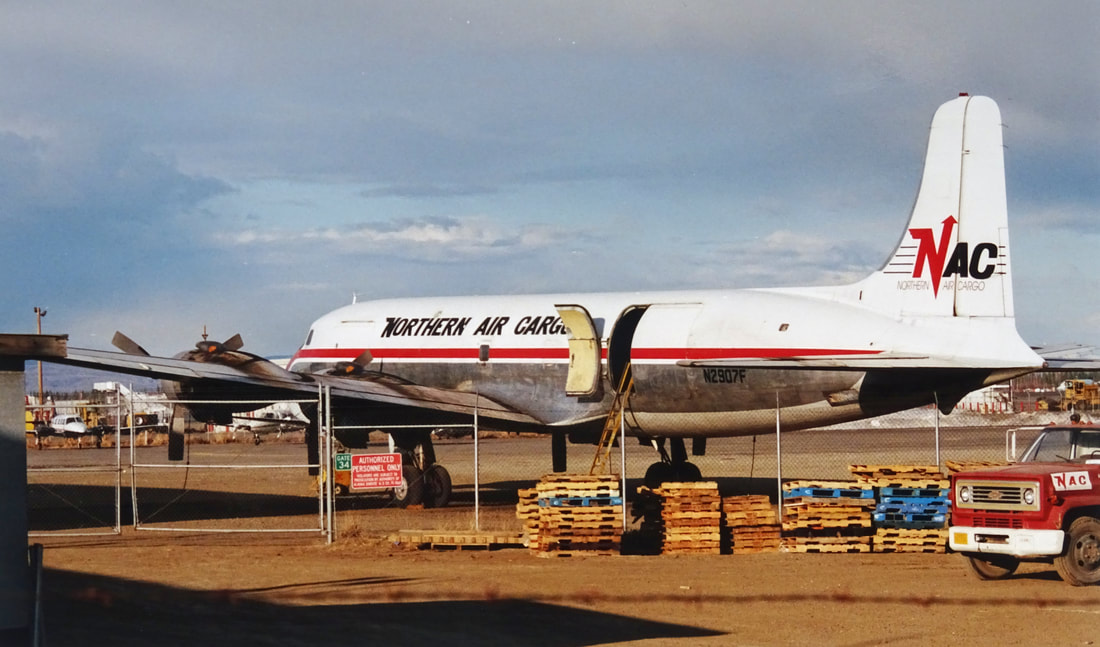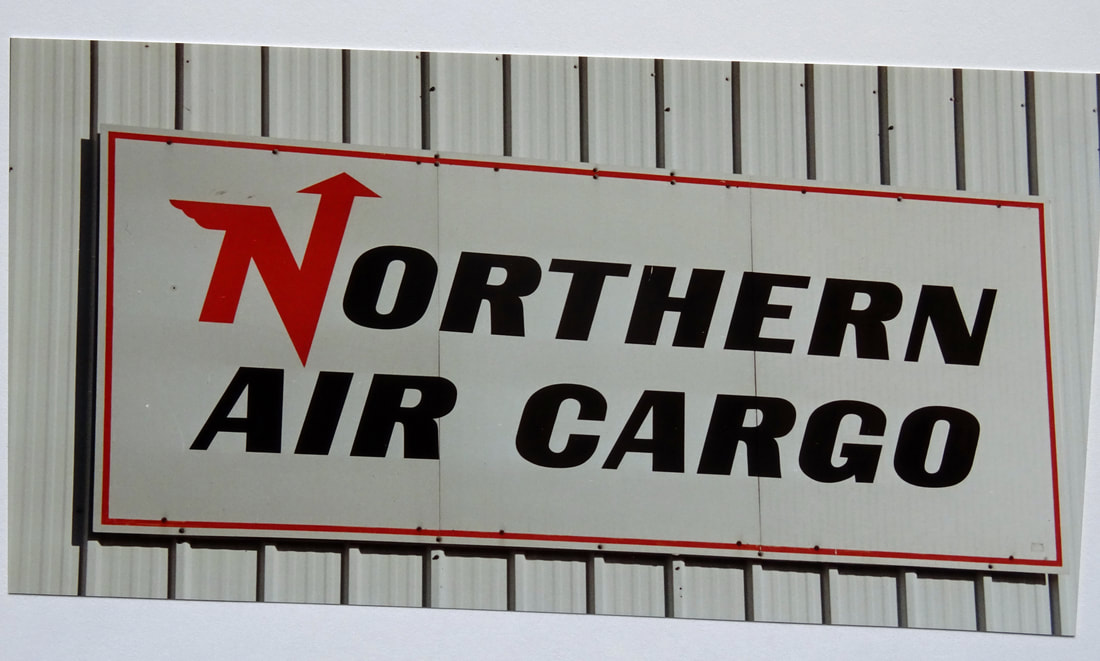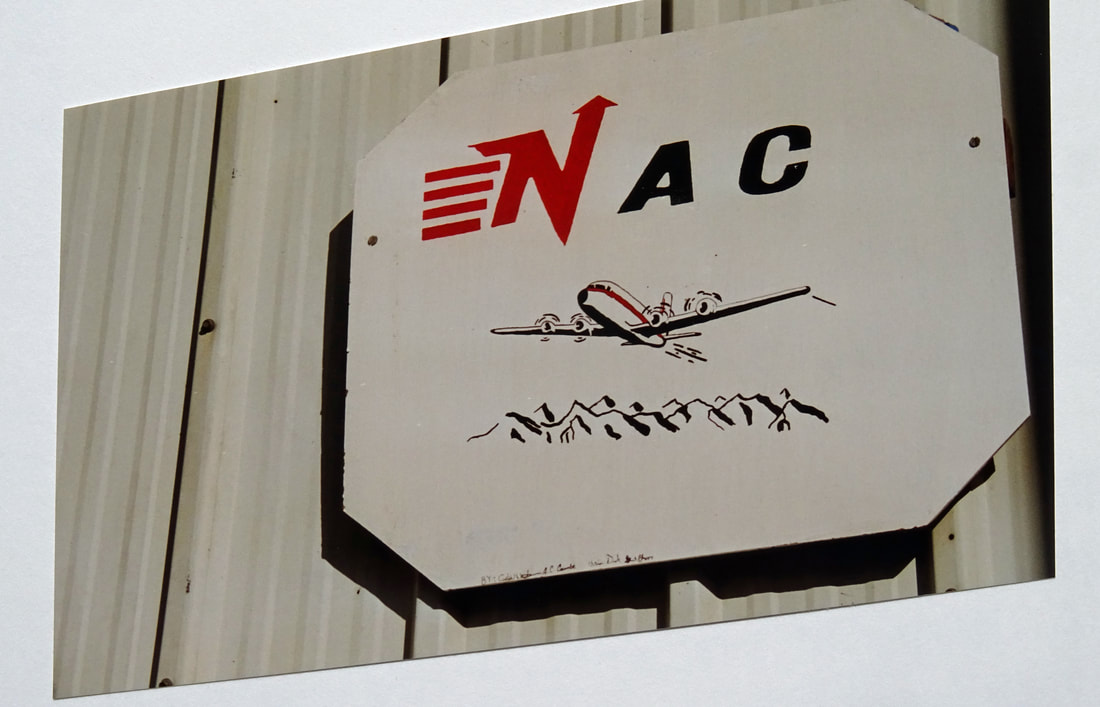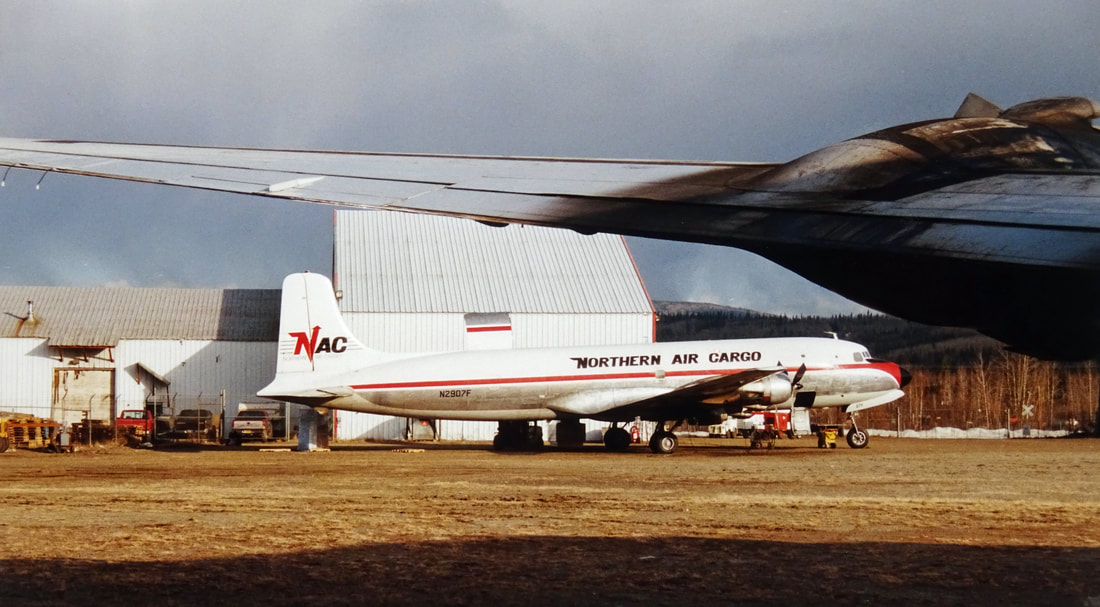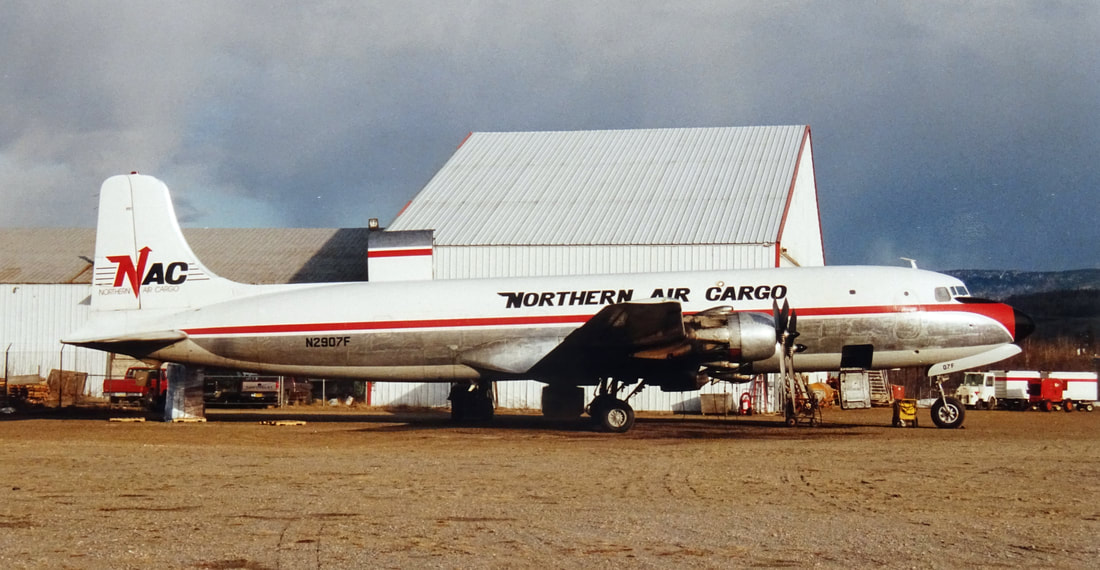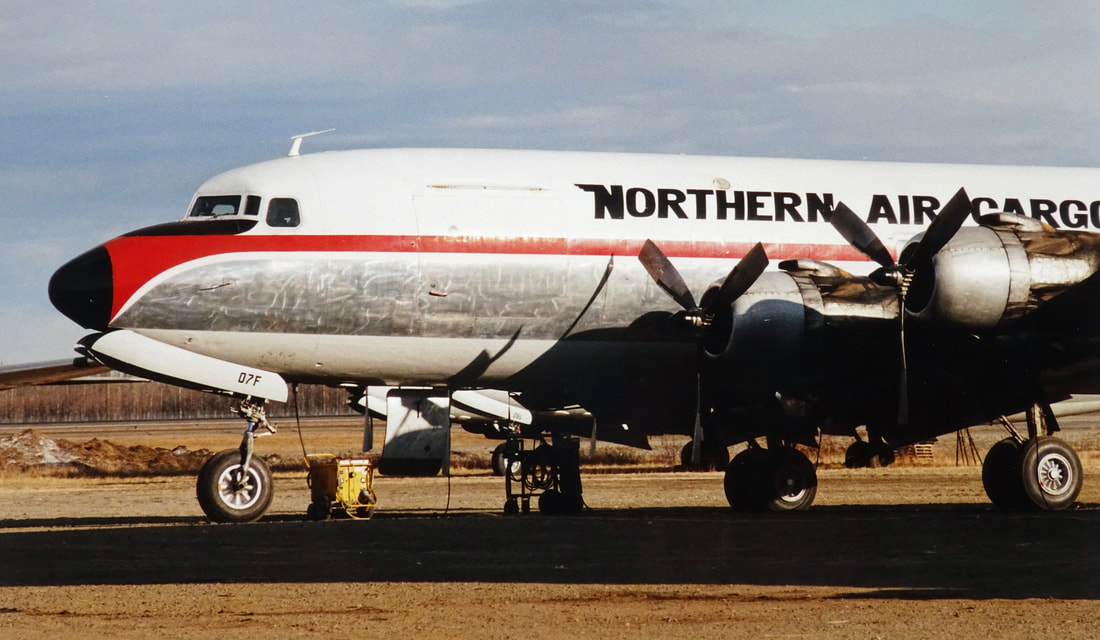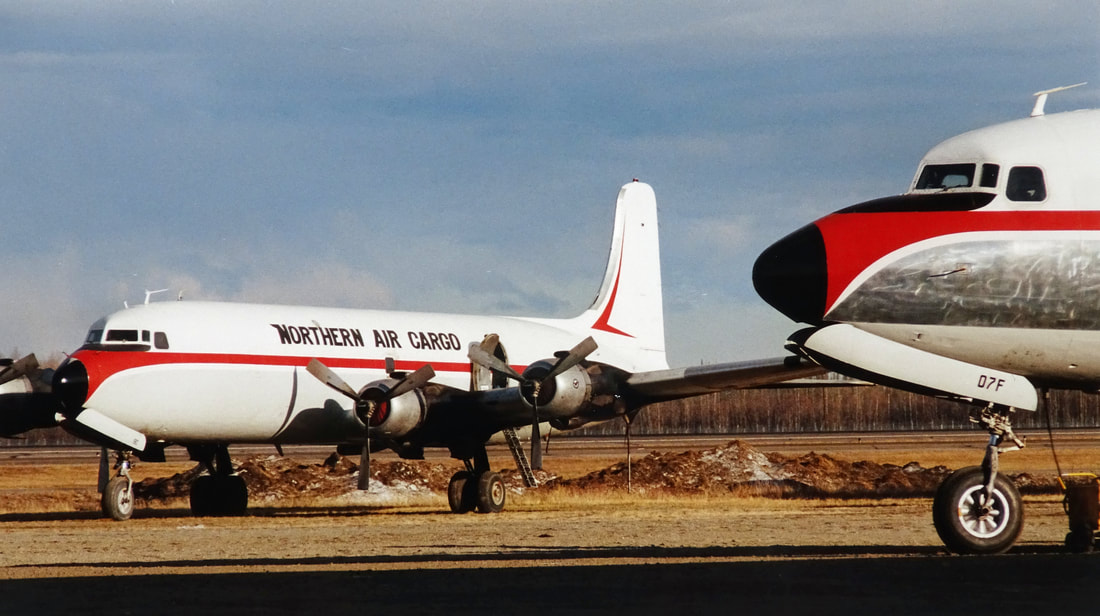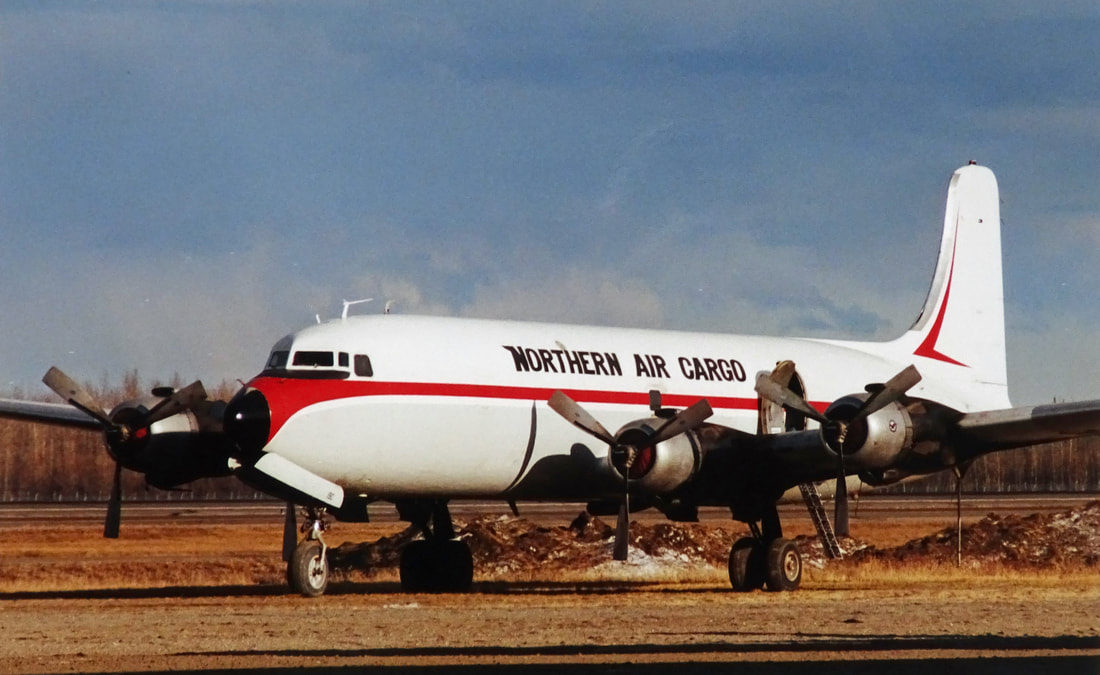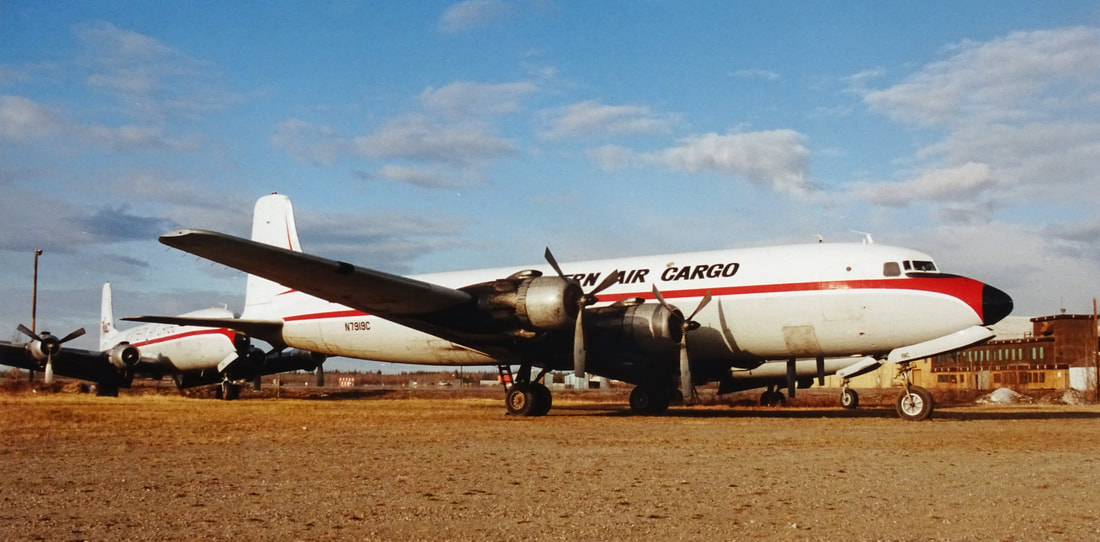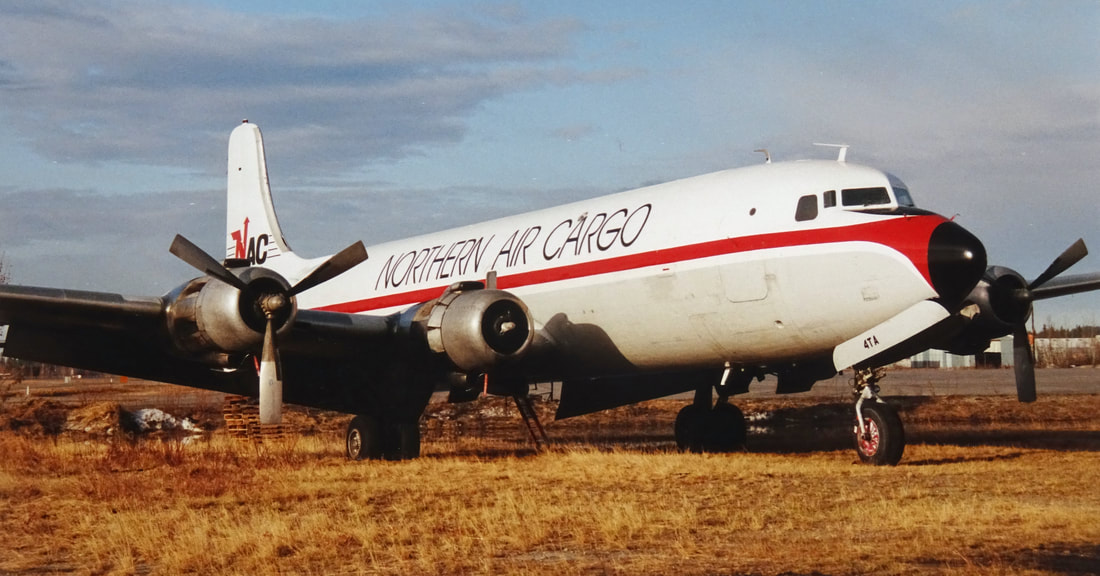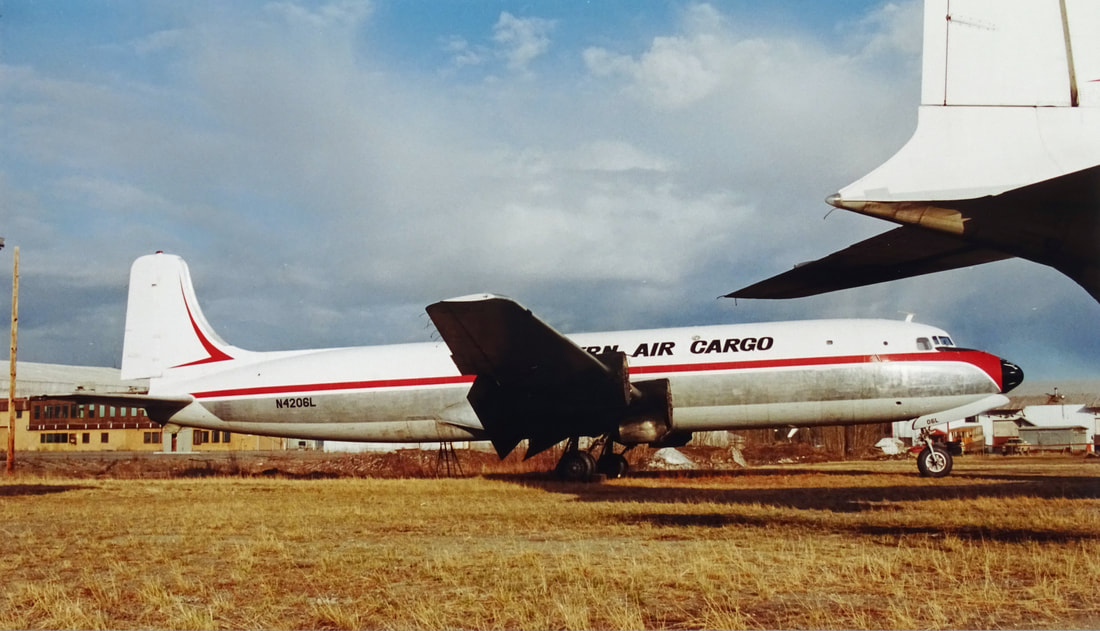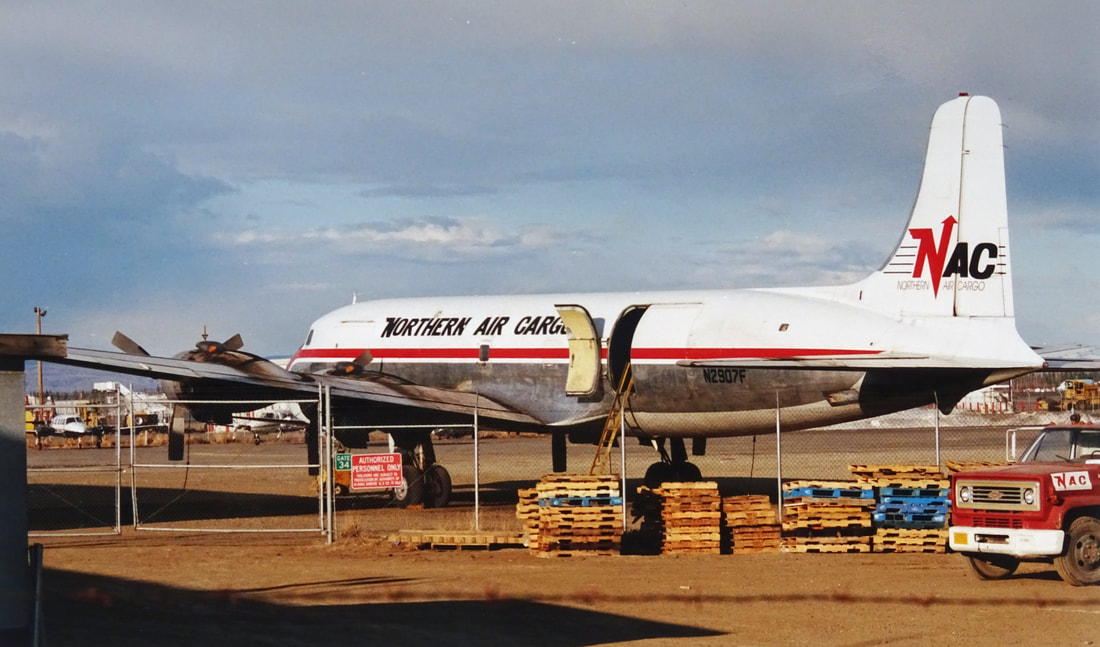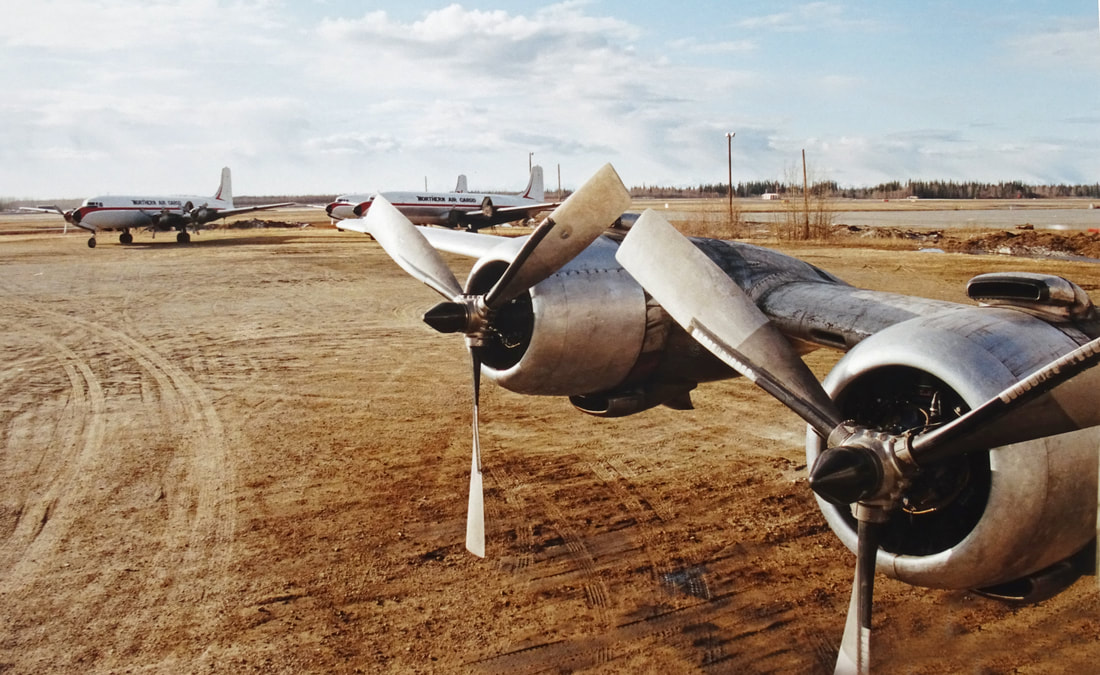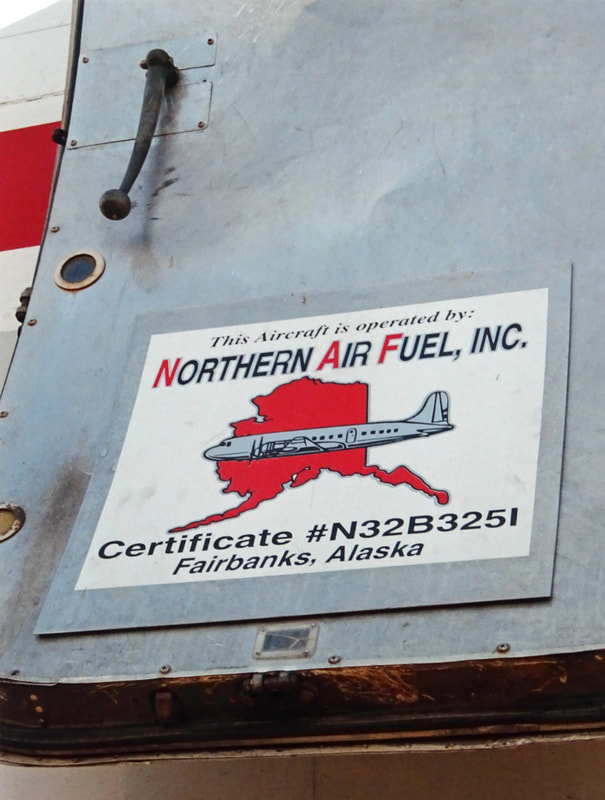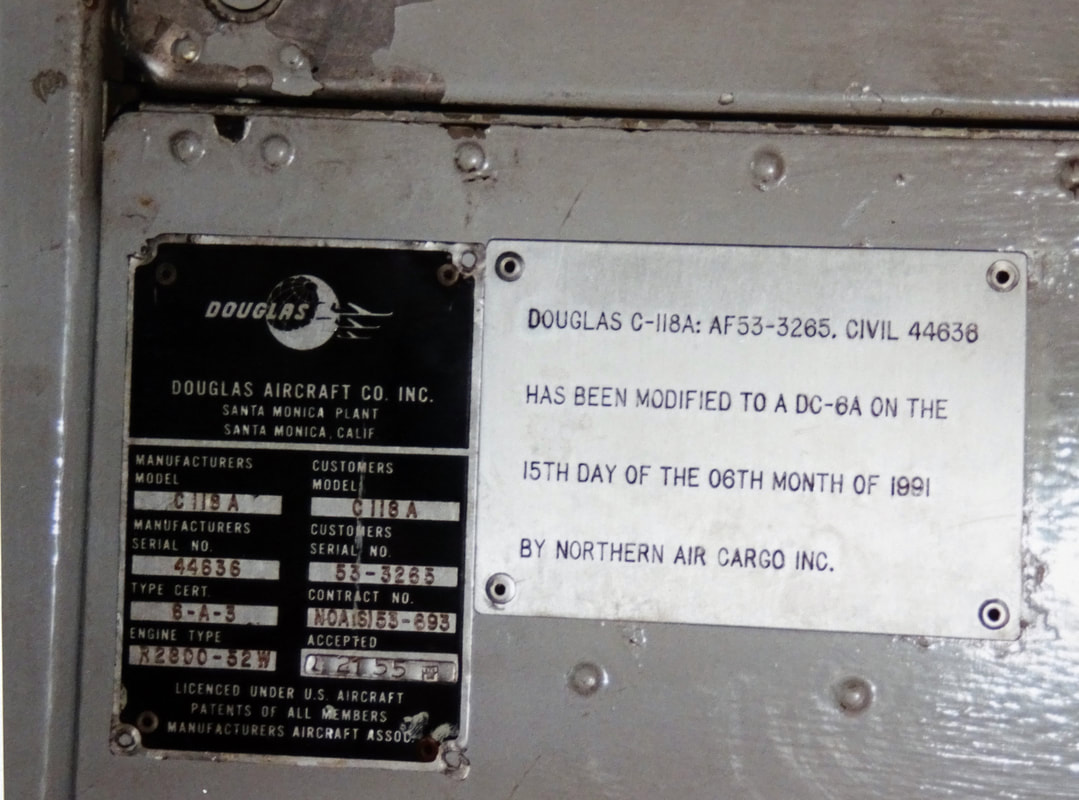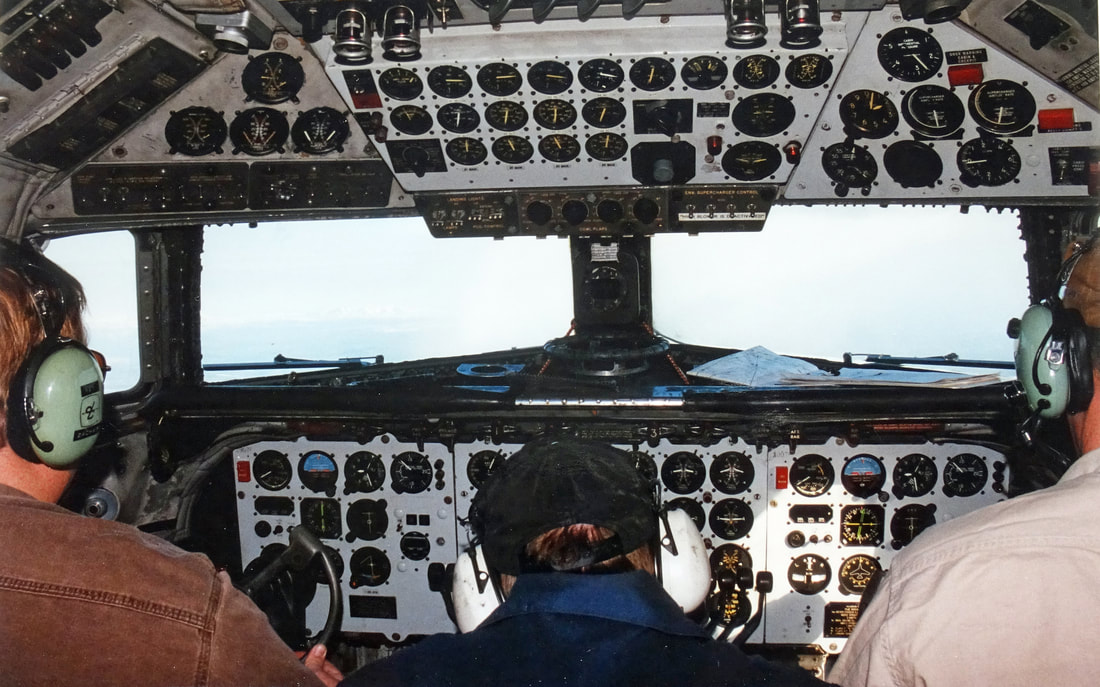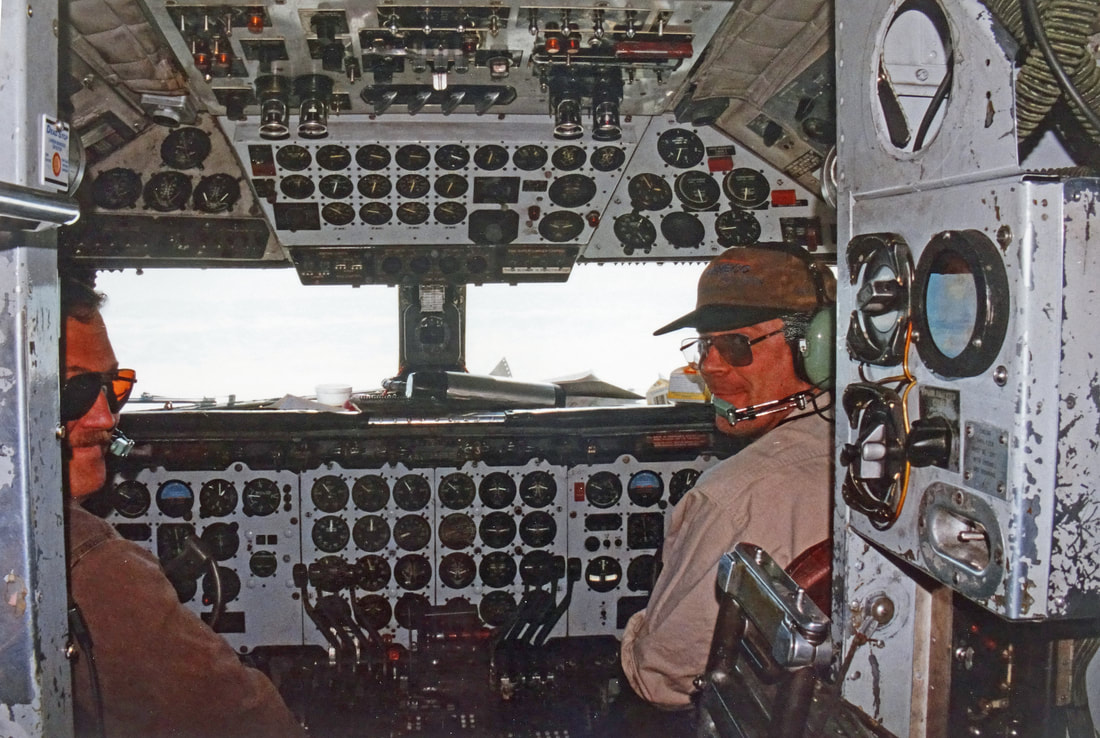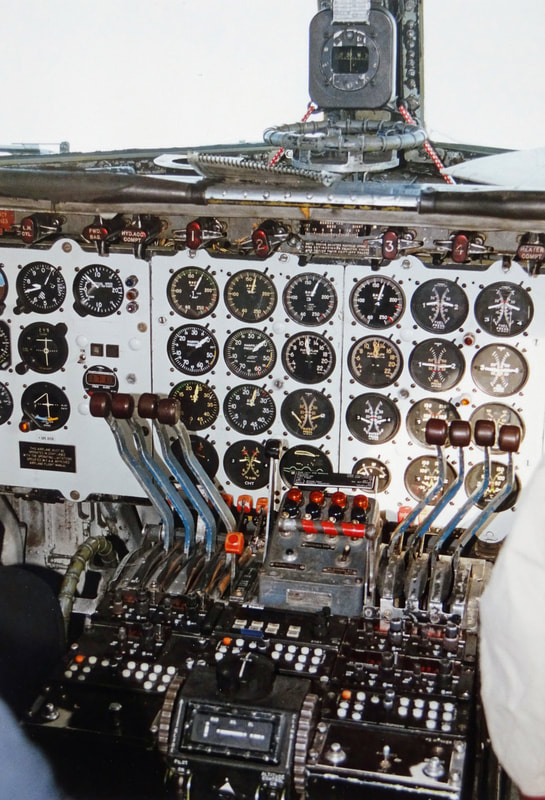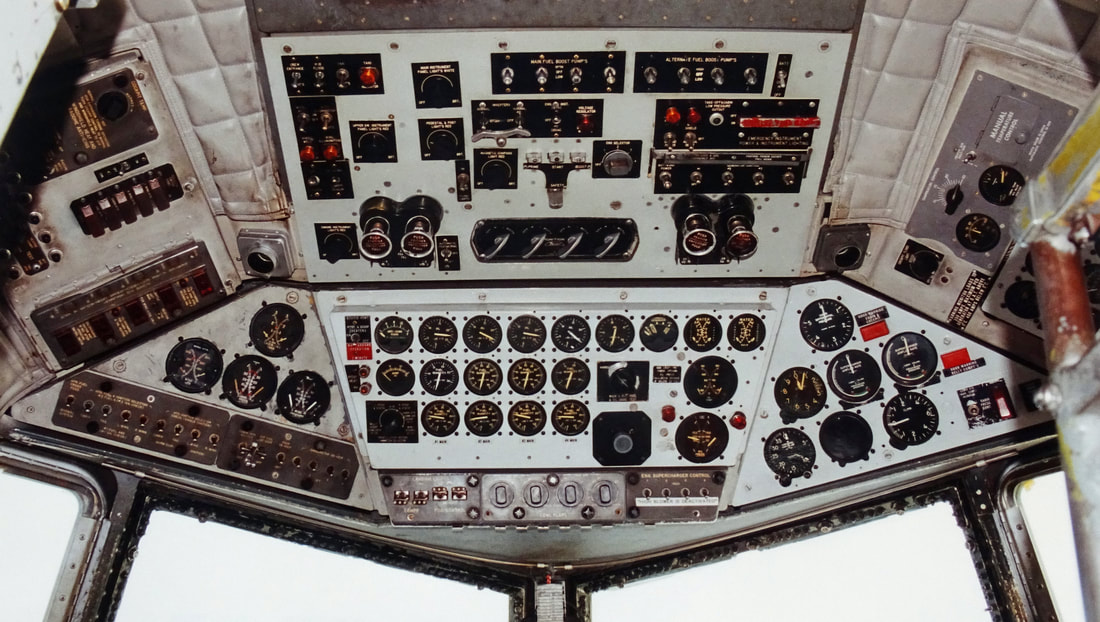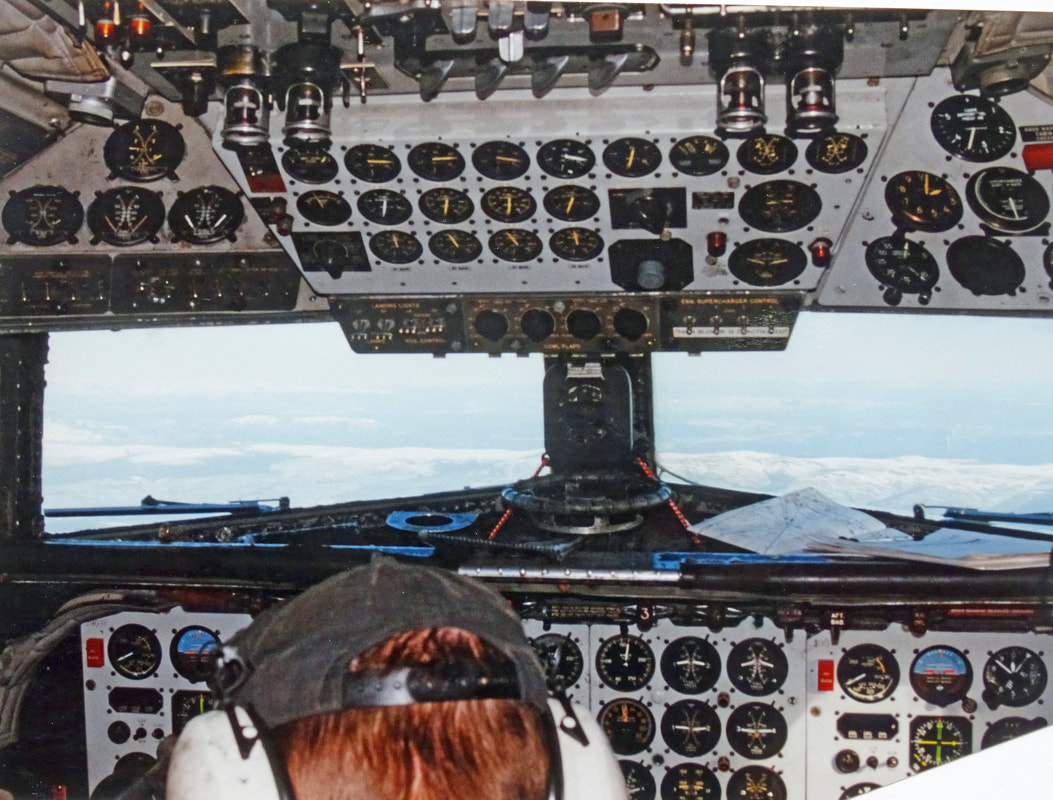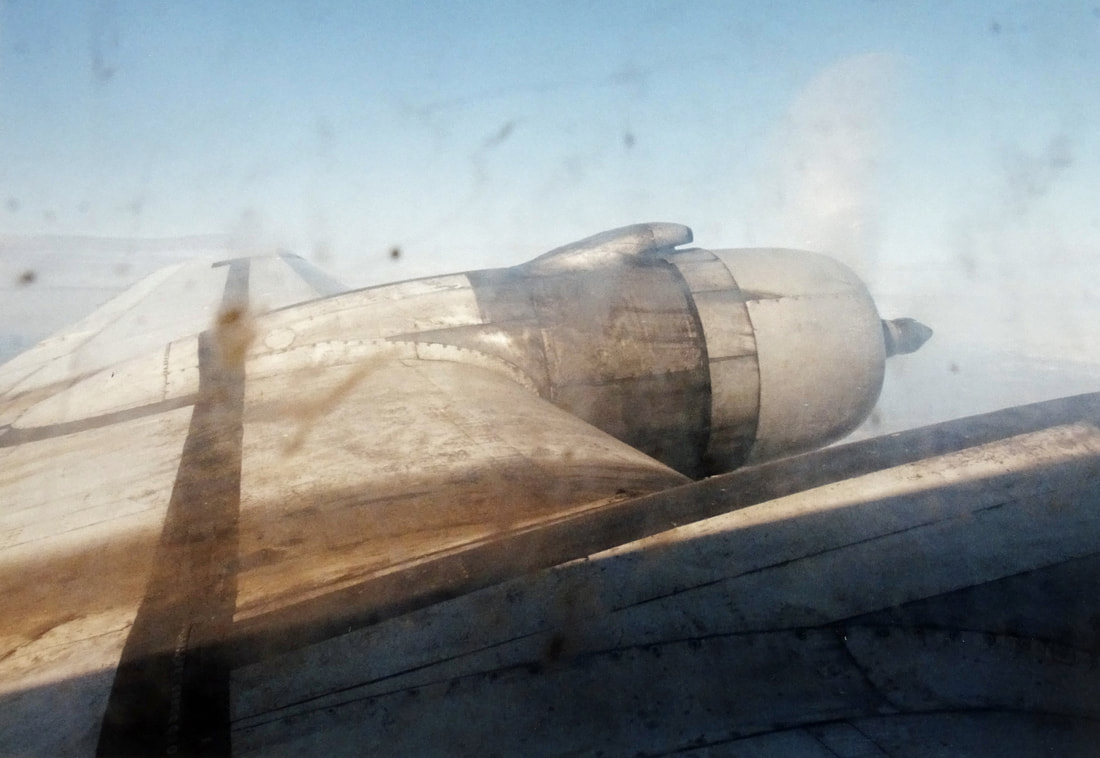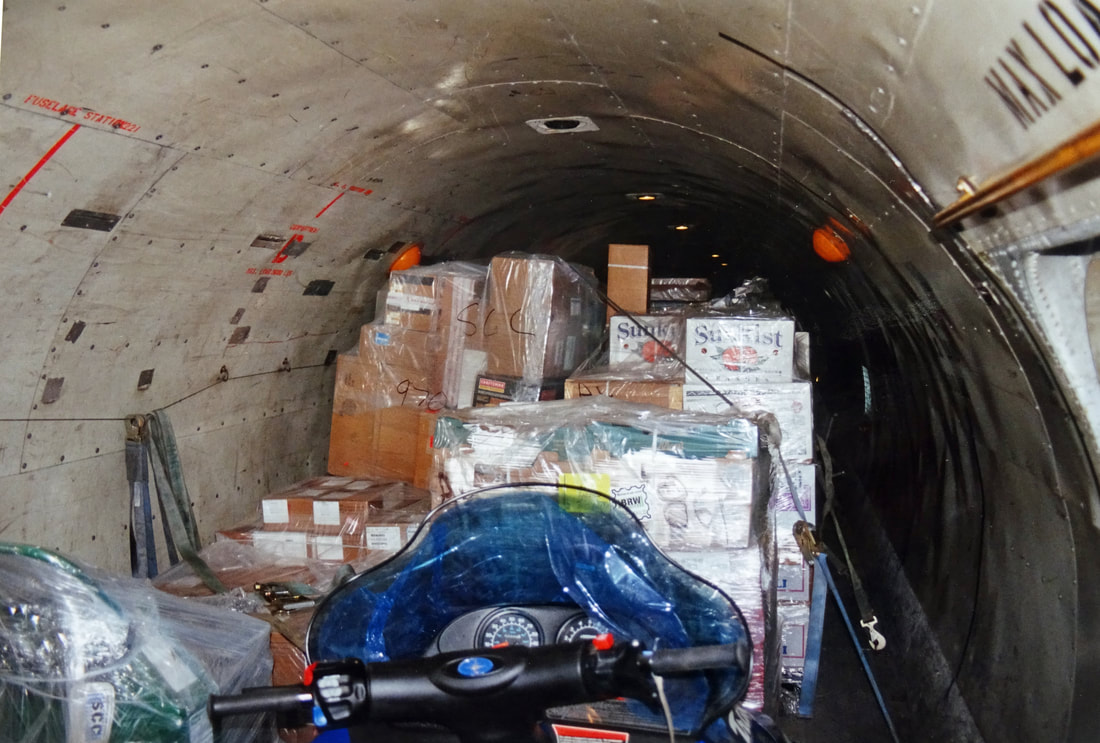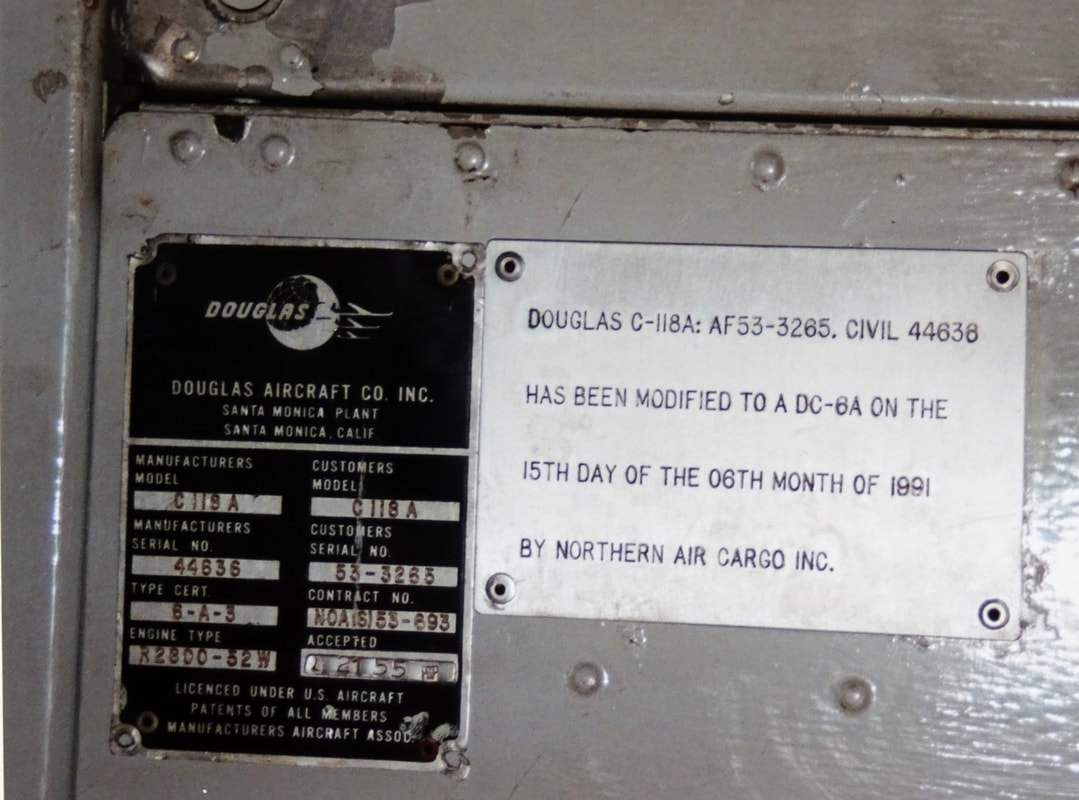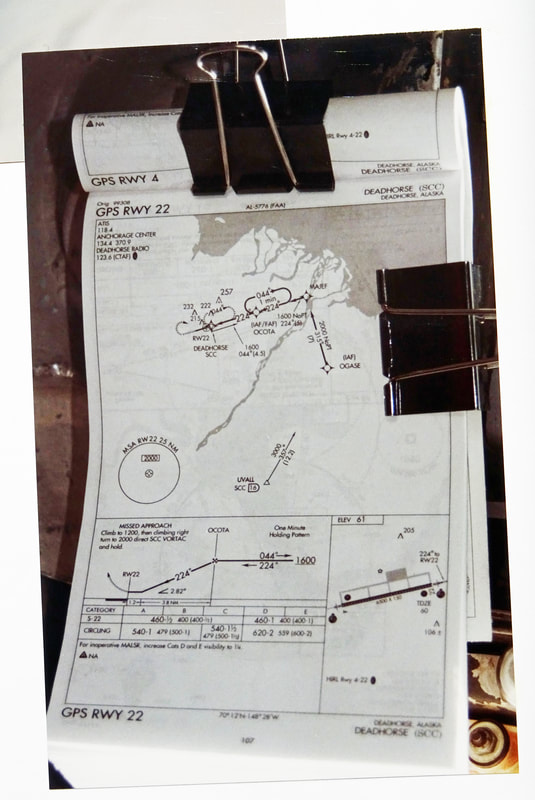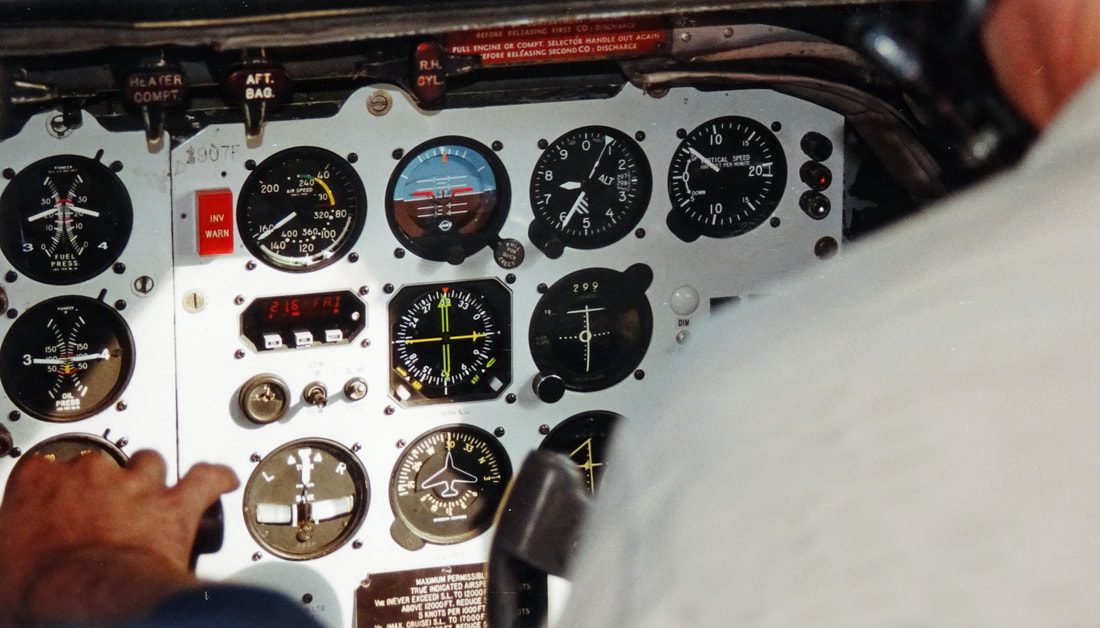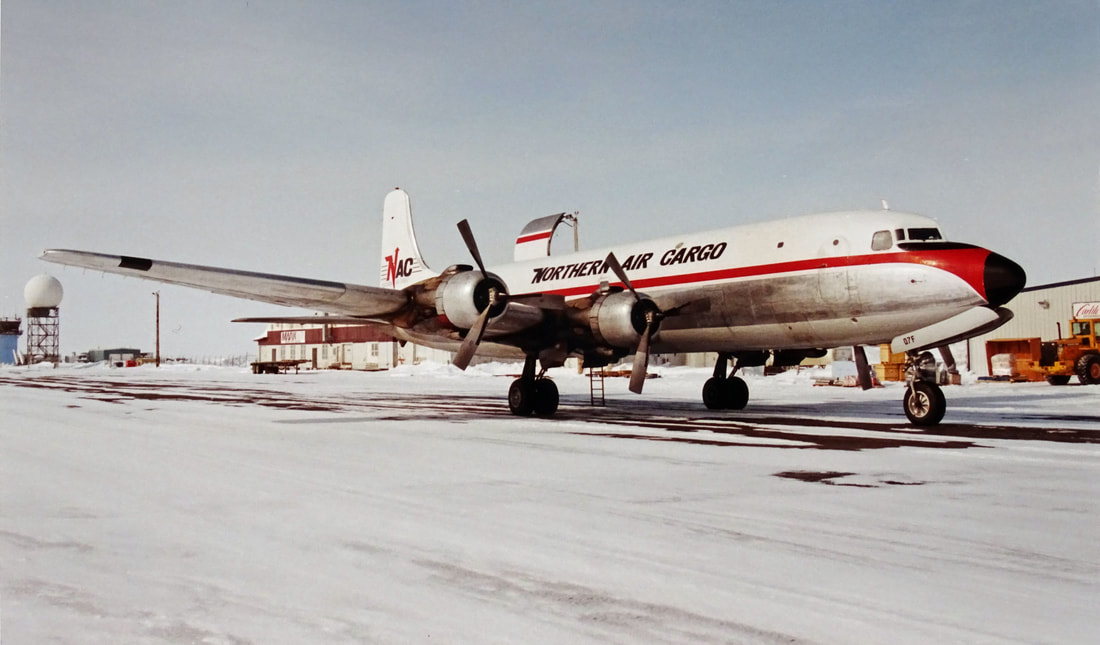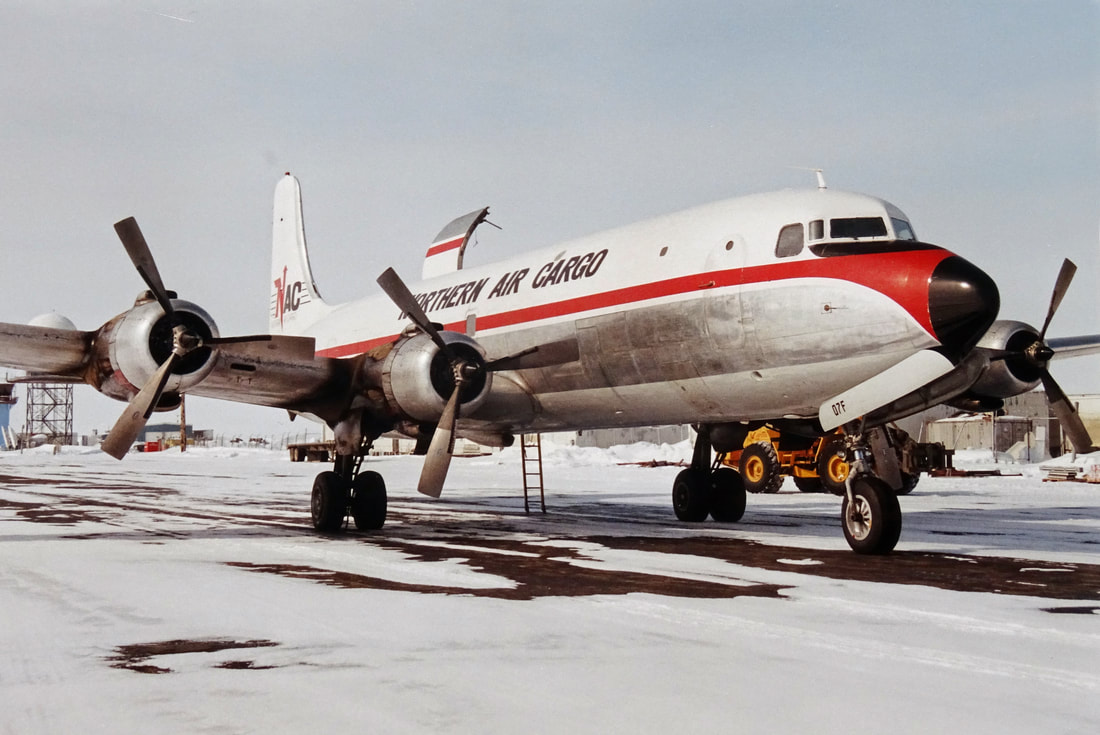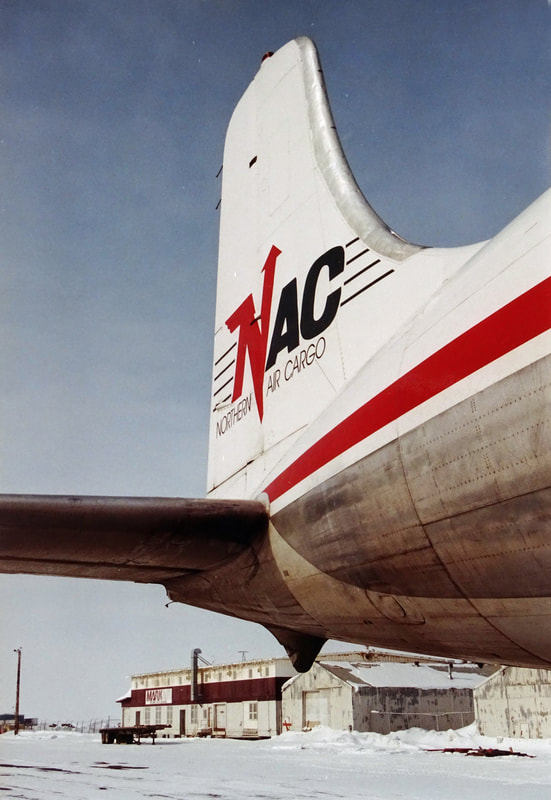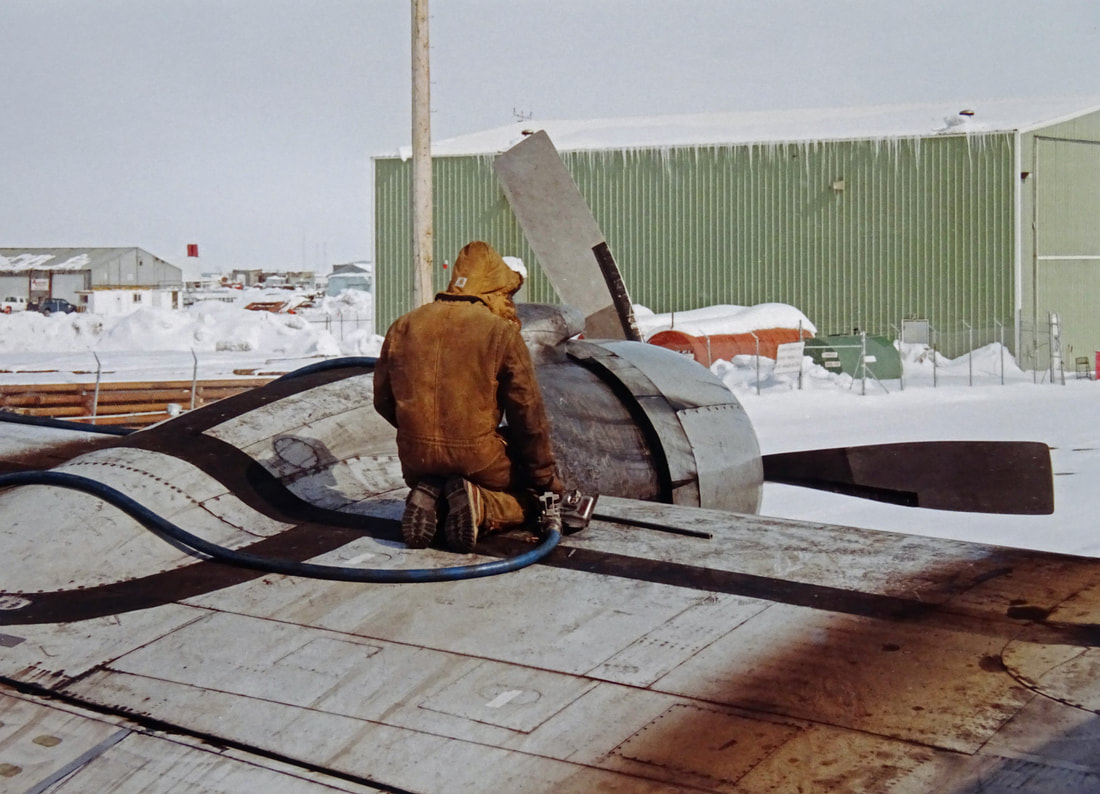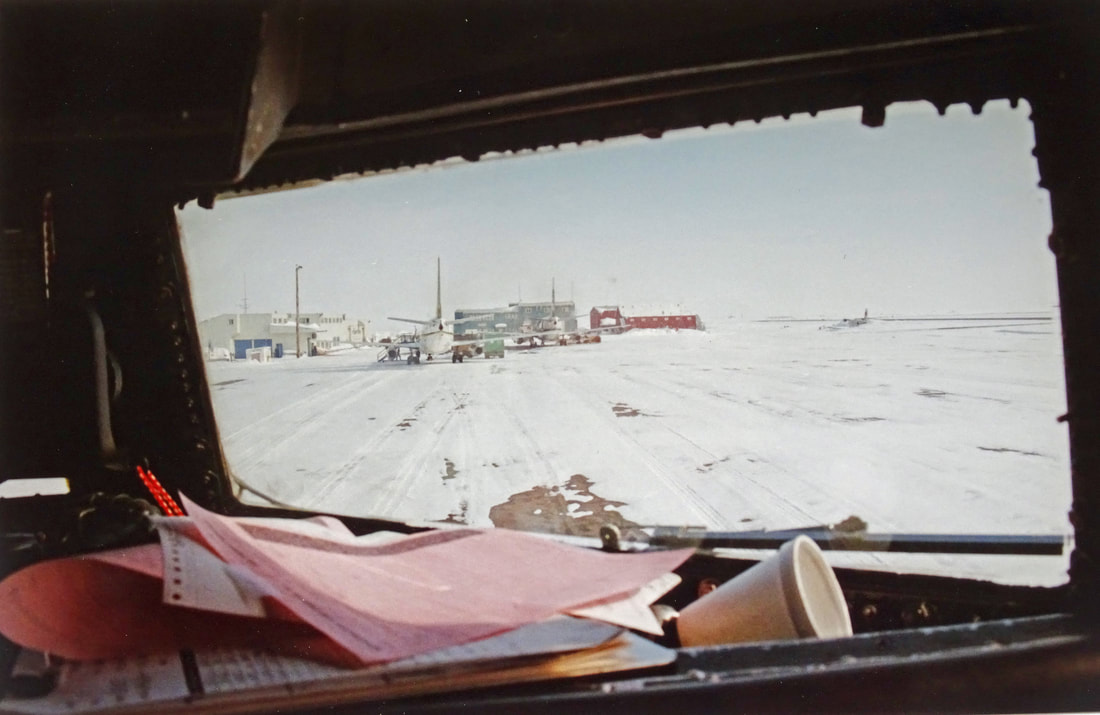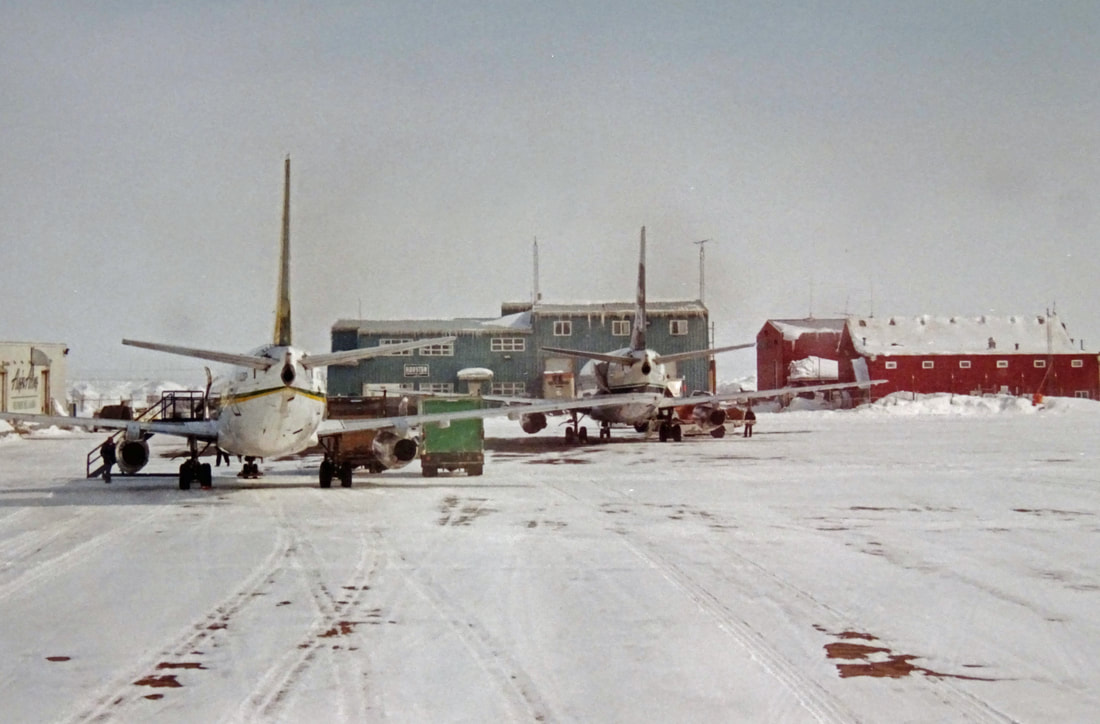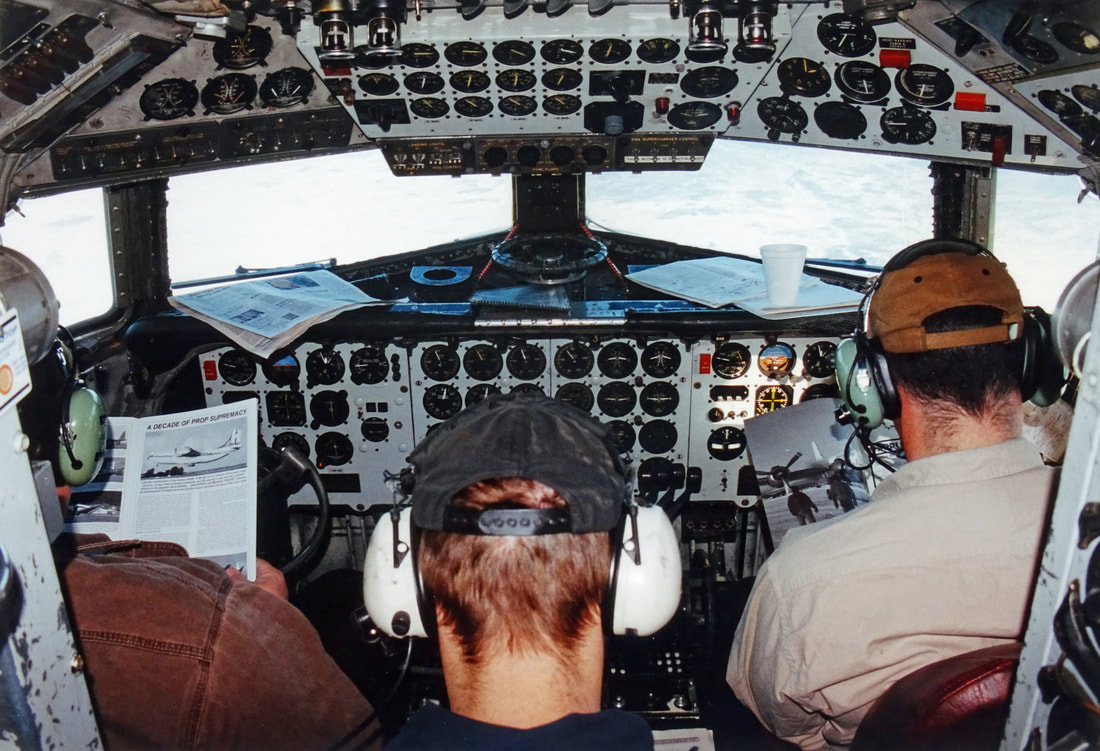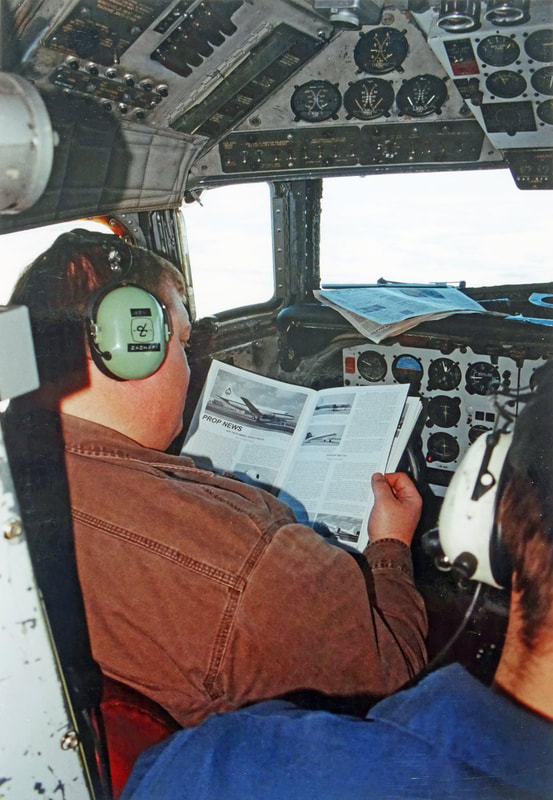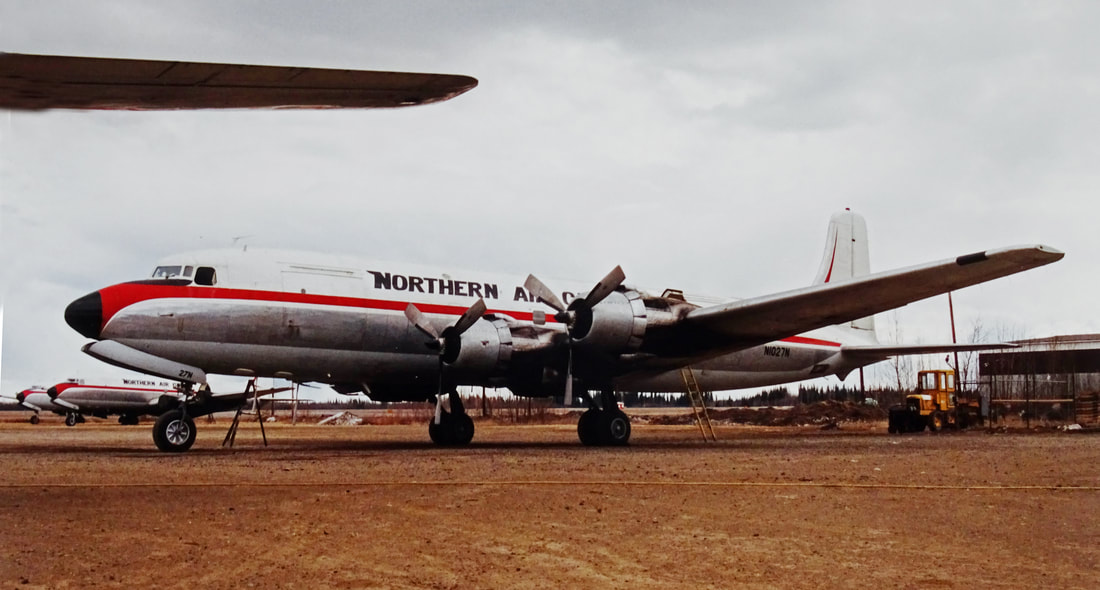Alaska land of the Big-Props
The largest DC-6 fleet at work in the 21st century
Written in May 2000 by Jan Koppen
When working for KLM Cargo, one is always surrounded by the modern screaming jets. Once a while, the need for some aviation nostalgia must be fulfilled. Nowadays, the choice is limited. Fortunately, Alaska is a land with still a good number of operational Big Props. In April 2000, I decided to visit this Greatland.
The pics are digital copies of paper photos, so quality low, but what does it matter? It goes about the experience!
The pics are digital copies of paper photos, so quality low, but what does it matter? It goes about the experience!
Gods best Boeing is the 727.
All Cargo – All the Time
Some airlines carry cargo as a sideline but at Northern Air Cargo they do it for a living. It’s been that way since they moved their first load in 1956. Over the years they have consistently provided customers in Alaska and the Pacific Northwest with a reliable means of air shipment. Originally established as a charter air freight service, Northern Air Cargo pioneered air cargo transportation in Alaska. Using the unique C-82 ‘Flying Boxcar’, they specialised in the delivery of outsized cargo to rural communities on a charter basis. Customers knew that if the cargo would fit in the airplane, and had access to a remote airstrip, NAC would get their load to them … no matter what the cargo. From nuts and bolts to live animals. This ‘can do’ commitment to their customers continues today. Northern Air Cargo operates the largest DC-6 fleet in the world. Besides these propliners the company operates three Boeing 727 freighter jets. NAC serves more than 20 Alaskan cities with scheduled, all-cargo service, plus flagstop and charter flights to many other destinations. Their motto is ‘All cargo – All the Time‘ and judging from the cargo on their ramp at Anchorage and Fairbanks, they really mean it.
They were built to fly and they showed it.
I love how 727's floats before touch-down.
N910AJ on the cargo-ramp.
N190AJ at Anchorage being loaded for her next flight.
Before she entered service with NAC, N190AJ flew with AmeriJet, Dan-Air London and Japan Airlines.
The largest DC-6 fleet at work in the 21st century.
N43872 receiving attention on the NAC's company ramp.
The DC-6 is powered with 5000 hp of tired iron on either side.
Number one was a recently overhauled engine (red cowl flap) still running straight mineral oil until the paint is removed. Which was remembered by Josh Loar at around 100 hrs.
Prop-eye view.
Douglas DC-6A N43872 back at her home-base, Anchorage International, on April 29, 2000.
DC-6 N43872, still manages to look majestic despite being parked amid the aeronautical trash at Anchorage.
N43872 being topped-up with fuel and oil for her up-coming flight.
Checking the oil level on the engines.
Oeps...... we've a problem!
NAC is a prime example of an airline making do with outdated equipment.
Beautiful and elegant, the DC-6!
Once the cargo was off-loaded, N43872 was refueled and scrutinized for any obvious faults.
The cockpit of N43872 as seen from the flight engineers station.
Her switches and controls, worn smooth by the touch of a thousand hands.
In the dingy drabness of the cargo hold.
DC-6 N43872 opens its cavernous cargo door to swallow another load at Anchorage, Alaska.
Inside the 9-ton cargo hold.
N43782 was being loaded-up to the gills, on a day in the last week of April, 2000.
NAC's DC-6's are hard working aeroplanes!
N43872 shows its age and must have quite a life on the clock!
The NAC logo artwork adorns the tail of N43872.
Just relieved of its cargo, NAC's DC-6A N1036 takes time out before reloading for the return trip.
Let me stick my head into the cockpit for a quick look! - You have to be quite a man to fly such planes!
After retirement from the military, N1036F, which was built in 1952 and being originally a C-118A, was sold on the civilian market. During the late 70's she saw service with Northern Air Cargo.
5000 hp of tired iron.
Number four was a recently overhauled engine (red cowl flap) still running straight mineral oil until the paint is removed. Which was remembered by Josh Loar at around 100 hrs.
Unloading inprogress with assistance of a fork-lift truck.
DC-6 N1036F being prepared for her next mission, in April 2000, against the backdrop of the 5400-ft Chugach Mountains.
NAC's Anchorage based DC-6's are hard working aeroplanes.
N1036F lounging in the sunshine at Anchorage, waiting for another cargo.
The Northern Air Cargo livery is, in my opinion, one of the classiest airliner liveries ever.
Former Kar-Air DC-6B OH-KDA now flies for Northern Air Cargo as N867TA.
The Douglas DC-6 is a piston-powered airliner and cargo aircraft built by the Douglas Aircraft Company from 1946 to 1958. Originally intended as a military transport near the end of World War II, it was reworked after the war to compete with the Lockheed Constellation in the long-range commercial transport market. More than 700 were built and many still fly today in cargo, military, and wildfire control roles.
The DC-6 was known as the C-118 Liftmaster in United States Air Force service and as the R6D in United States Navy service prior to 1962, after which all U.S. Navy variants were also designated as the C-118.
The DC-6 was known as the C-118 Liftmaster in United States Air Force service and as the R6D in United States Navy service prior to 1962, after which all U.S. Navy variants were also designated as the C-118.
Classic lines of the big 'Doug' are so evident in this full frontal of this Northern Air Cargo DC-6.
Tail shot with the new NAC logo.
Special NAC spinners!
Note; - The rubber bonnets secured over the pitch change mechanism (PCM) with a giant jubilee clip. These would help keep the oil temperature up which enabled the pitch movement (Info supplied by Bill Griffith).
Northern Air Cargo has adopted this new tail logo on its DC-6 fleet.
Looks like a museum ramp! Crystal clear image on a gorgeous day in April 2000.
So love this iconic majesty
N99330 sitting pretty under a timorous April sun.
The SIX has big flaps and rudder.
Apron scene in front of NAC's maintenance hangar at Anchorage International airport, on April 29, 2000.
Time-less view!
N1377K is a particularly handsome example
Exceedingly large, black 'Northern Air Cargo' titles are well and truly emblazoned on the fuselage.
Close-up of the forward section of a NAC's DC-6, in-between cargo flights, at the company's ramp.
Part of the DC-6’s ‘stone-age’ flight deck
Unfortunately, the hallmarks captured so well by the lens, also spelled the doom of these geriatric propliners.
Neat line-up of NAC DC-6's at Anchorage.
Number 1 and 2 of NAC's DC-6A N99330, neatly frames sistership N7780B, in front of NAC's maintenance hangar.
Northern Air Cargo's DC-6A N7780B is sporting Northern Air Fuel titles at Anchorage, on April 30, 2000.
N7780B was sold by Northern Air Cargo to Everts Air Fuel in June 2005.
This DC-6 was ordered by Riddle Airlines in 1957 but the airframe was not taken-up. She flew with Hughes Tool Corp. from November 1957 until December 1973 when it was withdrawn from use. The airplane had an limited career with later owners but finally was bought by Mr. Robert D. Sholton, the owner of Northern Air Cargo.
This beauty has the classic lines of the yesterday-years Propliner.
The Monster.
NAC's push-back truck is a great looking brute.
A busy hangar scene, inside the nostalgic NAC's maintenance hangar, at Anchorage.
Typical maintenance of round motors.
DC-6 N1027N is seen here enjoying a C-check at NAC's hangar at Anchorage during April 2000.
Nose-on-view of N1027N.
Meticulous maintenance keep'em flying.
Note; - the big black oil cooler.
Thé office, inside the hangar.
Clearing-up a nagging engine problem.
Bill Griffith told me the following; - The rubber bonnets secured over the pitch change mechanism (PCM) with a giant jubilee clip. These would help keep the oil temperature up which enabled the pitch movement.
After spending a couple of days at Anchorage I left for Fairbanks. Here I was invited by Northern Air Cargo to ride aboard their DC-6 on their regular schedule to Point Barrow and Deadhorse and have a closer look at their cargo operation.
NAC N2907F awaits her load at Frairbanks, on the morning of May 02, 2000, prior to operating the 'Yukon-60' service to Barrow and Deadhorse.
Northern Air Cargo DC-6B is seen here being prepared for her cargo flight to Point Barrow and Deadhorse, on May 02, 2000.
Flight in progress.
N2907F bright livery is still gleaming in the timorous spring sunlight.
Once the pride of KLM Royal Dutch Airlines, DC-6 N7919C now rests beside's the NAC Cargo shed at Fairbanks airport.
Man-made beauty!
N7919C lurking in corner of Fairbanks airport, on May 02, 2000.
Dormant Douglas Swingtail DC-6, N344TA of NAC, languishes at Fairbanks.
Engineless, even sitting, with faded, chipping paint, this DC-6 is also still beautiful.
Spit and polish! - This immaculate Northern Air Cargo DC-6 was used operated flight 'Yukon-60".
Apron scen at NAC's Fairbanks base depicting four of the airline's DC-6's.
Barrow-bound
Checking in as a fourth member of the crew early-moring, our captain proved to be Ken Zachary. A veteran who had learned to fly DC-3s at the age of 19 ! First Officer was Joe Holland and the Flight Engineer was Artic Wikle. Our full-load was described on the manifest as hard cargo and foodstuffs and include several skiscooters and a 3000 lbs. Generator. Our aircraft for the flight was N2907F (c/n. 44636), built in 1955 as a C-118A for the US Air Force. It went to Davis-Monthan AFB, Arizona, for storage in the mid-1970s, before being auctioned off n May 1976. After a period of inactivity at Tucson it was converted to DC-6A standard and registrated to Time Aviation Services Company in 1978. ‘2907F’ was bought by Northern Air Cargo in March 1991. Up till April this year it had logged a comparatively low 31.530 hours since new.
By 08.30 local time, loading and all other departure formalities were completed and 10 minutes later the four P&W Double Wasps were succesively wounded-up amidst clouds of exhaust. Fairbanks ground control gave us our squawk number, taxi and flight clearance. Our routing was to take us out over the Tanana River and then onto Barrow via the Bettles intersection. We taxied out with the familiar squeaking of brakes to the run-up area. Following a lengthy check of all engines, ‘Yokon 60’ was cleared for take-off on 19R. Ken rotated the DC-6 at 120 kts and we established a steady climb at 500 ft/min at 160 kts with full 2,400 rpm given by each engine as the DC-6 banked gently over the Tanana river to establish on a heading of 299 degrees, on track for Barrow. After climbing gently for about 25 minutes, we levelled off at 10,000 ft and settled into a cruise of 185 kts IAS with the engines throttled back to 2,200 rpm and the fuel flow to each of the roaring monsters eased to about 520 lb/hr.
N2907F was sailing towards Point Barrow on a 299 degrees heading.
Ken and Joe at the controls of N2709F.
'Yukon-60', is Barrow-bound.
The Brooks mountain range is ‘on the nose’.
The late April weather in Alaska is superb. The winter is about to thaw and the lakes are still ice-covered. The sky is blue, the air clear. The snowy whiteness of the mountains scenery is breathtaking. The Brooks mountain range is ‘on the nose’ and after what seems an age it slips below, just a couple of thousand feet away.
Fuel-flow during cruise to each of the roaring monsters is about 520 lb/hr.
The atmosphere in the cockpit was relaxed and topics such as women, guns, hunting and how to obtain a new set of Beech-18 wings were the discussion items. Finally we flew into a fairy land of whiteness – the Northern Slopes. We tuned in to the Barrow weather – clear skies with a 15kt wind blowing the fallen snow into a kind of haze across the airfield. Oh yes, ... and an outside air temperature of –21 degrees Celcuis! At 3,000 ft the landing checks were completed and with an approach to runway 24 established, the flaps were set first to 20 degrees then 30 degrees as the undercarriage was lowered with a loud, but reassuring, clunk and three greens in the cockpit. With 6,500 ft of runway we rolled smoothly to a slow taxi speed and were arrived, deep in polar bear country. On went the iso-overalls, open went the side cargo door and unloading began. The crew virtually did the whole job and in those conditions there was every incentive to get finished quickly. I could only manage the briefest excursion on the ground.
The ride to Deadhorse
With the loading virtually complete at 12.15, Ken and Joe set about the pre-flight preparations and checks. Artic closed the big rear cargo door and ensured that the cargo was well secured. The four P&W R-2800 Double Wasps are indepently started without recourse to a ground power unit and are started in the order 4, 3, 2, 1, number 4 being the starboard outer. Up in the cockpit everything was looking good so Ken commenced the start-up with a burst of throttle and a squeeze of the starter switches, then a pause before switching the ignition to ‘both’ and depressing the primer switch. With a whirring noise the prop blades turned over, the engine coughed and wheezed and with a big puff of exhaust sprang to life. With little trouble 3, 2 and 1 followed and they ticked over at 800 rpm using first primer fuel, then the mixture increased as the primer was reduced. After we received our clearance from air traffic control it was time to taxi to the end of runway 06 for our 200 mile ride to Deadhorse. Just a fraction of Barrow’s 6,500 ft runway passed beneath the DC-6 wheels before rotation. Our ascribed cruising level of 7,000 ft was reached after a sweeping left-hand turnout. After some half an hour in flight we started our descend and turned right to Ocota beacon where we should be at 1600 ft. Besides the field the Trans Alaskan pipeline came into into view far too soon.
N2907F being unloaded at Deadhorse.
This stunning photograph help capture the essence of the lost age of the yesterday-year Propliners.
In the Artic there are still signs of the once Alaskan indepent Markair, as here on a Deadhorse cargo shed.
Artic at work in sub-zero temperatures.
Harsh operating conditions are experienced by the airline operators in the inhospitable continent.
Other Deadhorse visitors were an Alaska Airlines Boeing 737-200C and British Petroleum Boeing 737-200 N736BP which is operated by the Atlantic Richfield Company.
Back home
Just twenty five minutes after the Douglas arrival, ‘9027F’ had been refuelled, catered and the uplifted cargo properly strapped, we were cleared for runway 22 and minutes later we already climbed to 10,000 ft. The food Joe had brought with him was excellent. Tuna fish sandwiches, a choice of fresh fruit and a fine selection of soft drinks. What a difference with the usual coach-class snack onboard the big Airliners! Half-an-hour out from Fairbanks the crew prepared for the descent and approach to runway 19R. We were established as number two land behind the all metallic Brooks Fuel DC-4 N90201. As we called finals, I took the chance to take a last look at the wide array off propliners based at Fairbanks airport, before we touched down at 14.20. Exiting the runway we taxied back to NAC’s gravel ramp, at the end of what had been just another day’s work for Ken, Joe and Artic, but one of most memorable aviation experience for their fourth crewmember.
'Propliner-magazine' onboard a real Propliner! - "This is really a cool magazine according the entire crew".
Look, who's there? - N1027N, which was in deep maintenance in the company's Anchorage hangar
a couple of days ago , was present at Fairbanks, on our return from Deadhorse.
a couple of days ago , was present at Fairbanks, on our return from Deadhorse.
Sincere thanks are due to Ken, Joe and Artic who were letting me witness the Alaskan way of cargo operations.
- The End -
